Archive for the 'Africa' Category
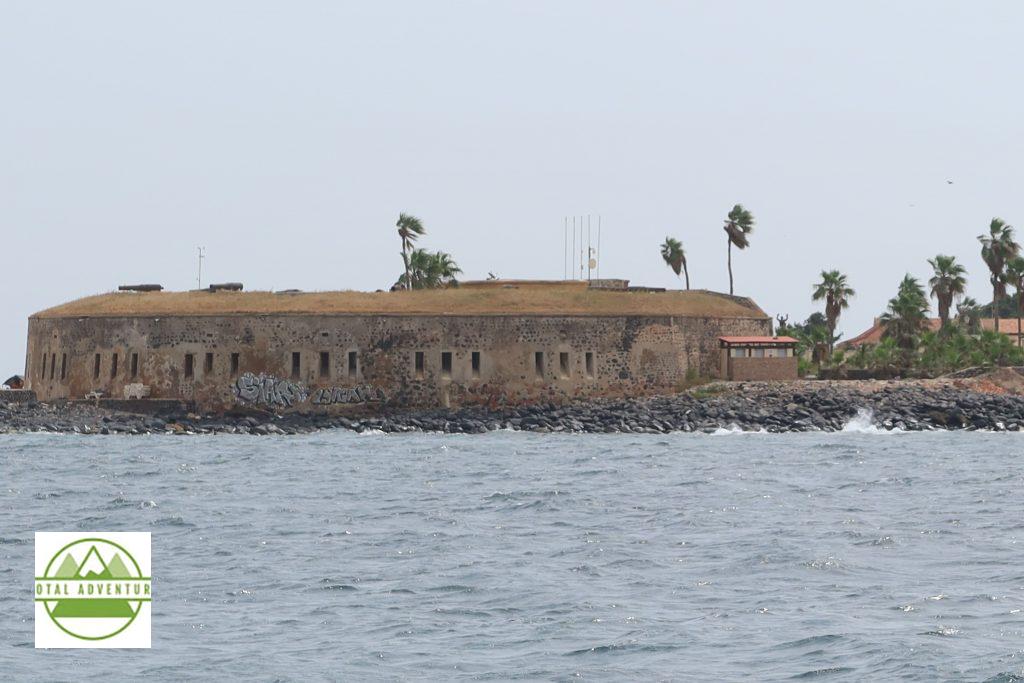
TotalAdventure landed in Dakar Senegal on November 15, after a long flight across the African continent. On Thursday afternoon I flew Skylink from Antananarivo to Johannesburg where there was a 10 hour layover, spent in a lounge ( for pay) before boarding ASKY from Johannesburg to Lomé Togo with a stopover in Kinshasa,Congo. At Lomé I changed planes for the 3 hour flight to Dakar. In the next TotalAdventure Magazine article, I will show the entire air voyage from North America to Asia to Africa and then Europe.

Senegal is an Islamic nation ,with much French influence from colonial times, speaking French and Wolof. While many are pious, the atmosphere is relaxed, with people free to practice their own ways of life. The nation transitions from the edge of the Sahara in the North to humid jungles in the South. Dakar is right in between those zones with a mild oceanside climate. It is the Westernmost point in all of the Eurasian and African landmasses.
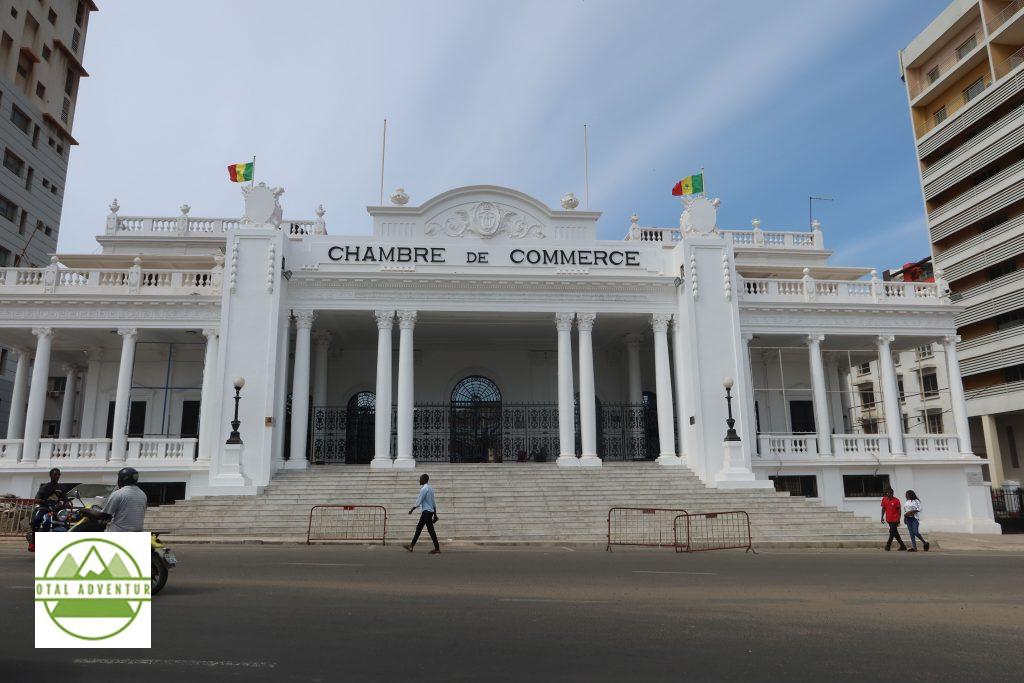
With natural resources ,an educated city population and good air and sea ports, business is connected with the rest of the world – France, the USA and China.
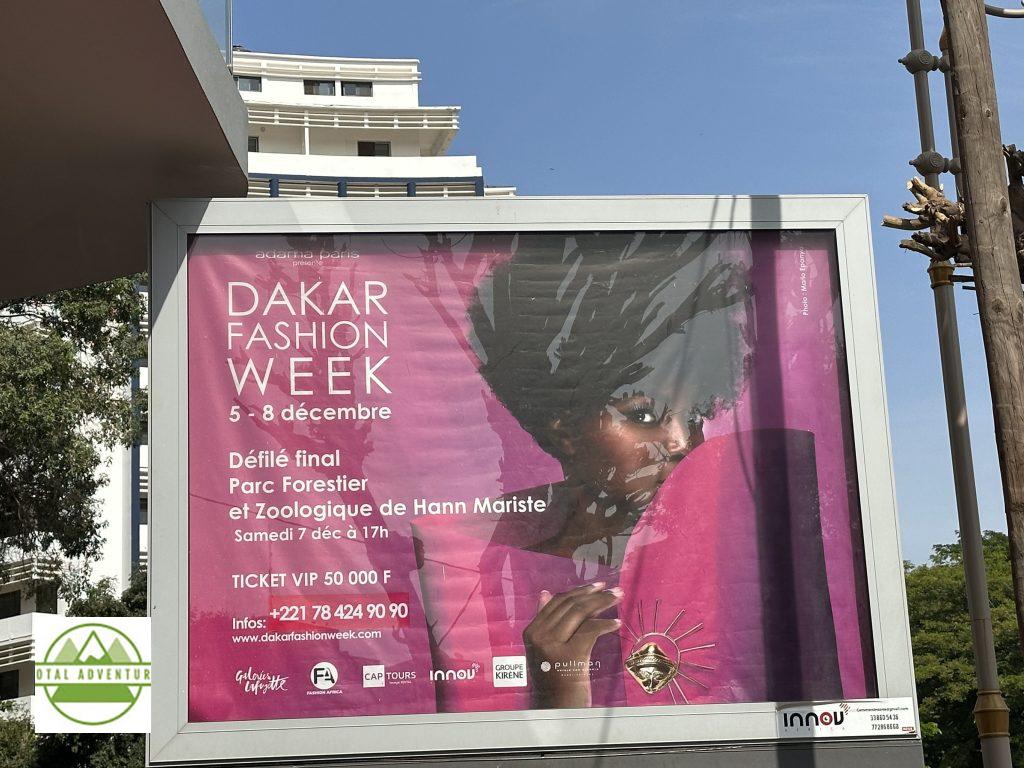
Dakar is a fashion capitol. Getting on the map with New York,Paris and Milan !

West African cuisine is tasty and filling. Chicken,fish ,rice and spices are the main ingredients,
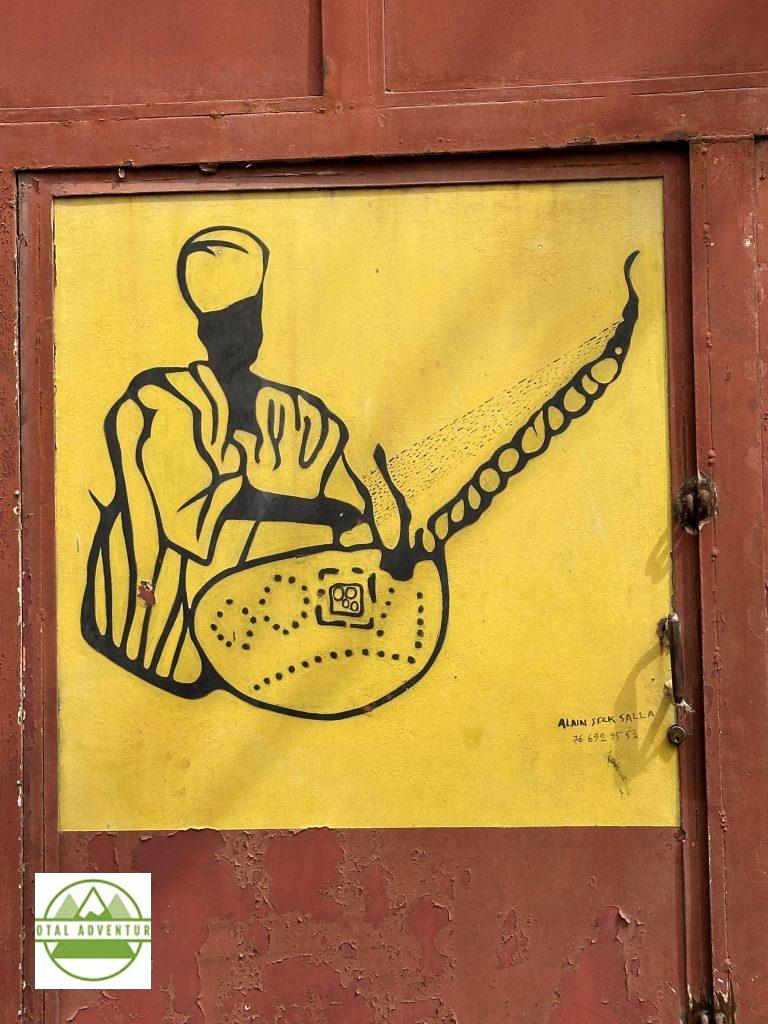
Dakar is also a cultural center for music and art.
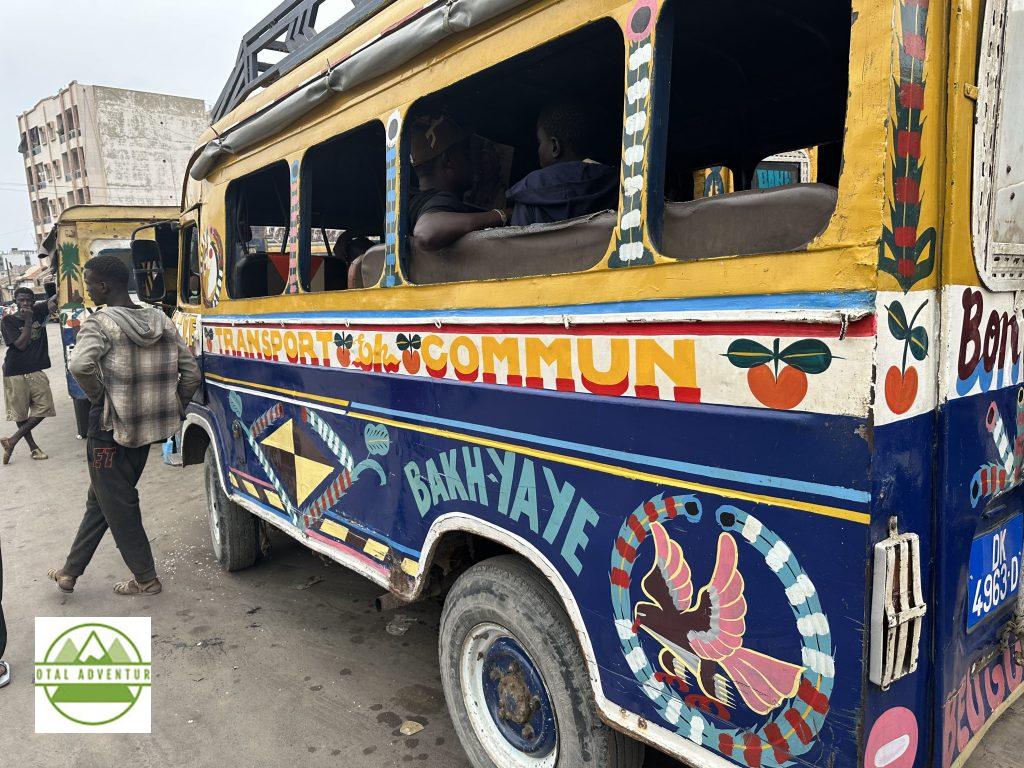
Traffic is not horrendous like most African cities and colorful old French buses ply the streets.
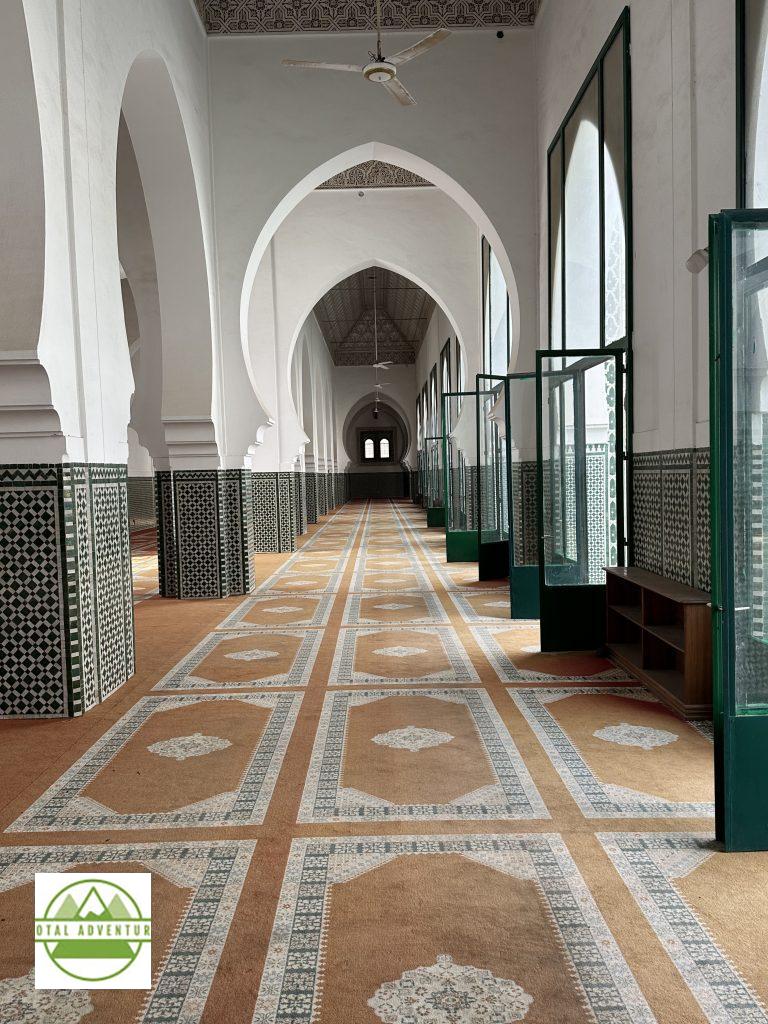
Inside the Grande Mosquée Dakar. It’s one of the largest in the world. TotalAdventure was granted entry and given a tour by the watchman.
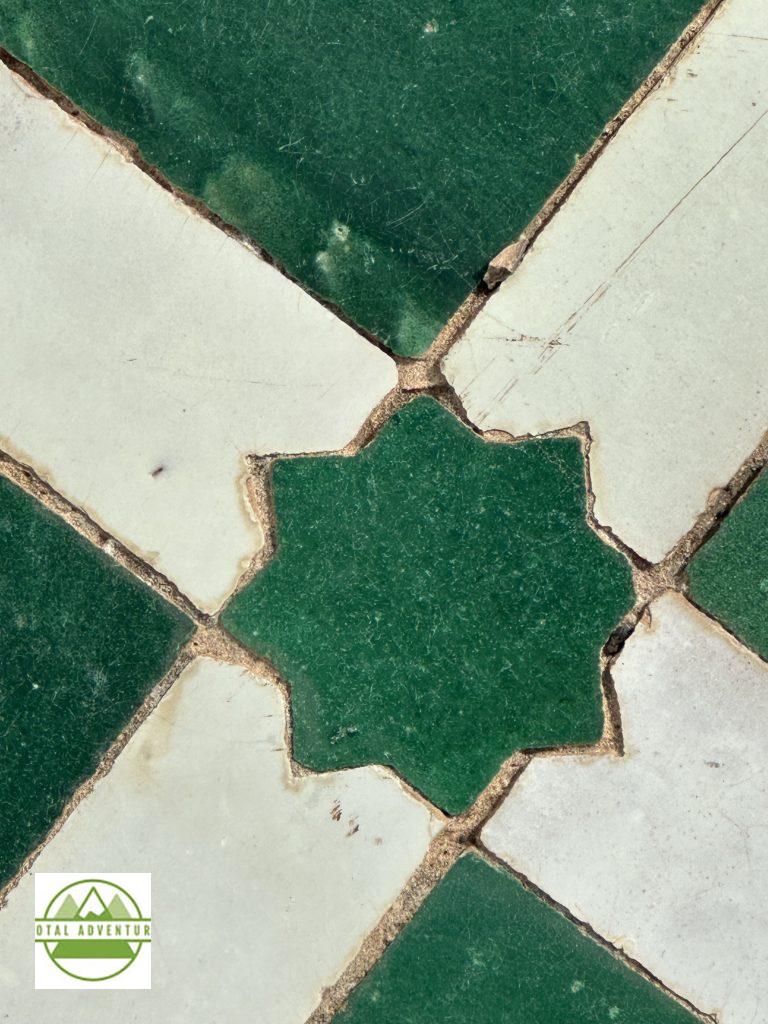
In the Courtyard, by the tens of thousands.
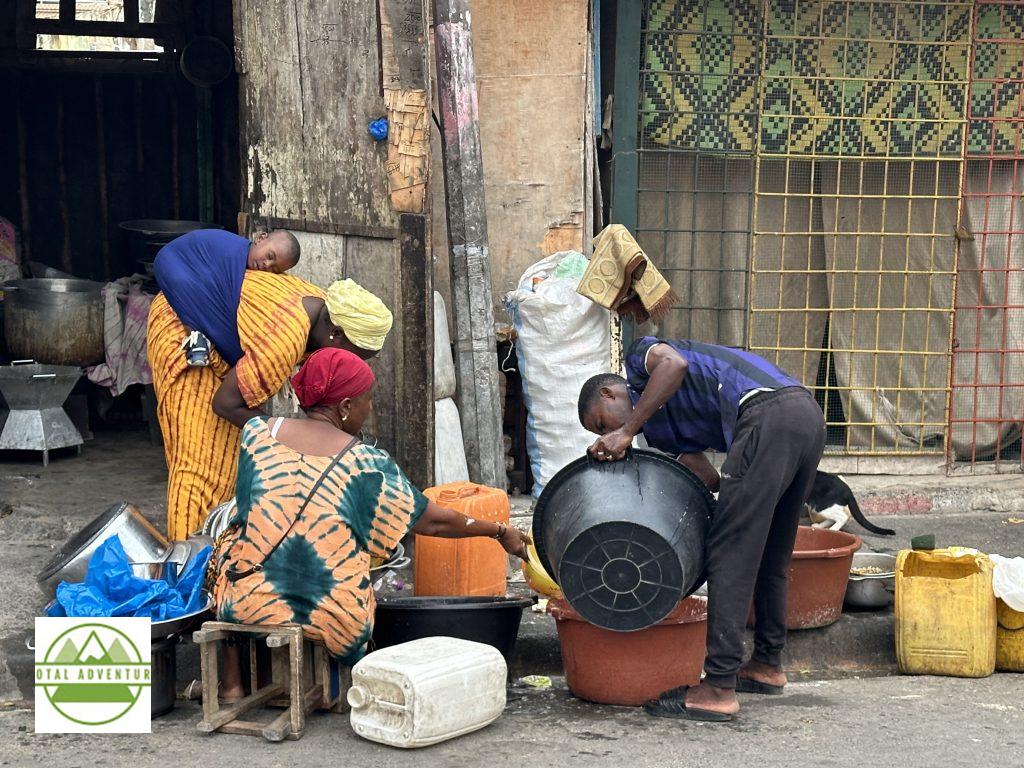
While the standard of living is higher than much of Africa, it is still nowhere near the level of the West.

The CFA Franc is used in the West African nations of Benin, Burkina Faso, Côte d’Ivoire, Guinea-Bissau, Mali, Niger, Senegal and Togo.It is 630 to the US Dollar. Overall prices are much lower than the US and. Western Europe., though some luxury hotels are the same or higher priced than in Europe.
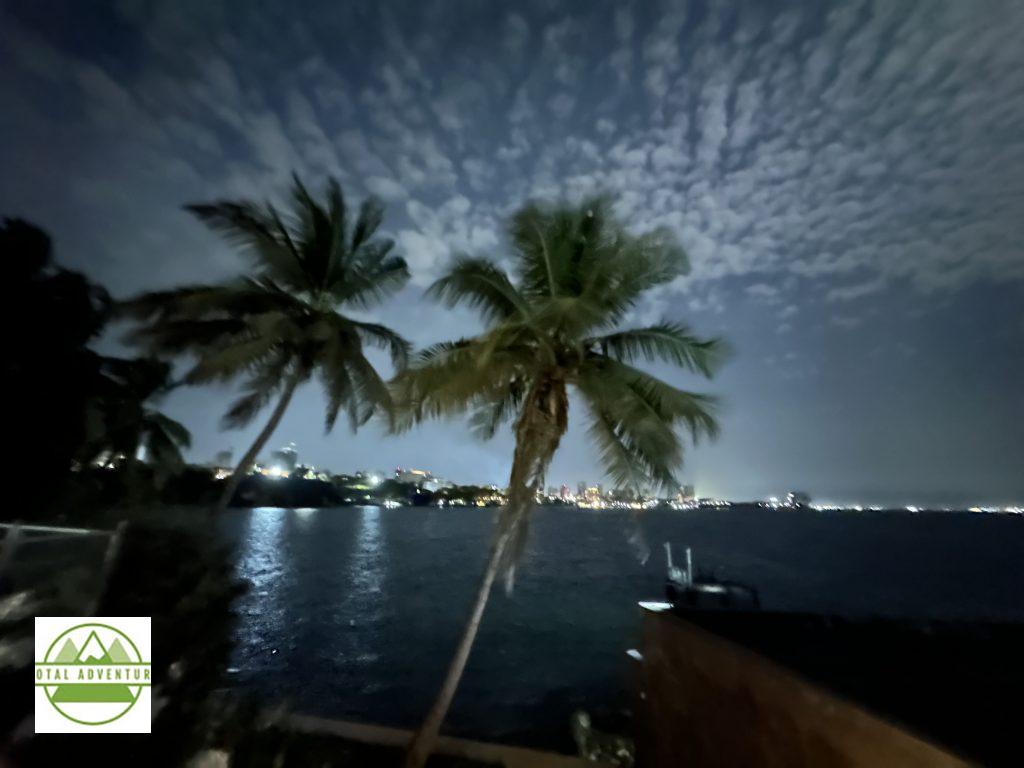
Dakar coastline by night.
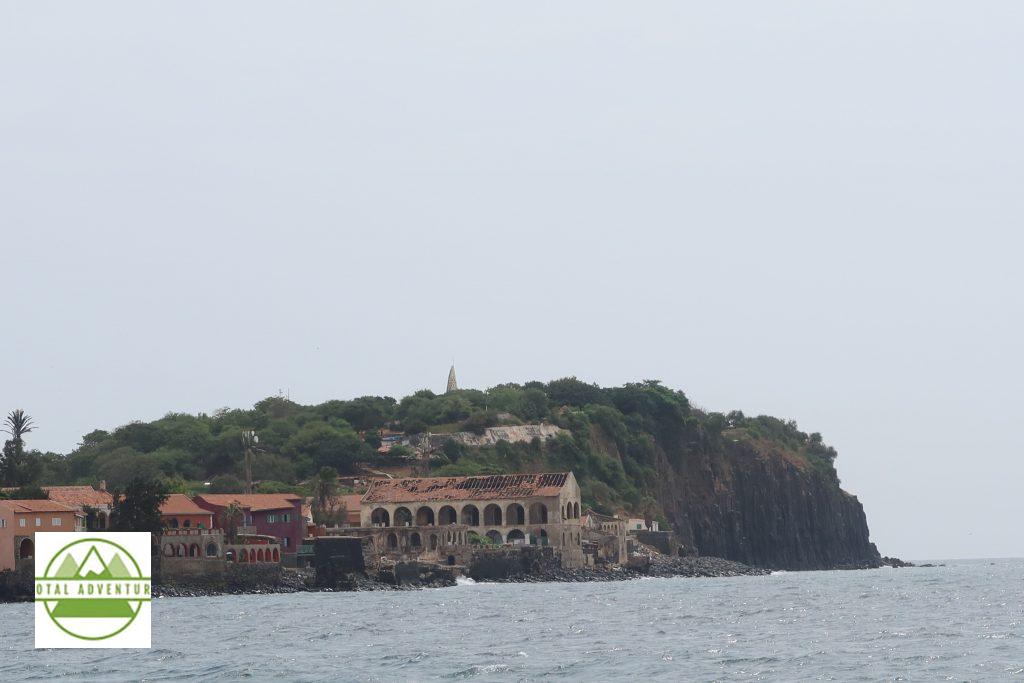
Île Gorée – where millions of slaves were assembled for shipment to America – many of them to Charleston and New Orleans.There was even a house for a US Consulate on the island – probably to process bills of lading. Slaves to Brazil went from Angola. Some buildings remind me of Île Diable in French Guyana – the French excelled at building prisons all over the world.

A ship from nearby Mauritania. TotalAdventure is exploring the possibility of a trip from Morocco to South Africa later this year. Details soon. Contact us directly if interested.
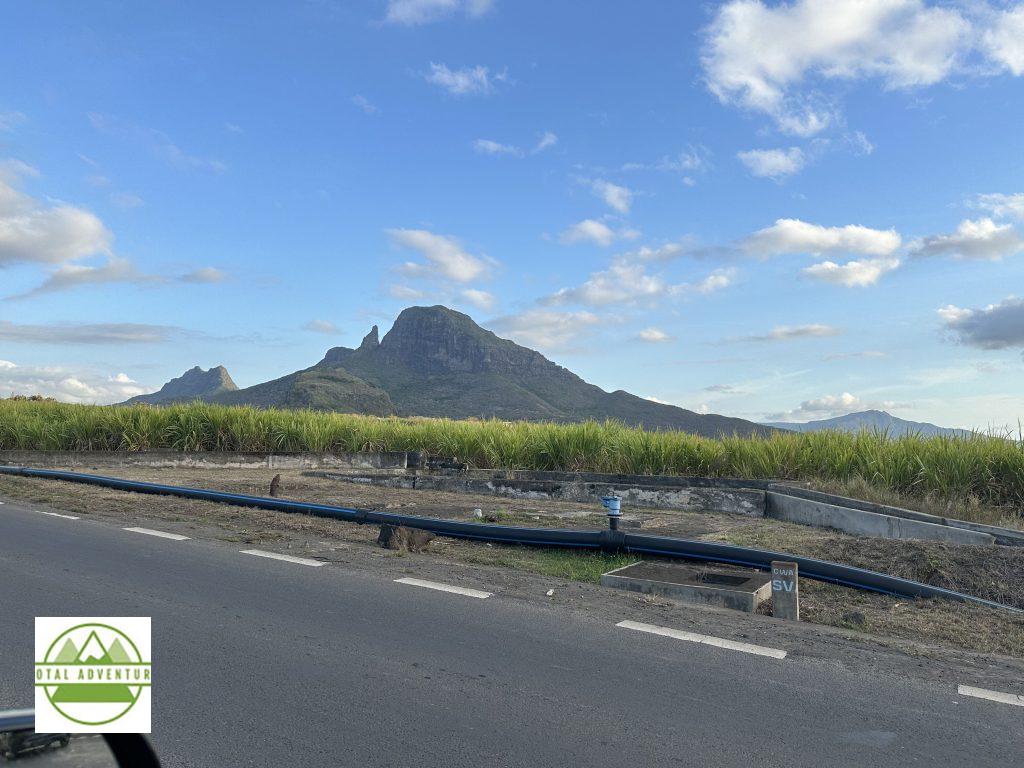
TotalAdventure voyaged from Singapore to Mauritius on October 25 after promoting TotalAdventure.Travel and AdventureTravel.AI at ITB Asia , on eof the world’s largest travel shows, where i met with over 40 promoising adventure providers from Asia and Africa.
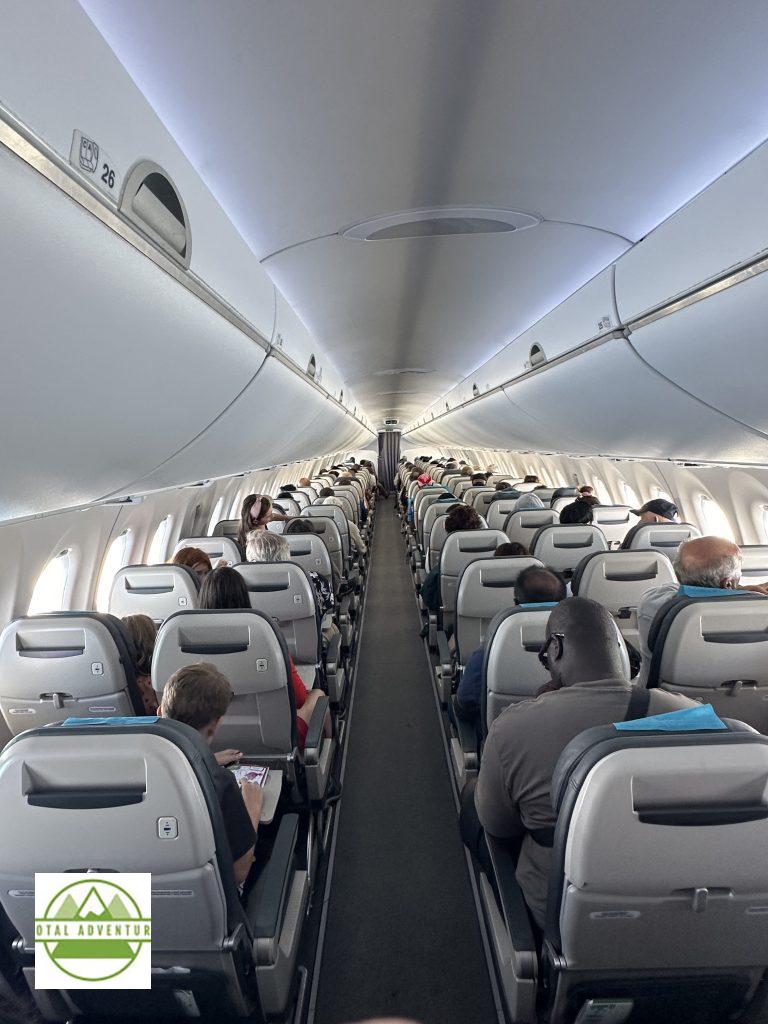
First there was an early moring one hour flight from Singapore to Kuala Lumpur Malaysia on Singapore Airlines. . After a 2 hour layover I boarded Air Mauritius for the 7 hour flight to the center of the Indian Ocean. Crossing the Equator for probably my 50th time, we went from Autumn to Spring, though the only difference in the tropical maritime world is that thel days are longer in the Southern Hemisphere at that time of year.
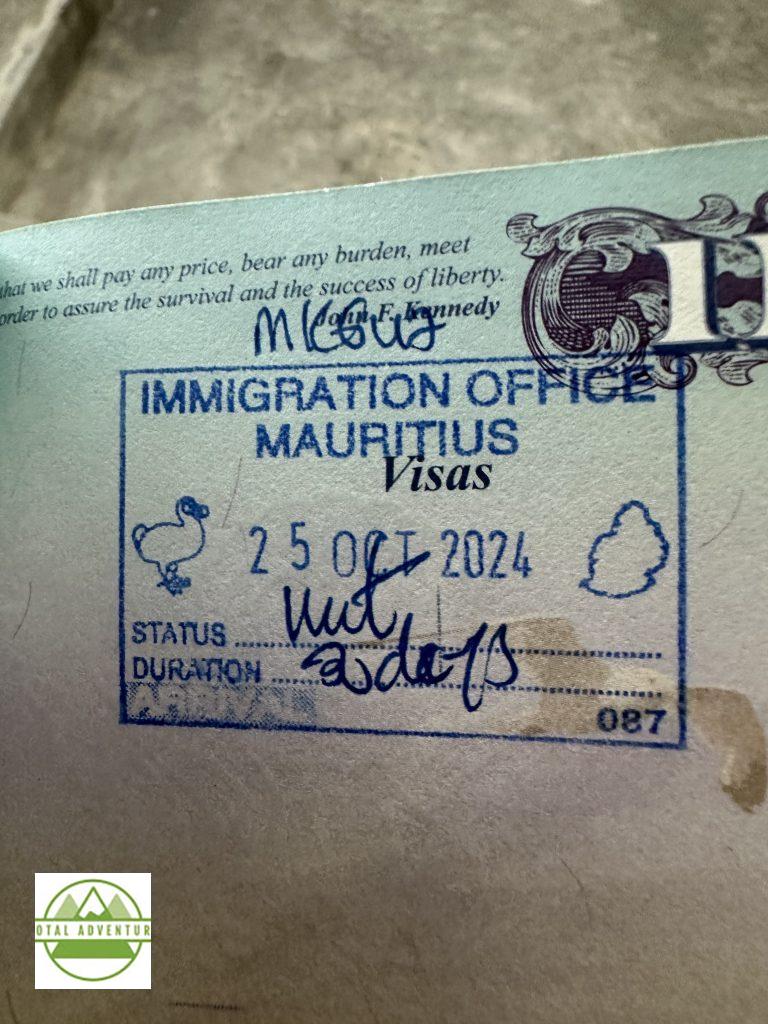
First stamp in my new passport. Singapore, my first country on the new passport is all electronic. The Mauritius authorities were puzzled as to how I got so far from home without one stamp, and thoroughly inspected my pack.
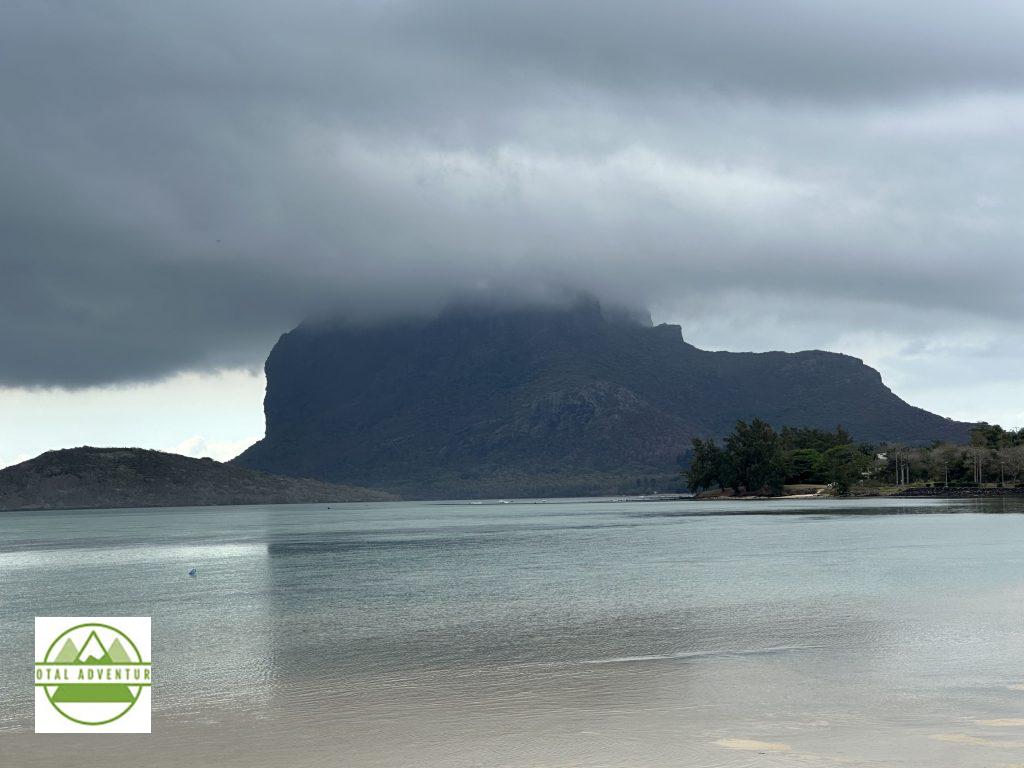
TotalAdventure was drawn to Mauritius for its’ land scenery which did not disappoint and for its’ snorkeling, which did. The coastal waters were generally murky or devoid of fish, one must hire a speedboat outt o the reefs to see anything significant Many of the best beaches are inaccessible as they are walled off by heavily guarded resorts catering to French and Indian tourists.
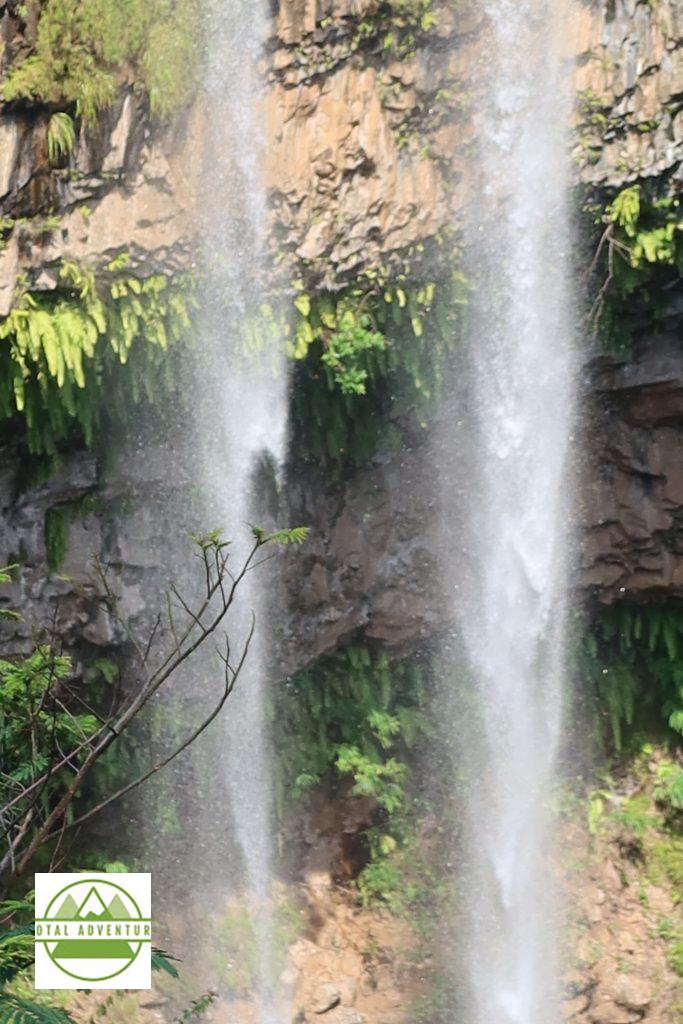
A closeup of Cascade de Chamarel , 100 meters high.
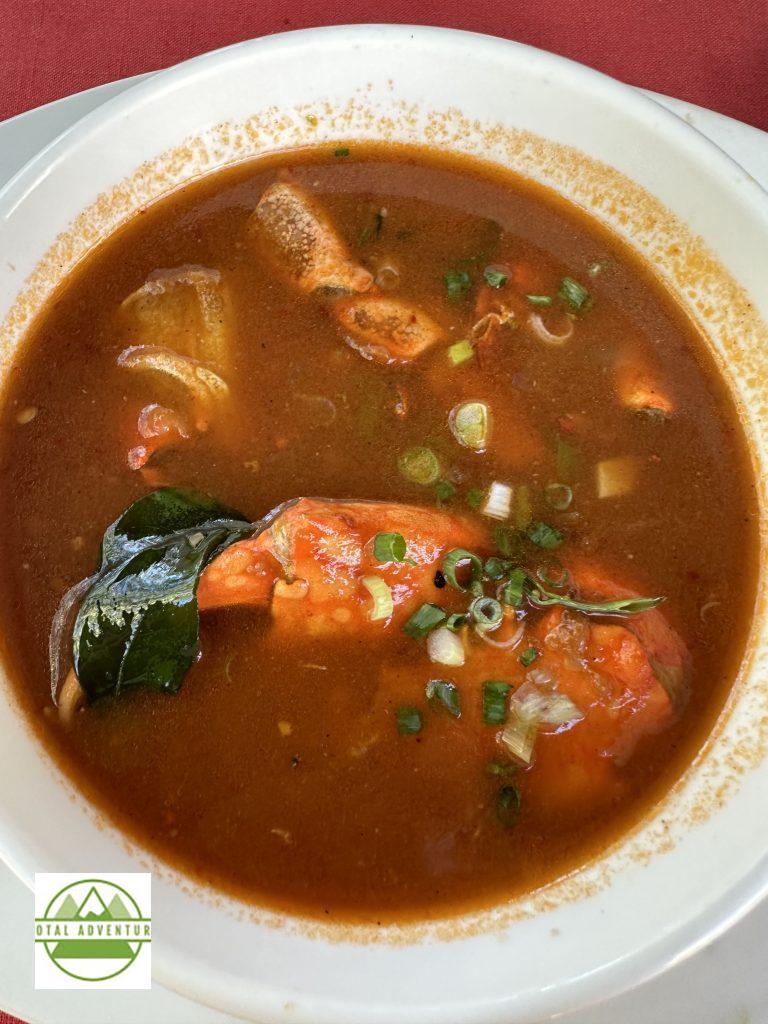
Seafood curries are excellent , a mix of Indian and French influence.

The Mauritius Rupee is currently 46.5 to the USD. In general prices are moderately lower than the US and Western Europe
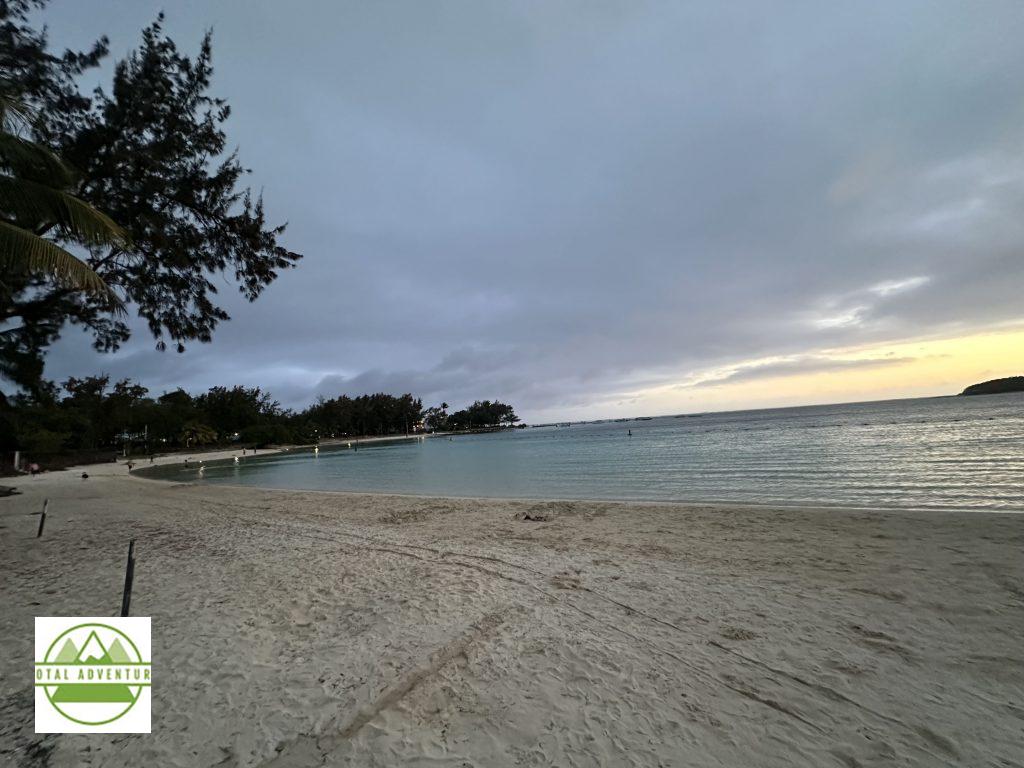
The waters are very tranquil around most of the island. About 5 to 7 km offshore, a giant reef blocks giant Indian Ocean waves.

Mauriius was TotalAdventure’s 99th country. Becuse of airline schedules I spent a little longerthere than I would have liked, but it was a nice rest
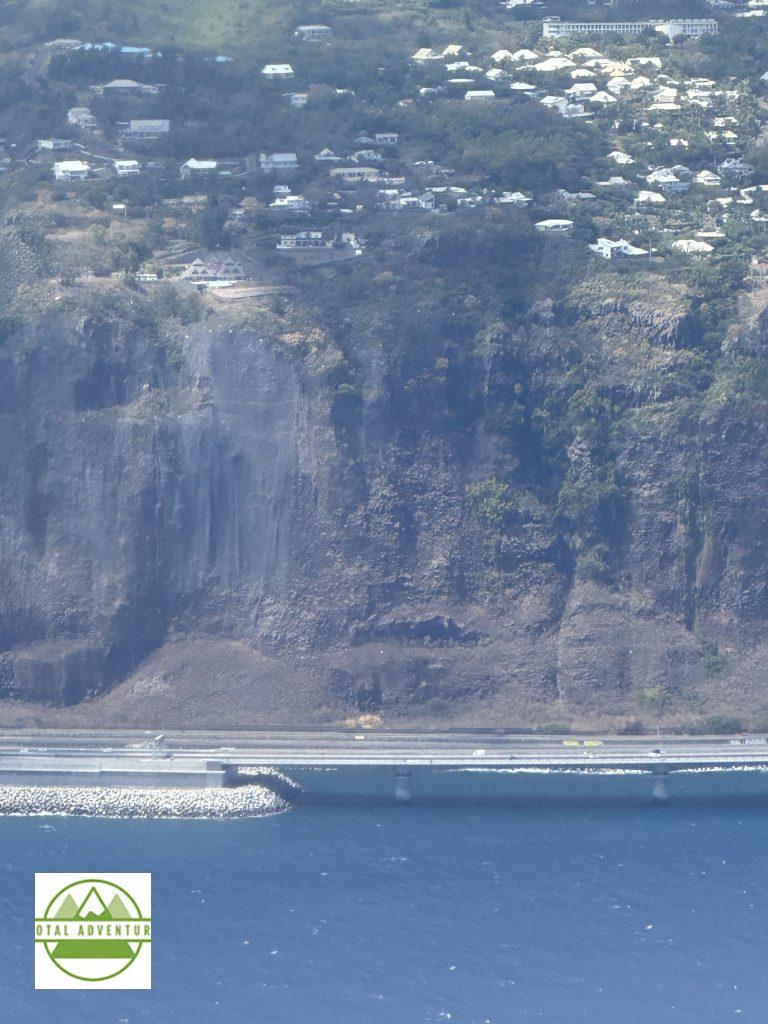
Next stop was Madagascar. We stopped in France along the way and yet the whole trip is only 3 hours.Réunion , in the middle of the Indian Ocean is a French Department, as much a part of France as Paris. The main reason to visit would be to get away from a cold European winter.
Axum Is One Of The Holiest Christian Cities On Earth. It Is Home To The Ark Of The Covenant – The Tablets Of The Ten Commandments Held By Moses.
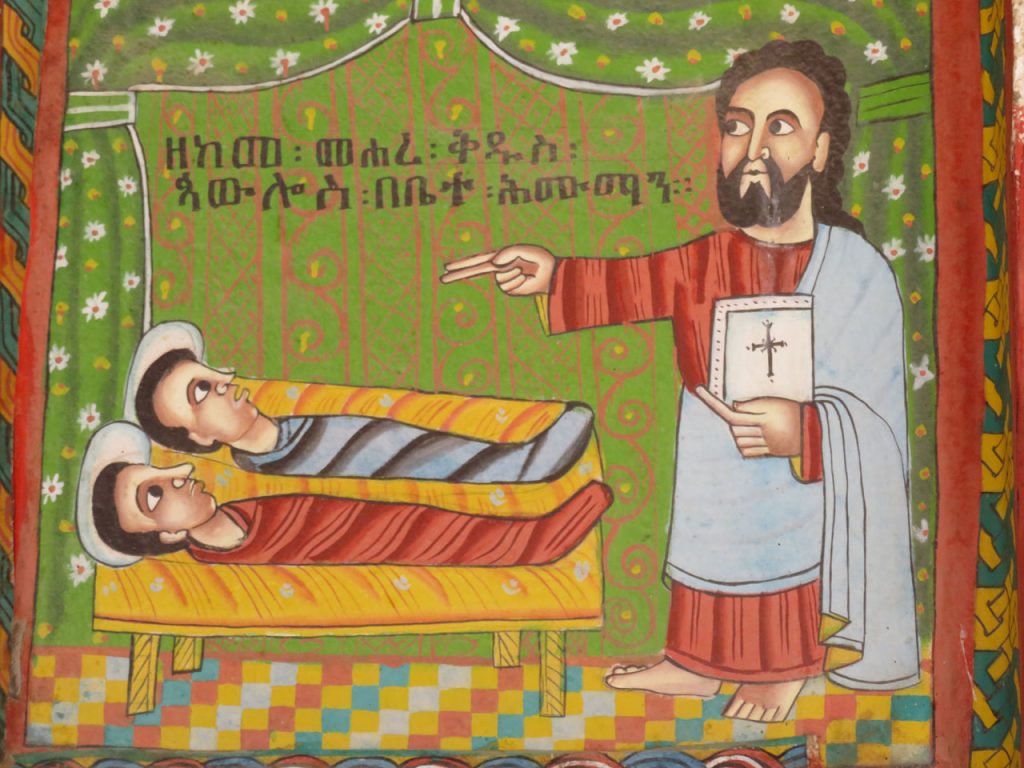
In Middle Ages Europe ,In The Time Of The Crusaders, there was a tale of a paradise called The Land of Prester John. A land of unimaginable riches, and home to the Holy Grail. Somewhere near Ethiopia, though the Crusaders never got beyond Jerusalem.
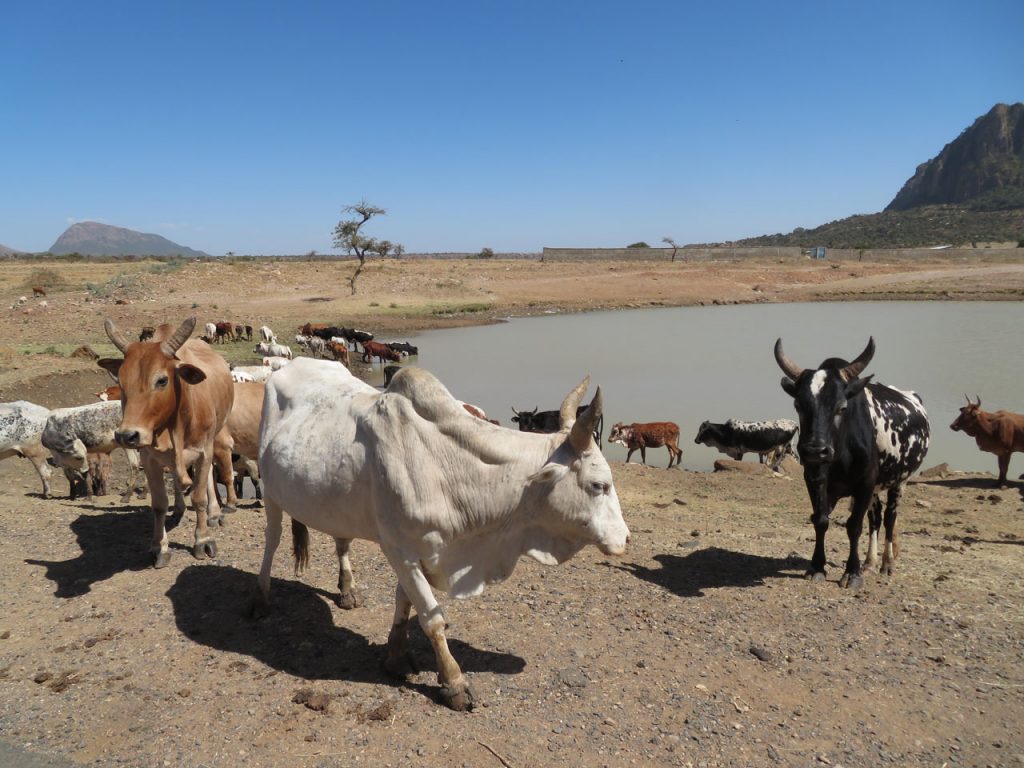
A Truly Ancient Land.

Egyptian emissaries erected stellae in the Fourth Century, though quite a few have fallen.

Sunrise in the Land of Prester John.
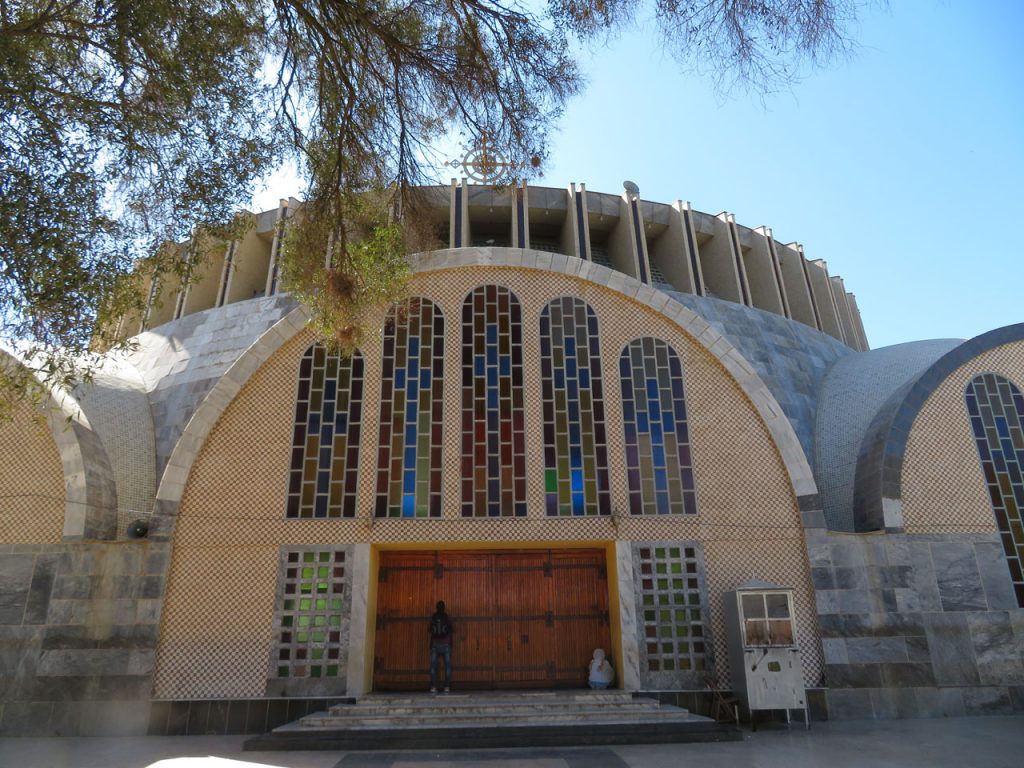
The modern Church of Maryam ( Virgin Mary ) near the Ark Of The Covenant.
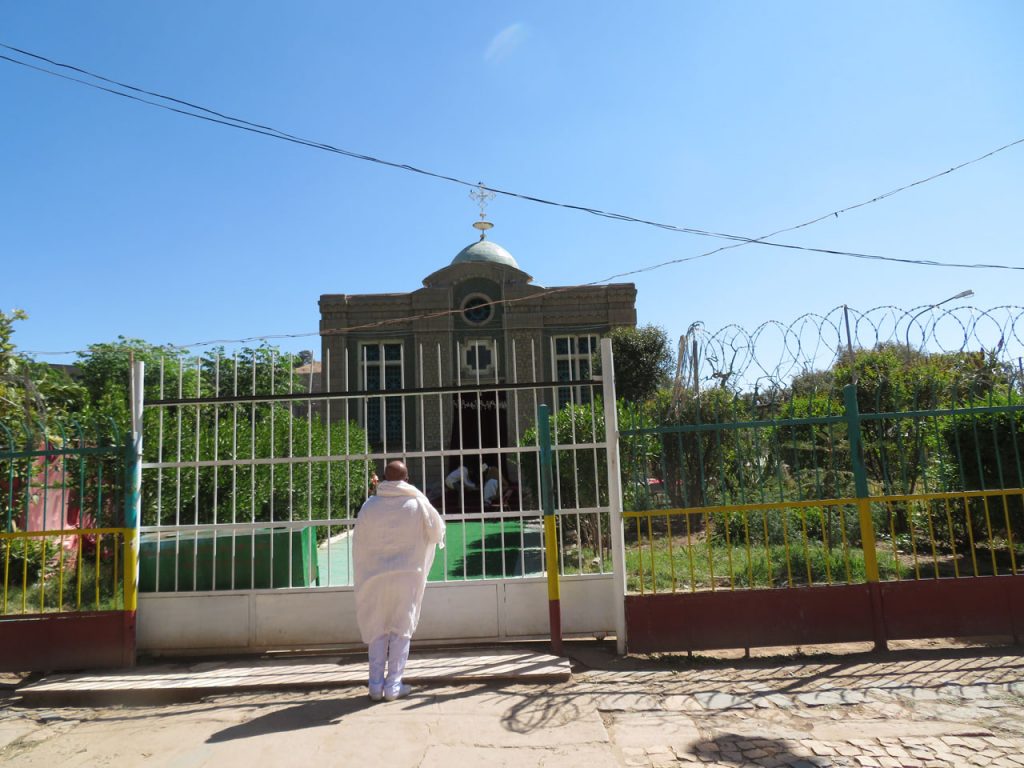
The Ethiopian Orthodox Tewahedo Church claims to possess the Ark of the Covenant, or Tabot, in Axum. The object is currently kept under guard in a treasury near the Church of Our Lady Mary of Zion.( Wikipedia) Ark of the Covenant was brought to Ethiopia by Menelik I with divine assistance, while a forgery was left in the Temple in Jerusalem. ( Wikipedia.) Melenik I was the son of King Solomon and Queen Sheba.

A Peaceful Dove – An Apparition ?

An Ancient Stellae Field.
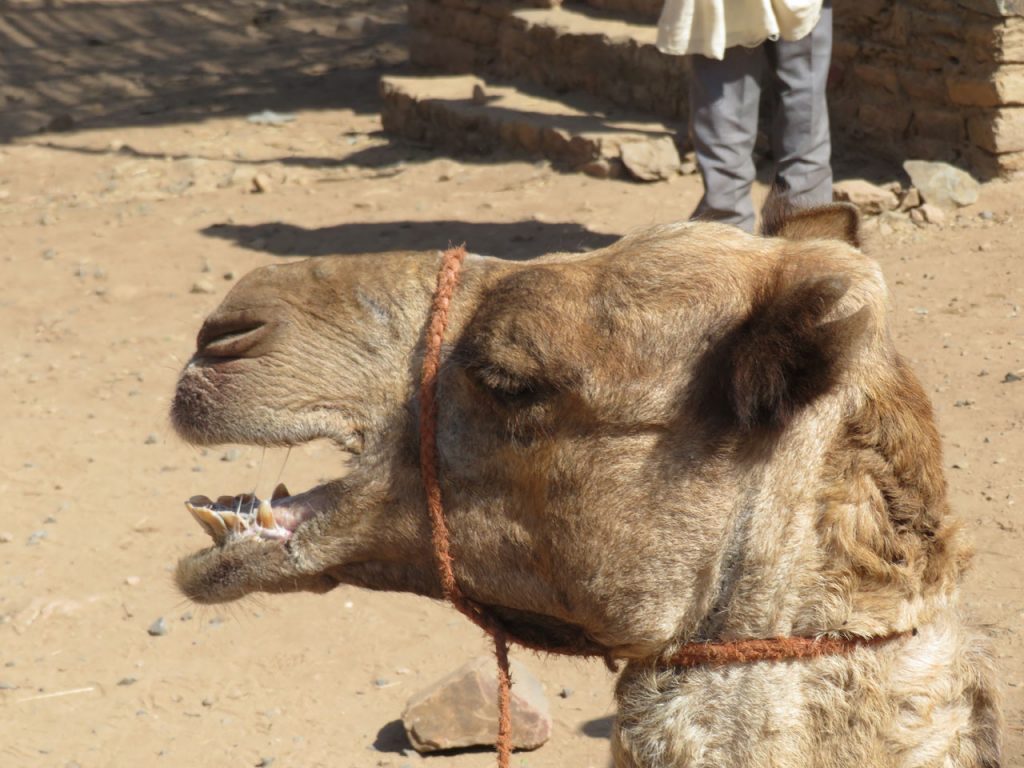
A Cantankerous Camel.
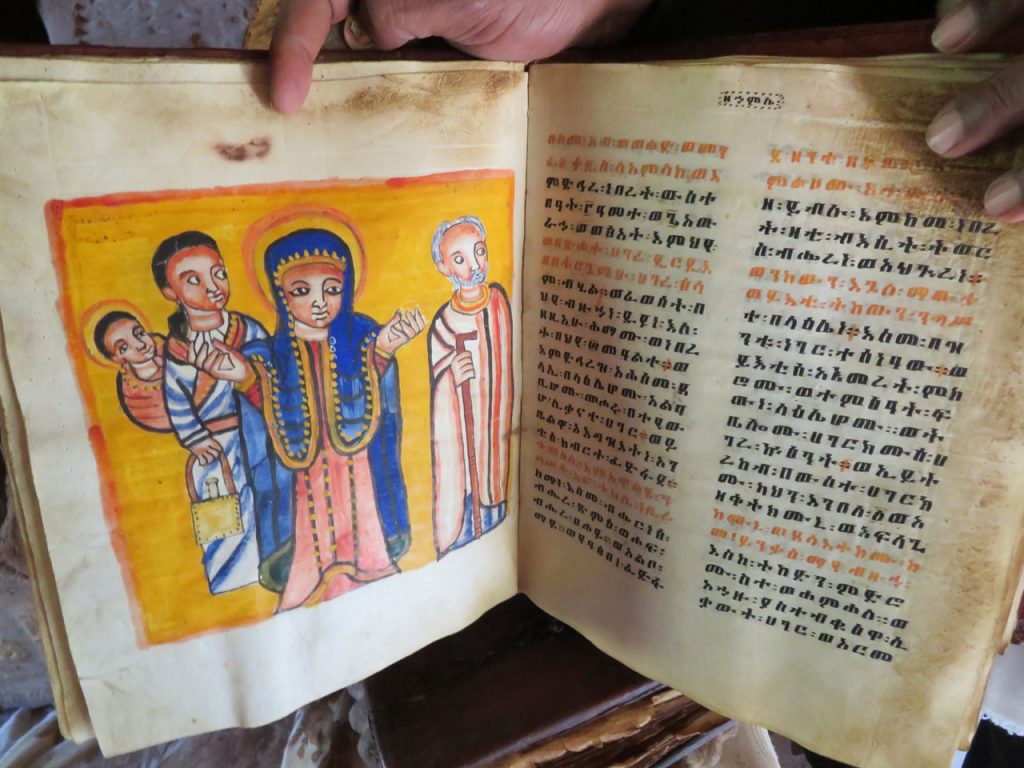
Holy Bible.
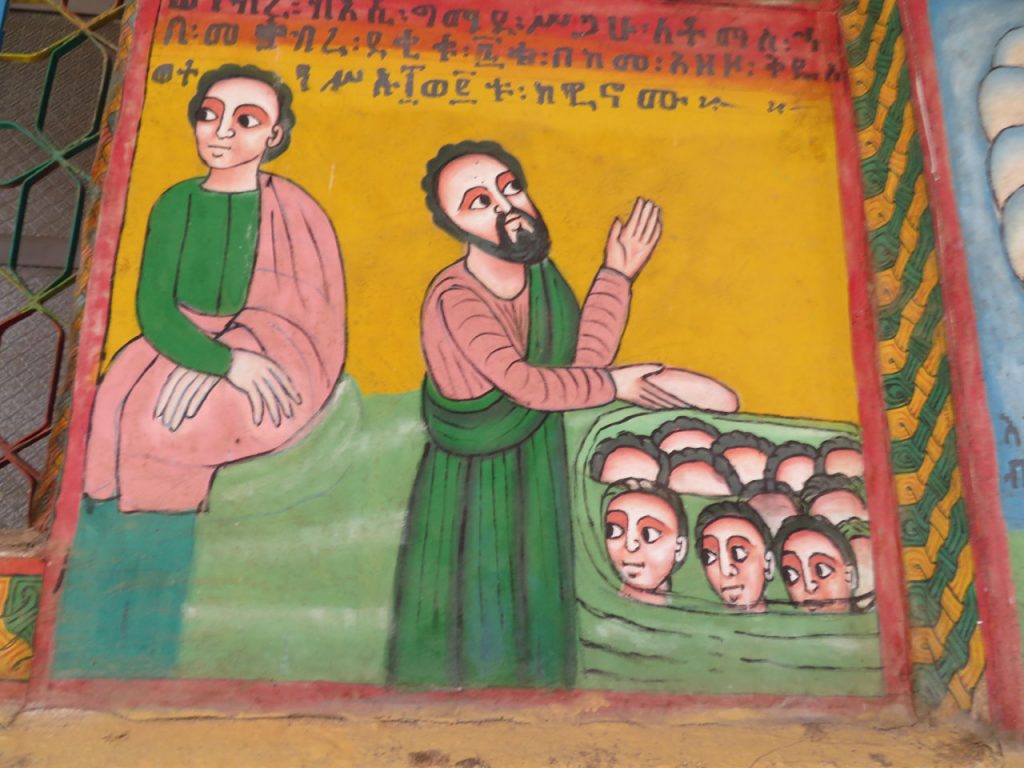
Brutal Punishments For Sinners.
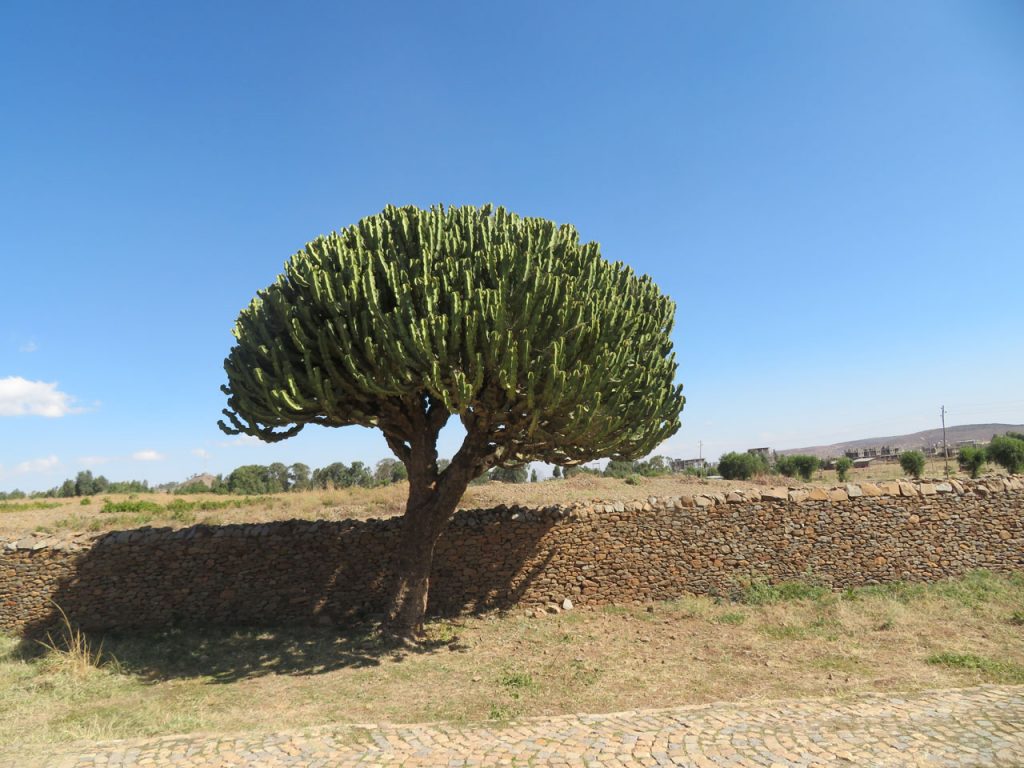
Rugged Trees For the Dry Climate.Tigray only gets a few showers in the summer.
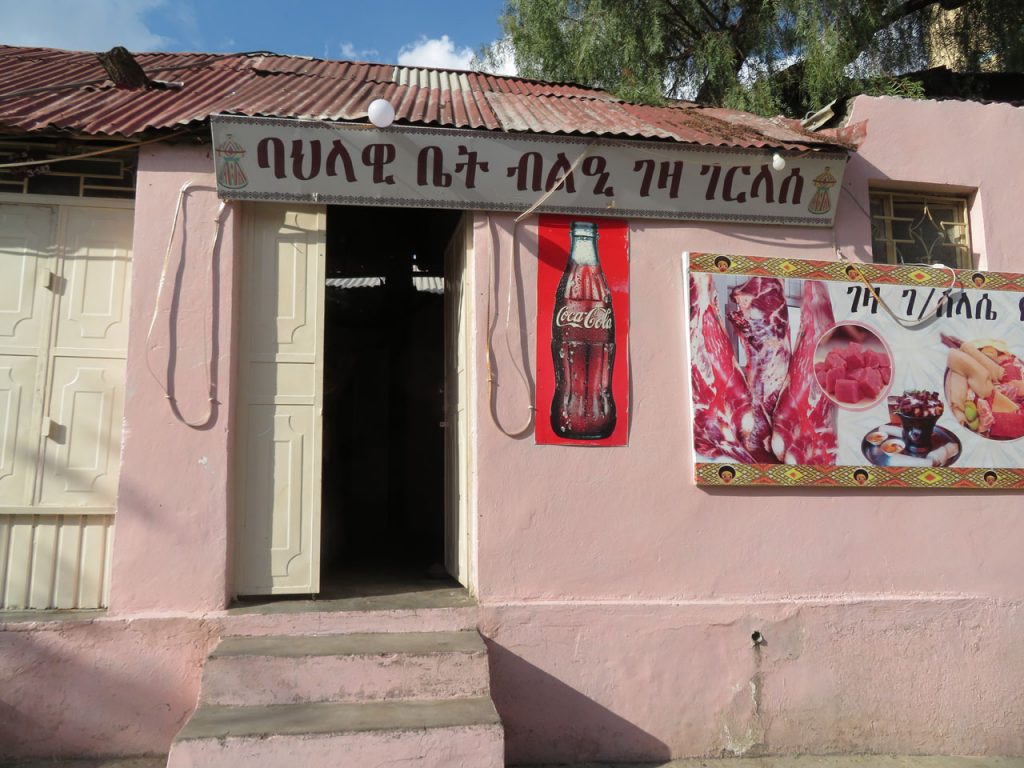
One of the best restaurants in Ethiopia – in Adrigat.
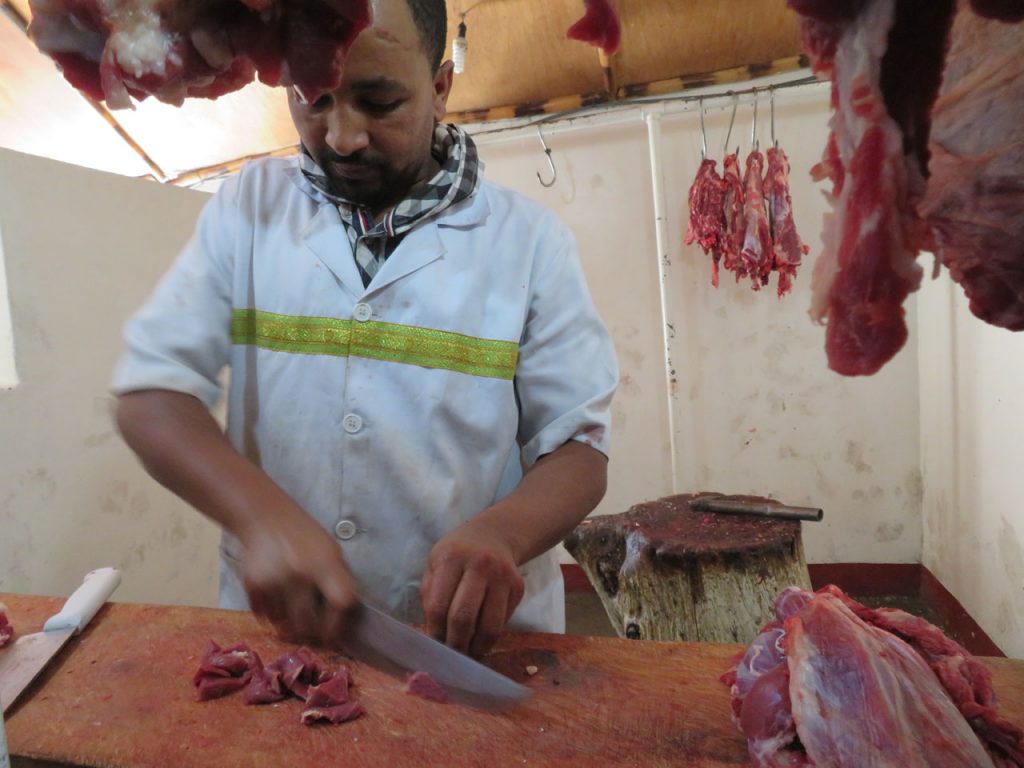
Lamb and Beef so fresh you can eat it raw.
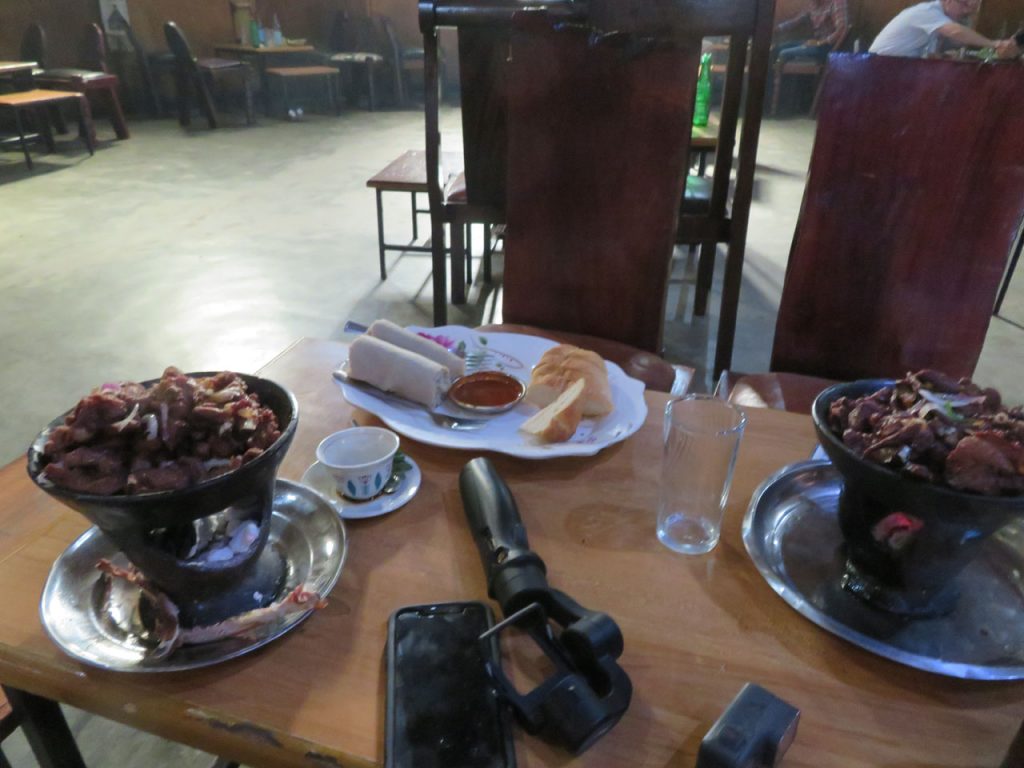
Hot Tibs.
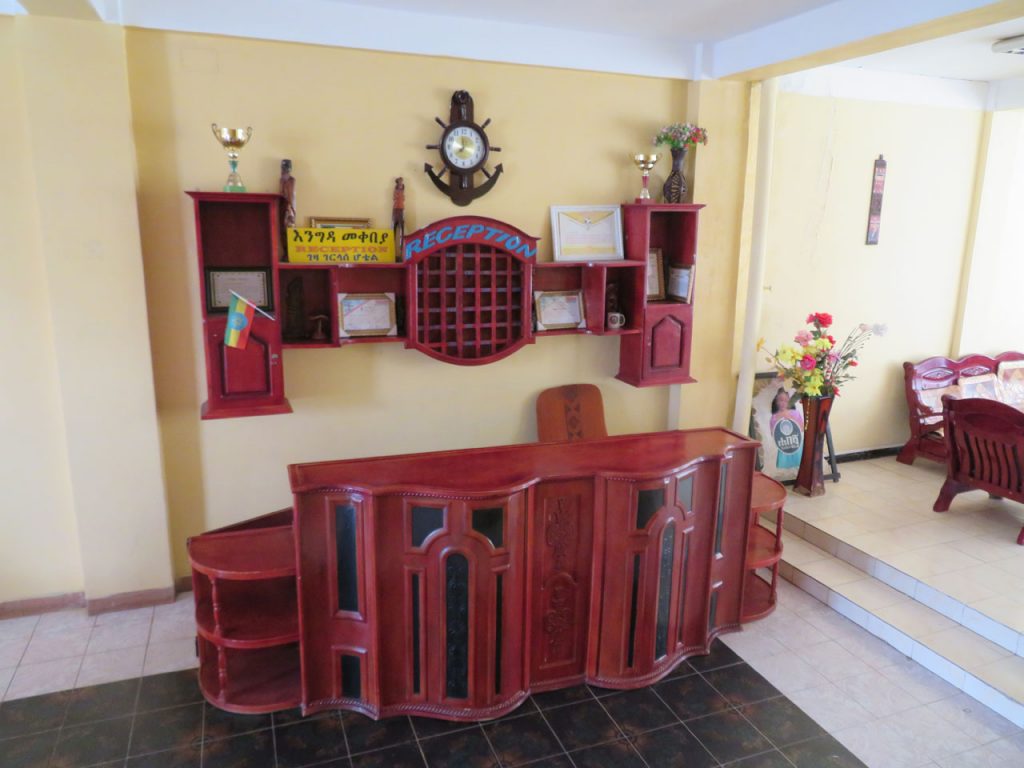
Hotel In Adrigat. Did not stay there.
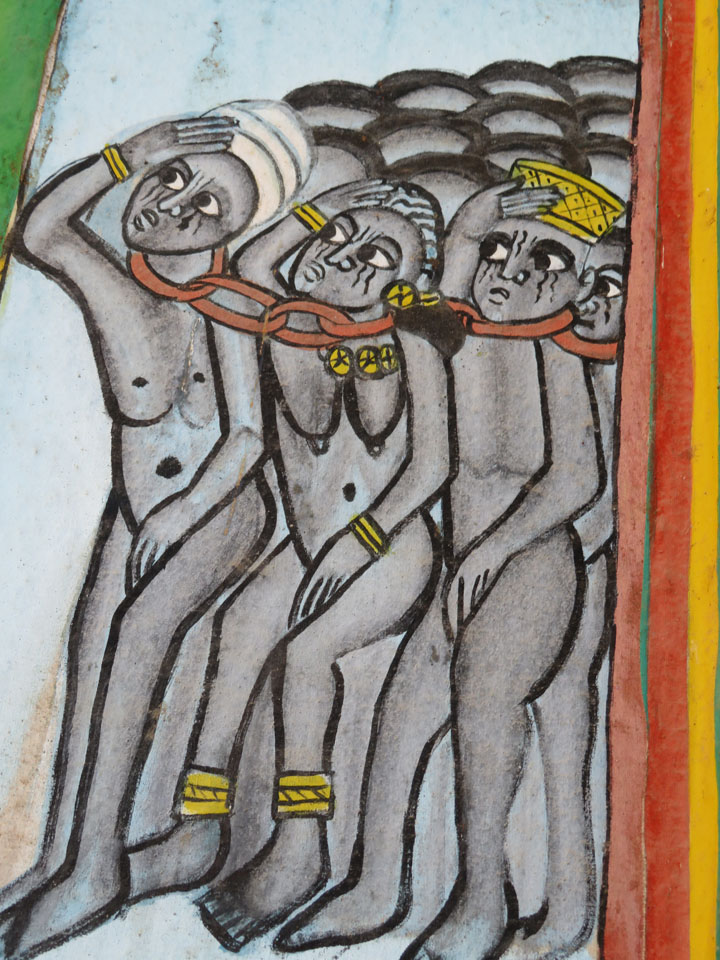
Captured In Battle.
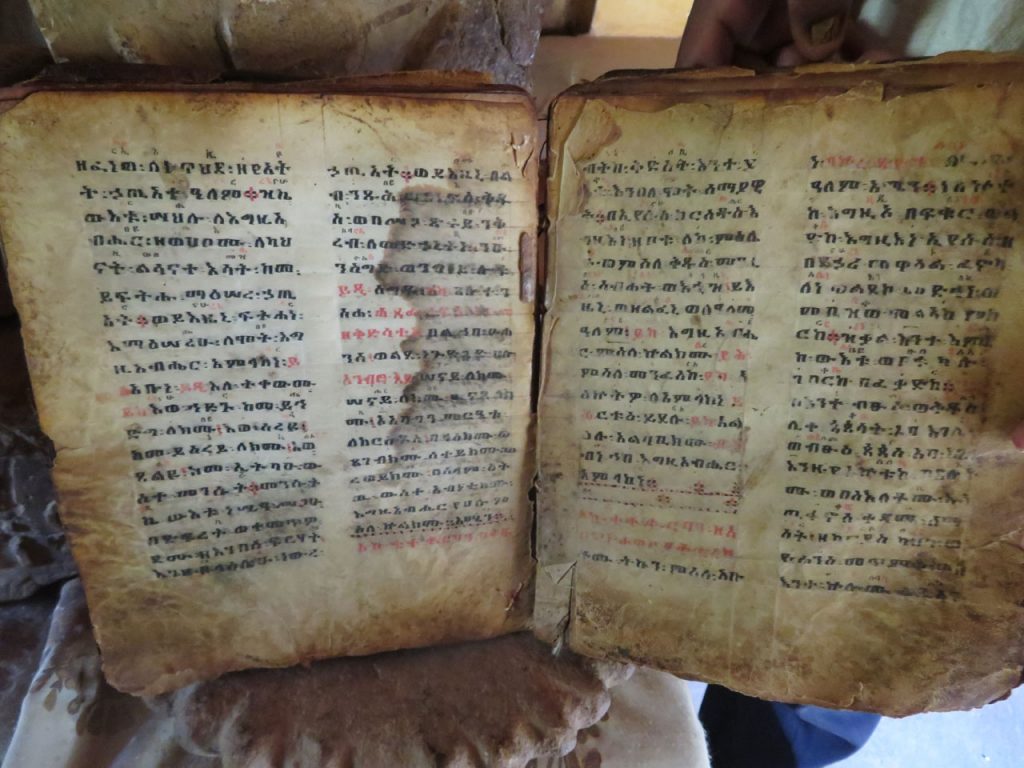
Ancient Scripture.
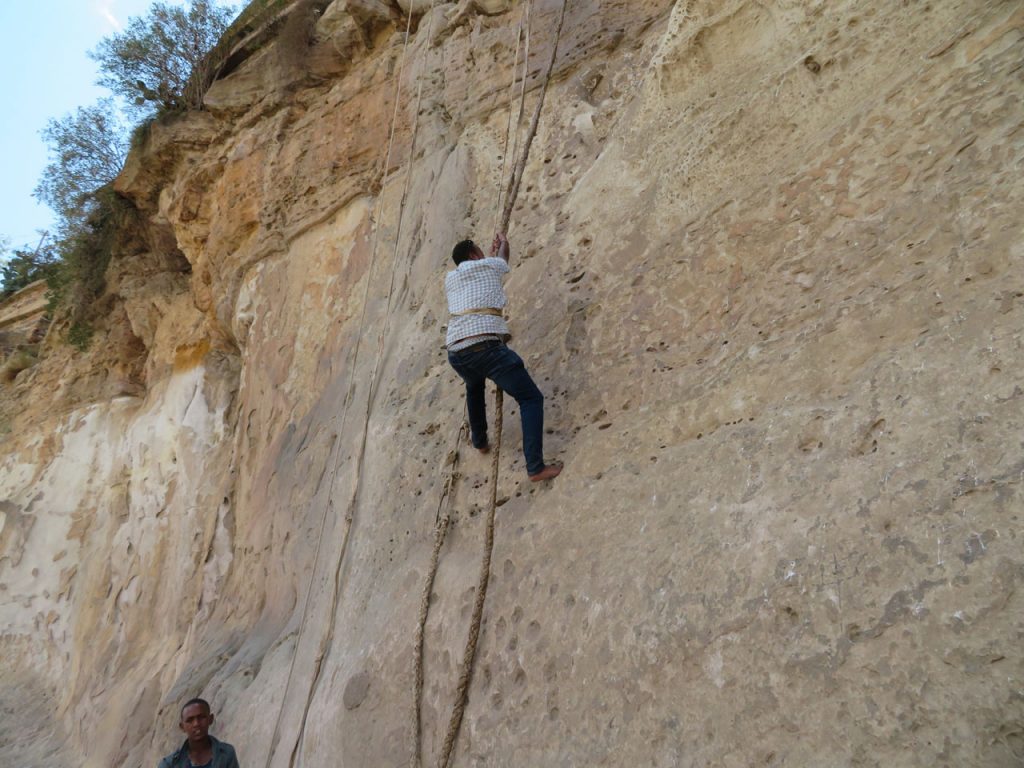
Debri Damo Monastery. Accessible only by rappelling up the cliff.
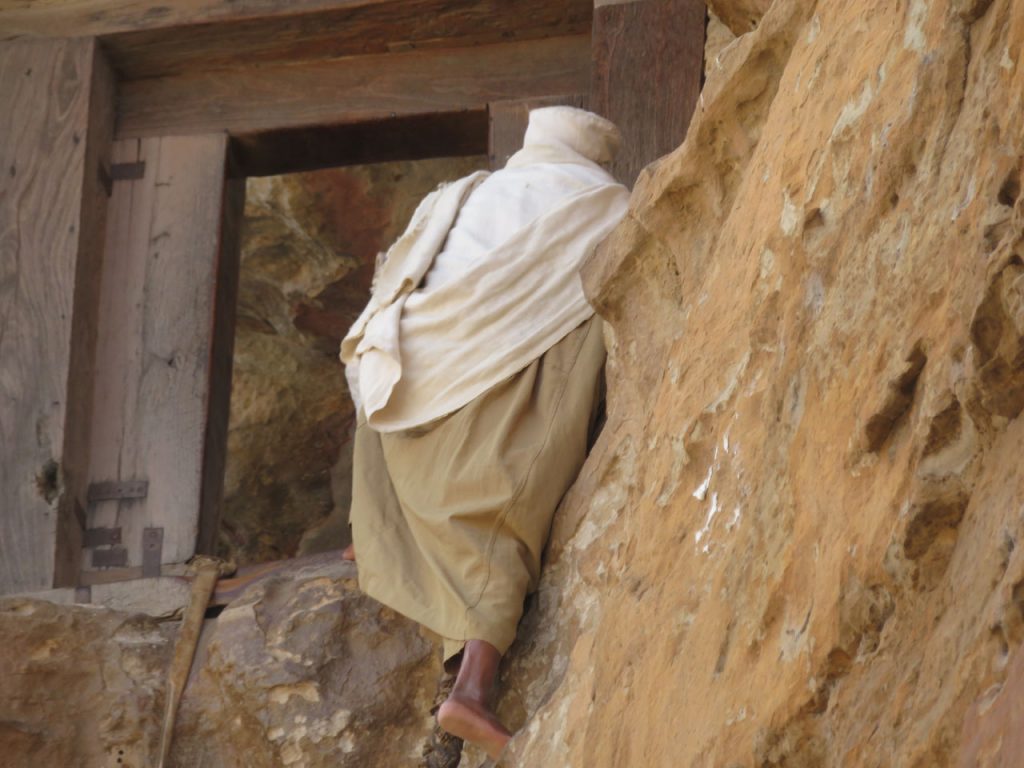
Even monks 80 or 90 years. old can do it. Once they can’t, they stay.
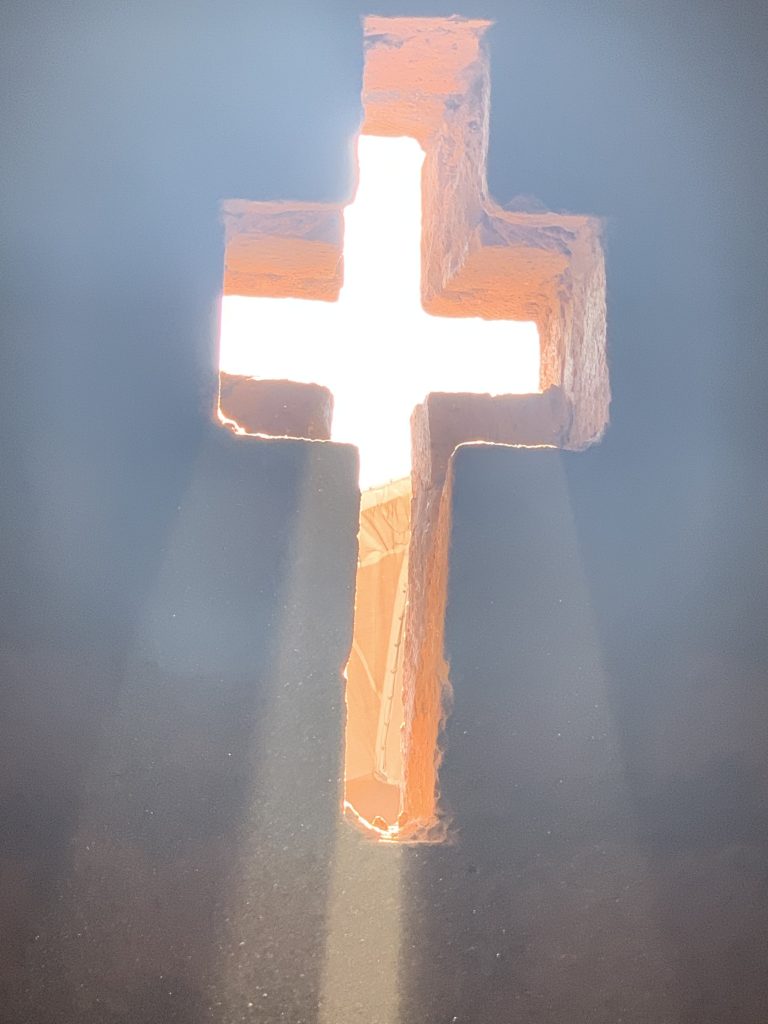
Two Fascinating Weeks In Ethiopia then came to an end. TotalAdventure moved on to nearby Eritrea, though it took two flights to get there. TotalAdventure would especially like to thank Awaze Tours for making our private journey possible. Also Special Thanks to our driver Engdu ! Ethiopia is not an easy country to navigate and Awaze helped make all this incredible experience possible.
The Simian Mountains In Northern Amhara State Were Formed By Extreme Volcanoes About 40 Million Years Ago. They Tower West Of The Rift Valley, Which Runs Almost The Whole Length Of Africa.
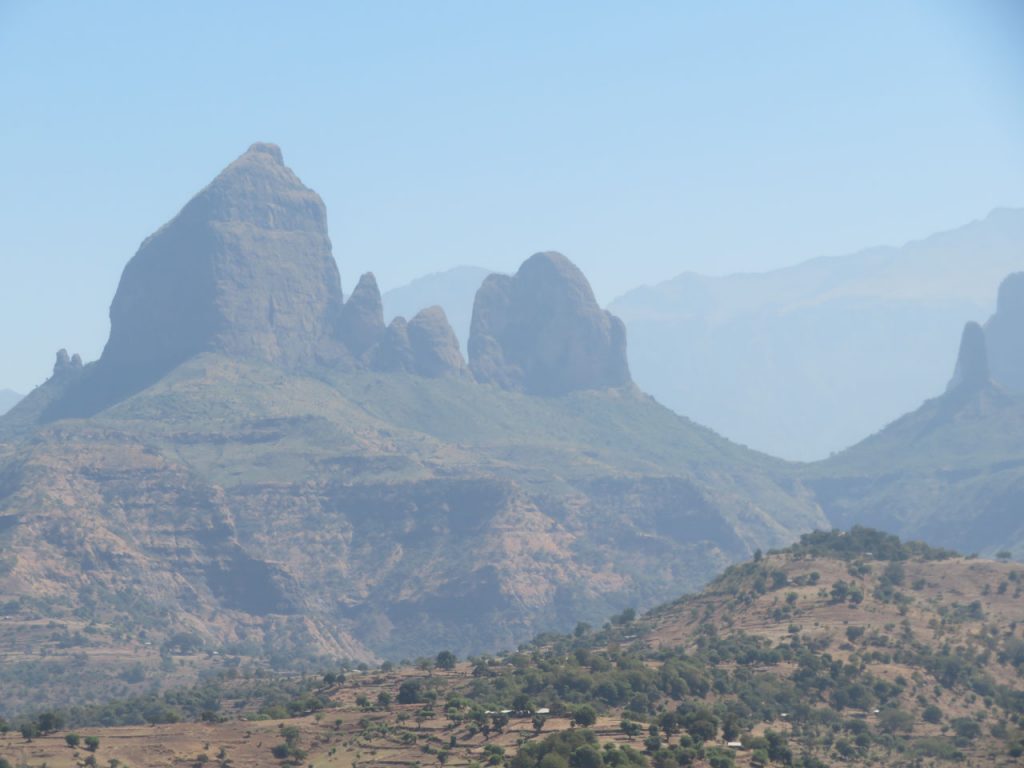
The Highest Mountain Is 15000 Feet ( 4550 m) . Snow is known to fall in the wet season. TotalAdventure experienced below freezing temperatures in the early mornings.
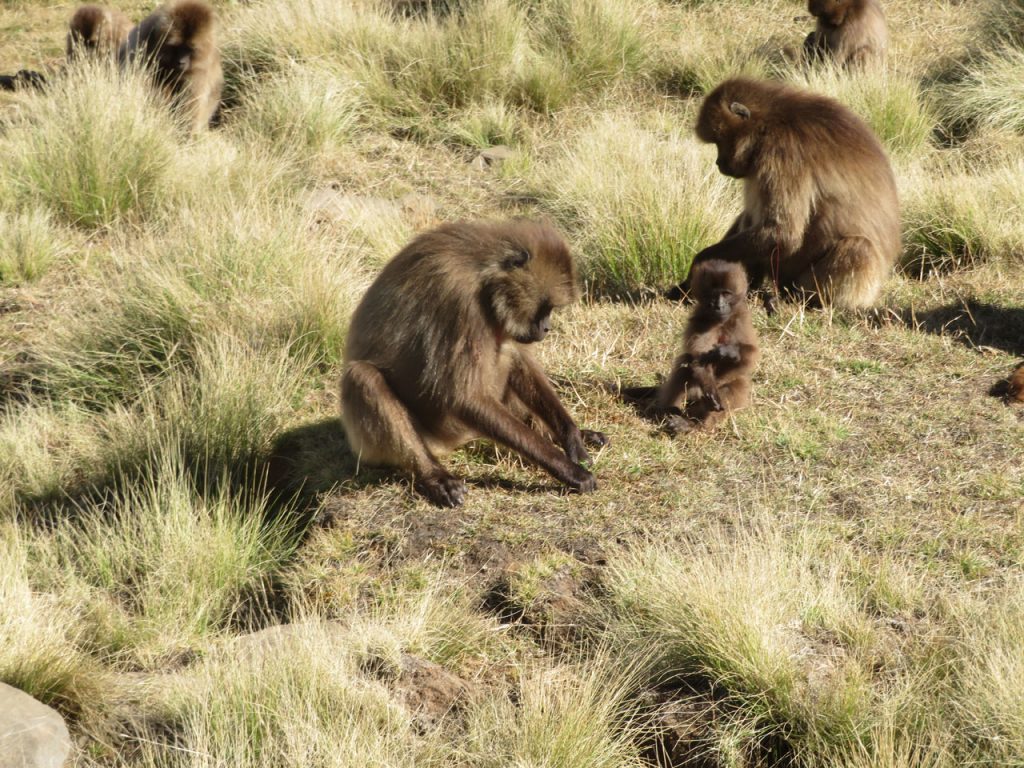
A Gelada Monkey Family Forages For Dinner. Snacks from tourists are strictly forbidden.
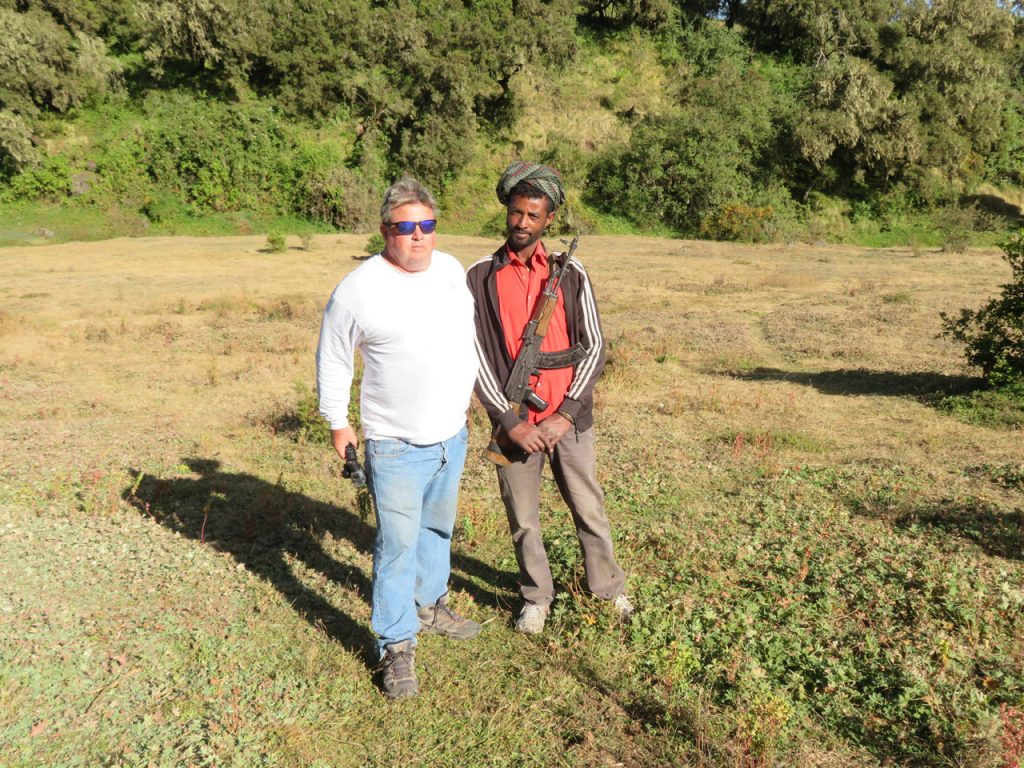
A Guard With An AK-47 Is Mandatory , To Guard Against Hyenas In Simian Mountains National Park. Hyena jaws are so strong they can snap a femur like a small chicken bone.
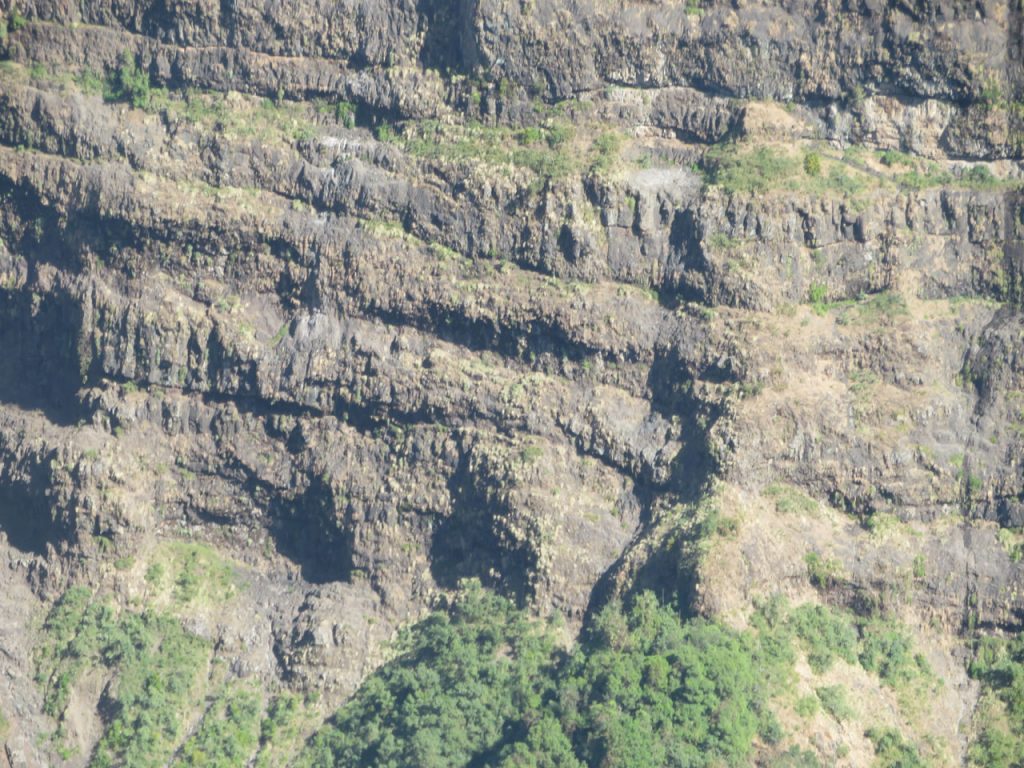
GeladaMonkeys sleep on the cliffs at night, in order to be inaccessible to hyenas.
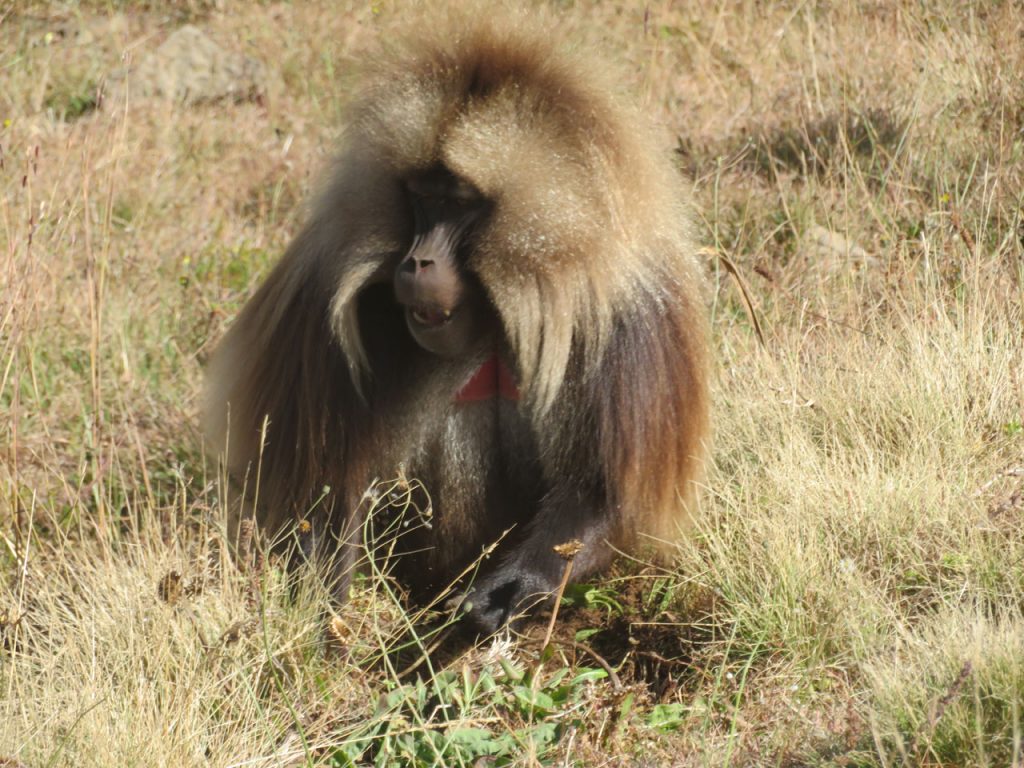
A Father is unfazed by his human cousins. They are 5 times as strong !
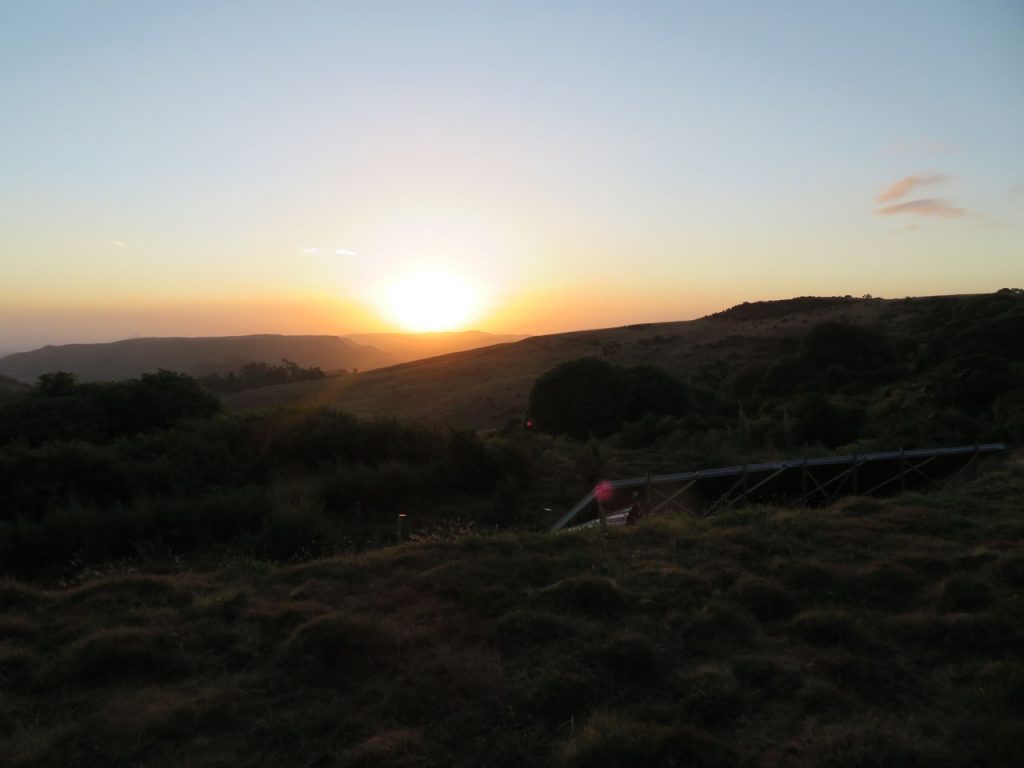
Sunset From 11,000 Feet ( 3384 m) at the Simian Mountain Lodge.

A Fireplace Keeps The Dining Room Warm. Outside it was 26 F ( -4 C)

Our drive out of the mountain range. Drivers must be careful, with 3000 ft. cliffs on every curve.

Priests Enact The Carrying of Boxes Which Carried The Ark Of The Covenant From Jerusalem To Axum, Ethiopia.
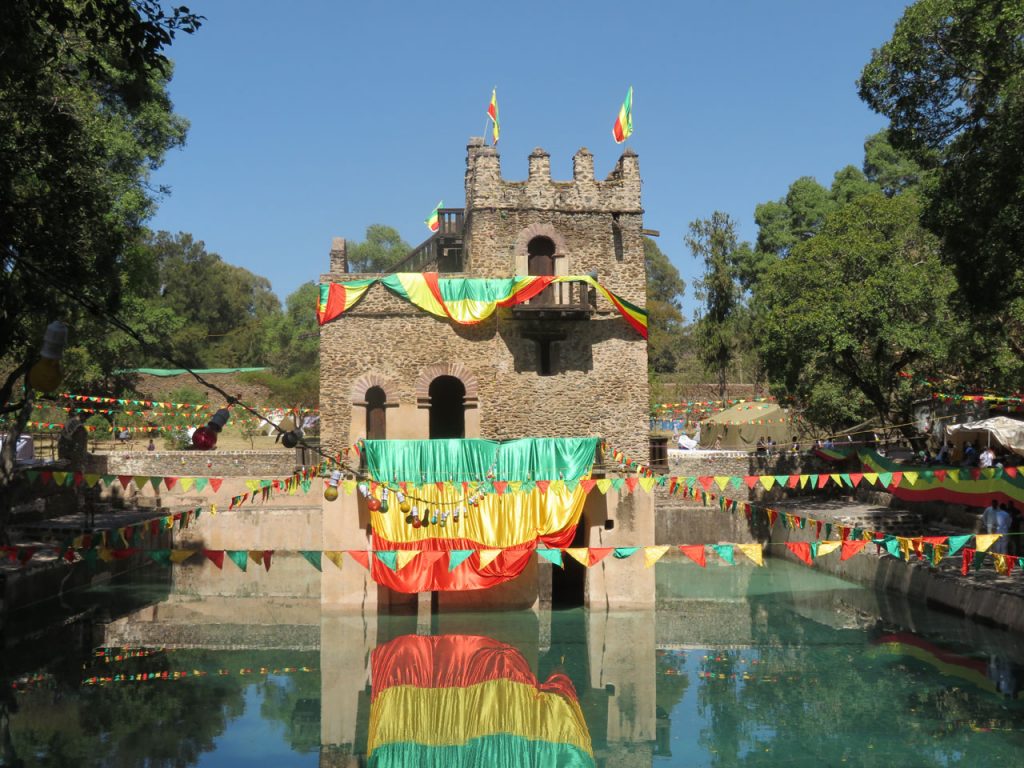
TotalAdventure, a Catholic, went to Ethiopia to explore the origins of Christianity. Dismayed by the ever increasing commercialization of Christmas throughput the world, to the point where religion is barely mentioned ,we decided to go where Christmas is not commercial at all, but a joyous occasion celebrating the arrival of Christ on Earth. Like much of the Christian Orthodox world, Christmas is on January 7th and Epiphany 12 days later on January 19th. Because this year,2020 is a Leap Year Timkat was on January 20th. In the West Epiphany is celebrated as the arrival of the 3 Kings, one from Ethiopia. In Ethiopia Timkat celebrates the Baptism of Jesus Christ. In Gondar’s Emperor Fasilides Baths. After many hours of prayer and singing, male participants will dive in , re enacting the Baptism.

Christianity arrived in Ethiopia by the 4th Century. Traditions and mystical celebrations changed little by the time Ethiopia was effectively cut off from Europe and the Holy Land by the 12th Century. The ceremonies we see here, especially in the video above, are the closest to Original Christianity.
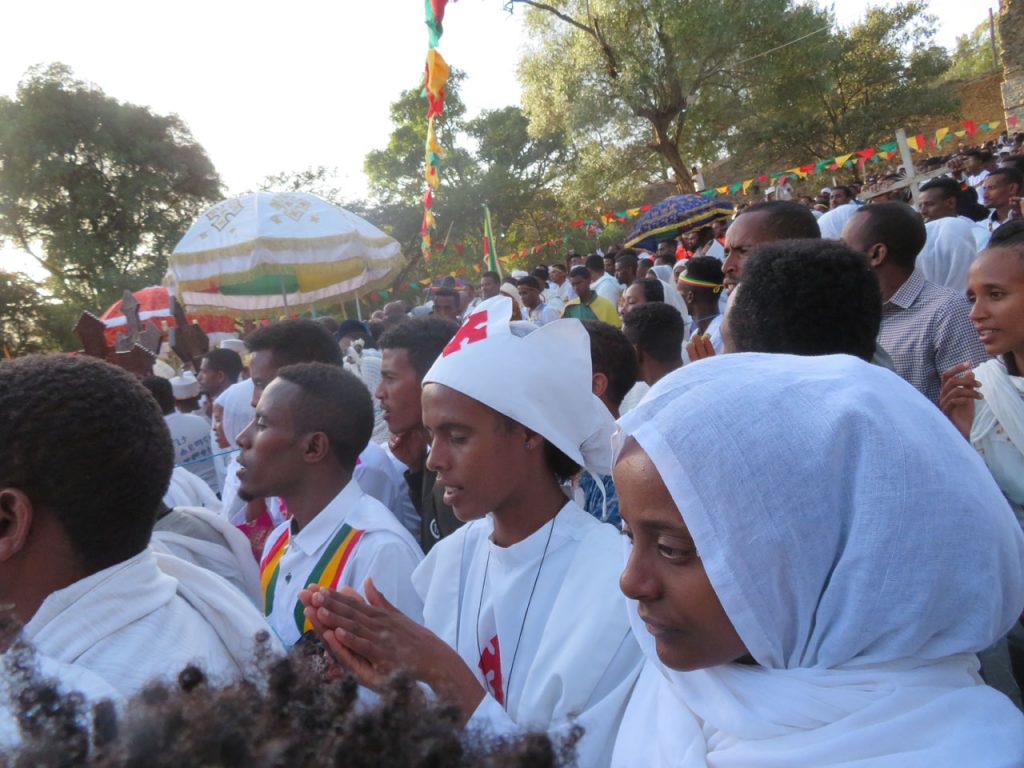
As darkness falls on Timkat Eve, the momentum builds, with prayer, chanting and singing.
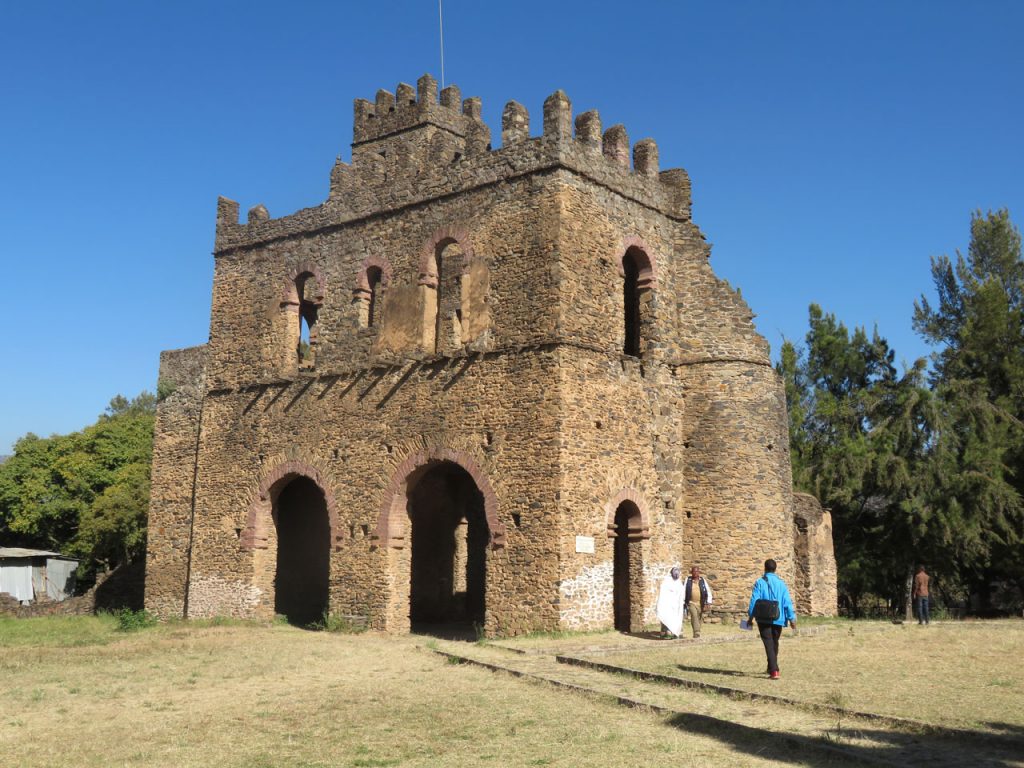
Another palace of Gondar.
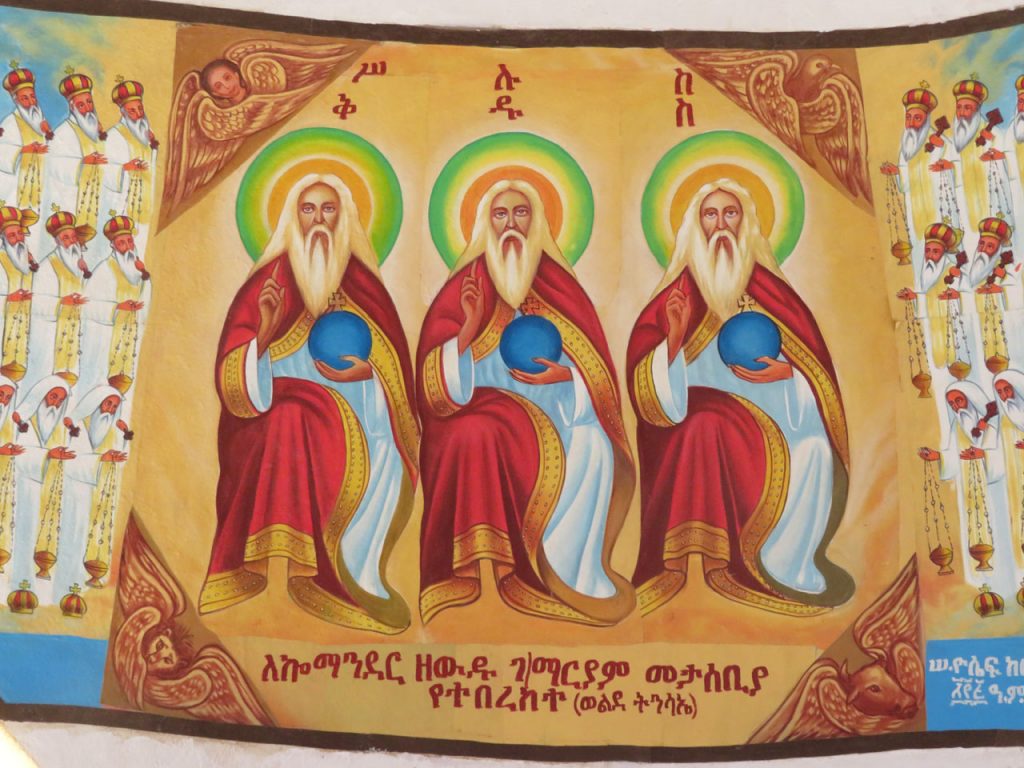
The Three Kings.
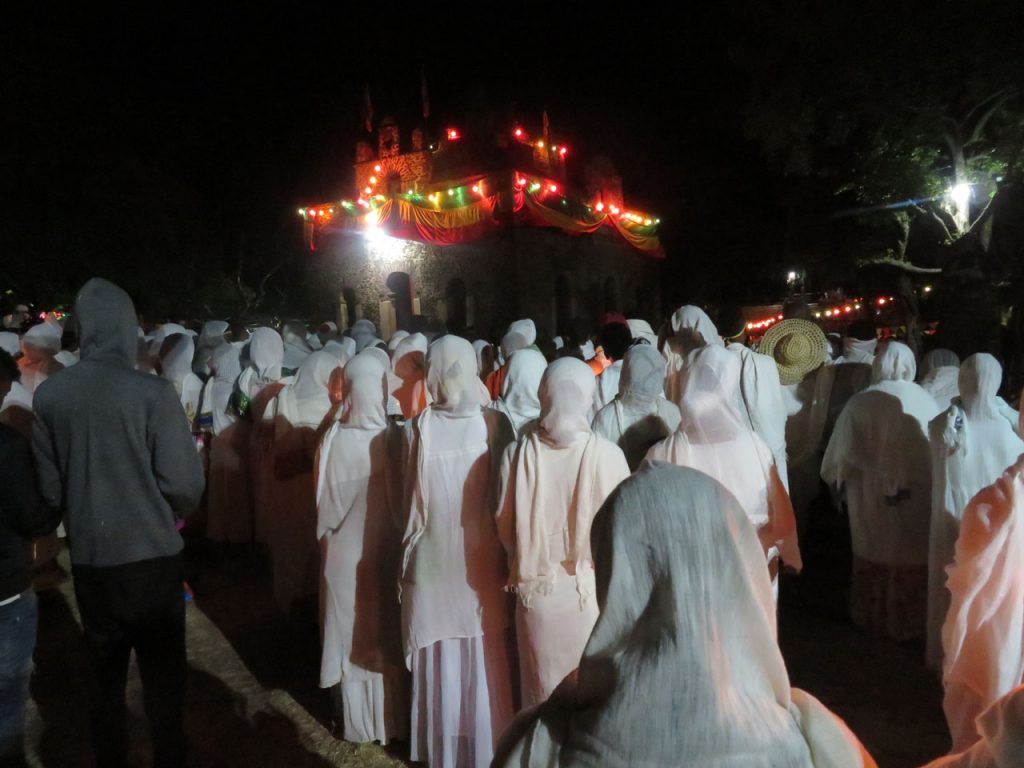
TotalAdventure returned to the Fasilides compound by 5 AM. The Faithful were fervently at prayer.
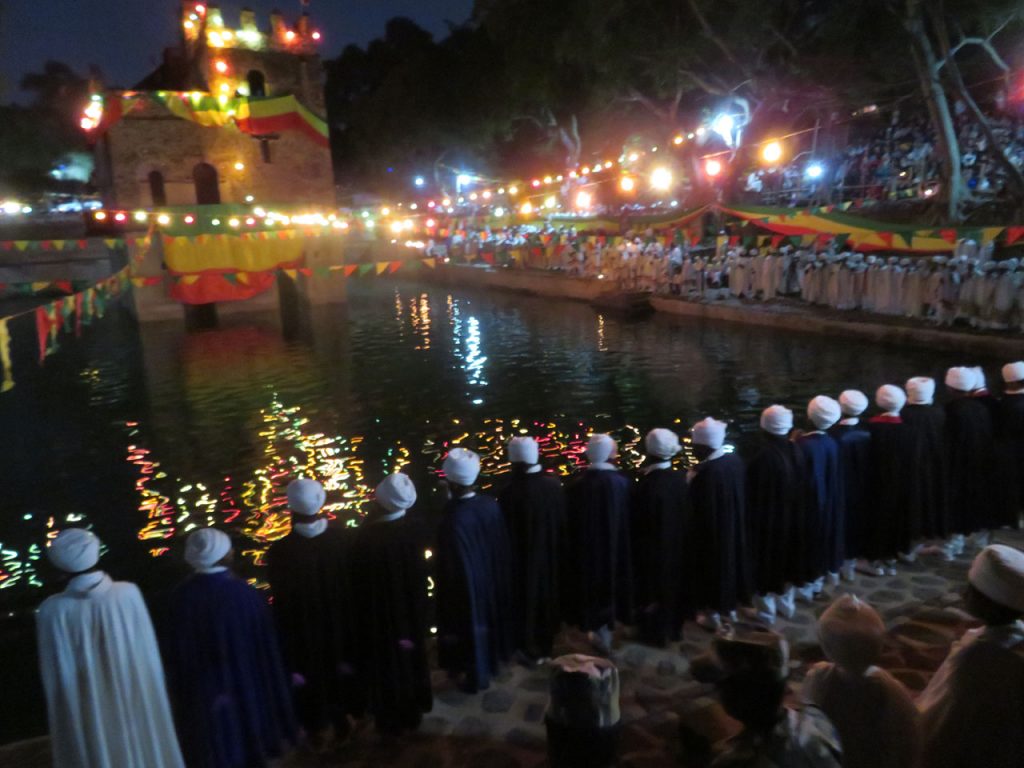
Monks Sing Around The Baths as they have all night.

Dawn Approaches.
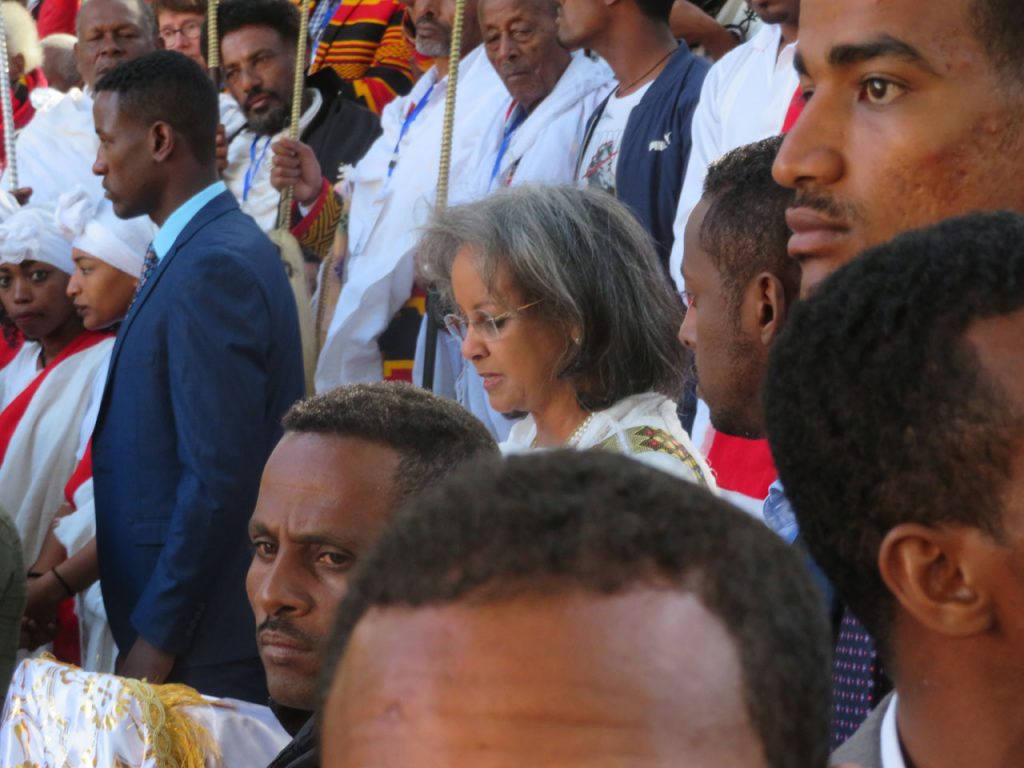
Sahle-Work Zewde, the President of Ethiopia, Came From Addis Ababa To Take Part In The Ceremonies.
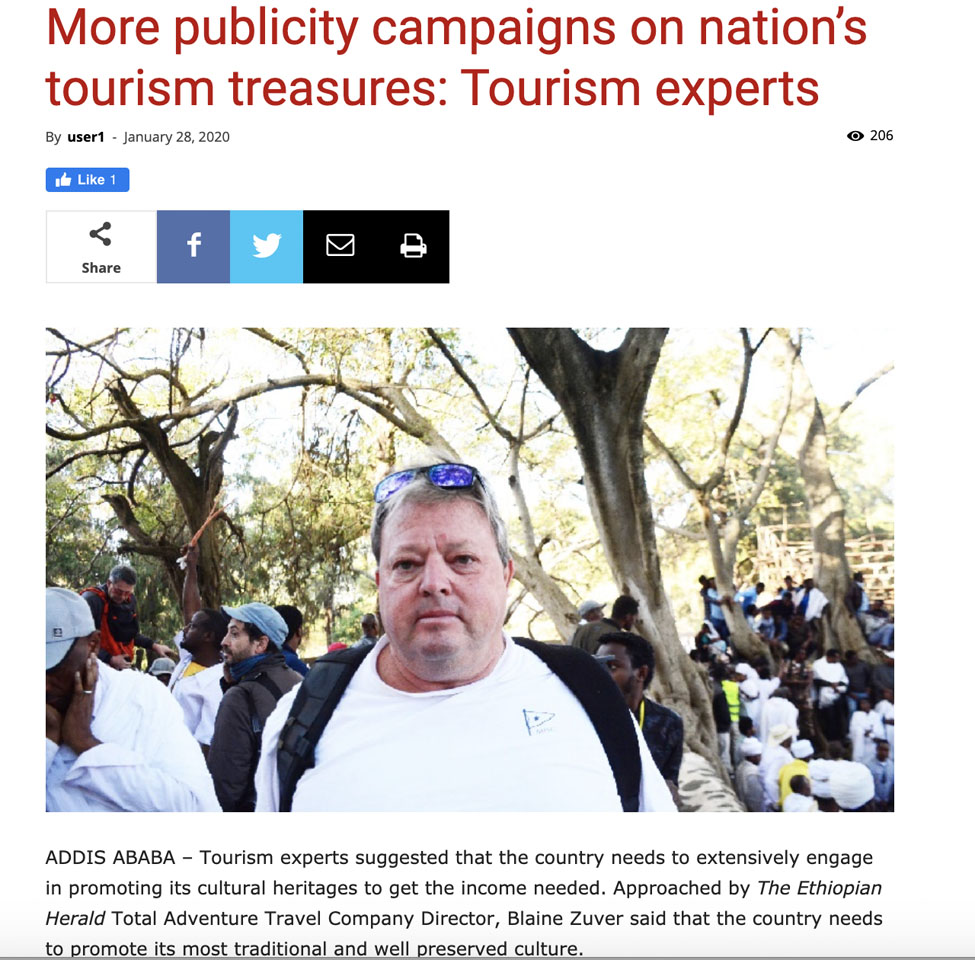
Blaine Zuver, Director of TotalAdventure, Is Interviewed For the Ethiopia Herald. Story Here.

Part of The President’s Security Unit. Many soldiers were on patrol as well.

At last , after sunrise, the clarions blow and joyful adherents of The Lord re enact The Baptism.

Timkat 2012 ! (2020) The Ethiopian Calendar is 8 Years Behind The Western Calendar.
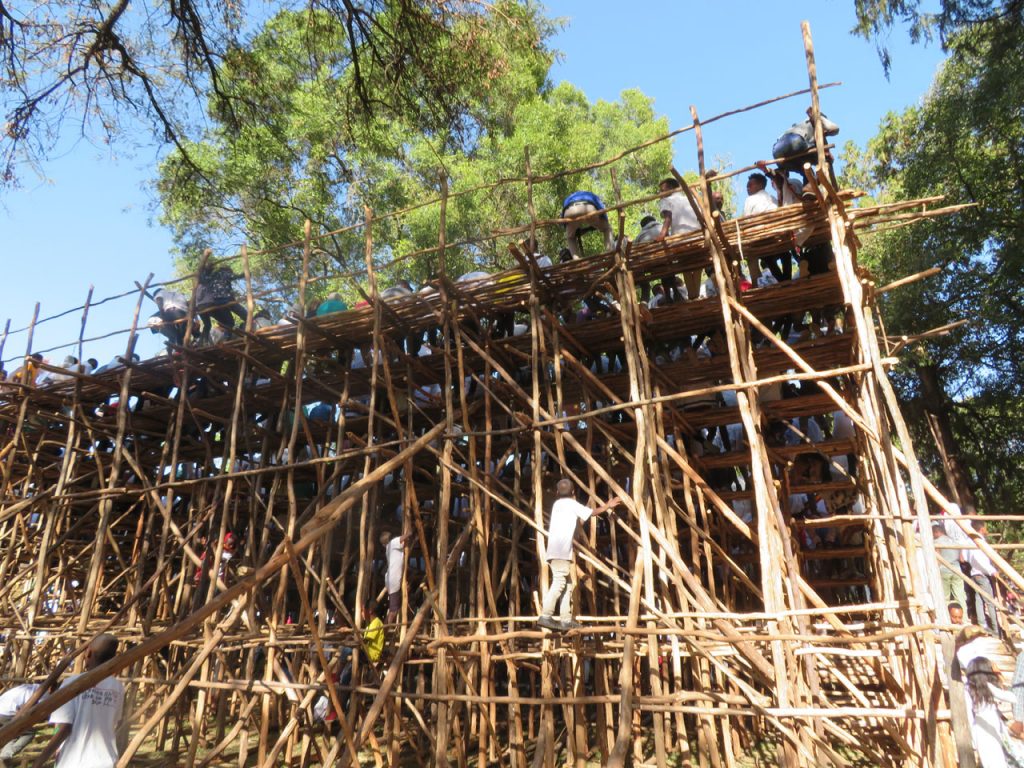
A Very Unfortunate Incident Occurred At Timkat. Bamboo bleachers are constructed each year so the crowds can get a view above the walls surrounding the Holy Pool. They are built to accommodate perhaps 200 or 300 people.

Just before sunrise the overloaded structure collapsed. Ten people were killed. More than 200 went to the hospital, some paralyzed for life. The ceremony was disrupted for about an hour, then went on.
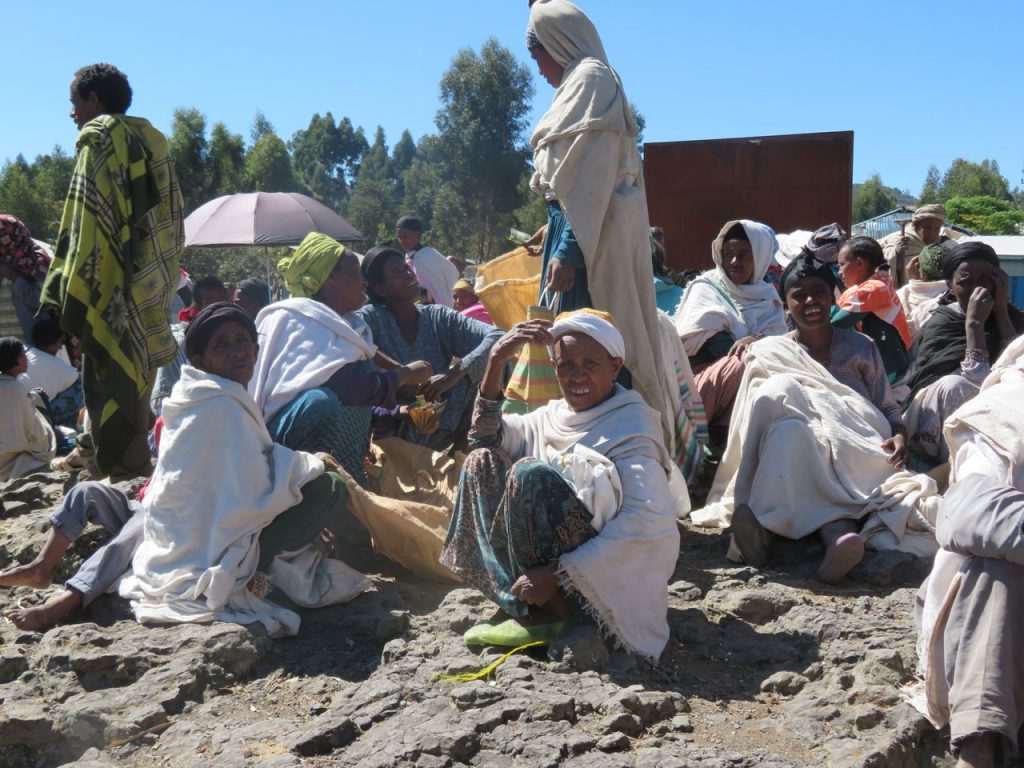
As Timkat approaches, the entire country gets into celebration mode. We leave Lalibela on. Saturday – 2 days before. Roadside markets are busting, as people stock up on food for the large family feasts after a 24 hour fast.
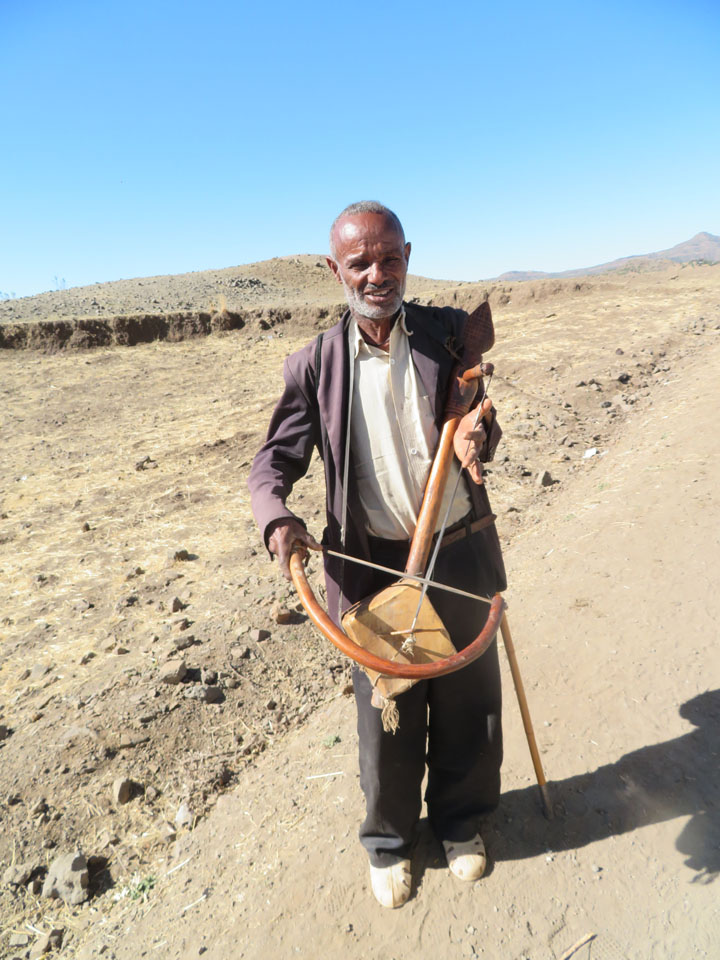
A music man in the Highlands playing his masinko. Watch him play on the video above.
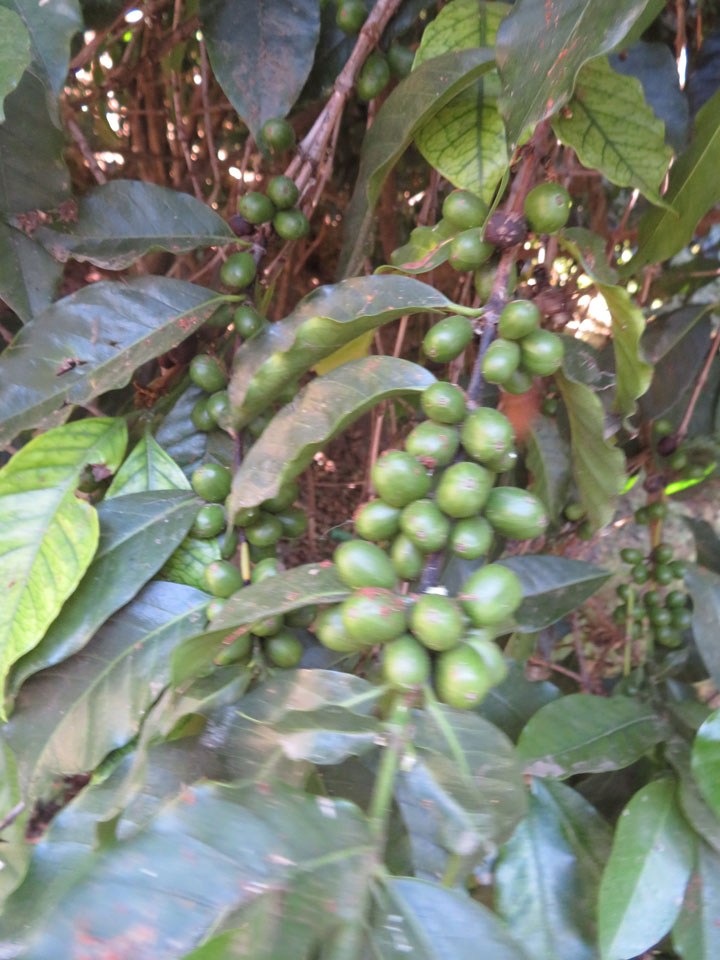
Coffee beans growing on the side of the road. Ethiopian Coffee is amongst the best in the world !
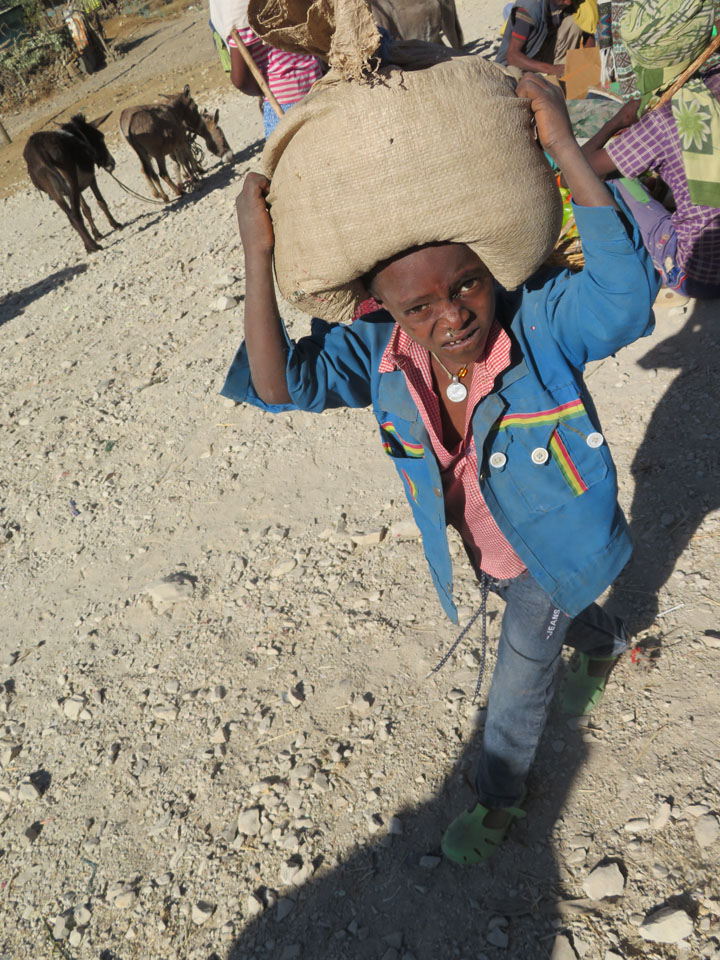
A boy brings coffee to market. Rural children work for their families, but not for others as far as we could tell. It’s a necessity that armchair moralists of the West may not understand.

All food is very fresh.
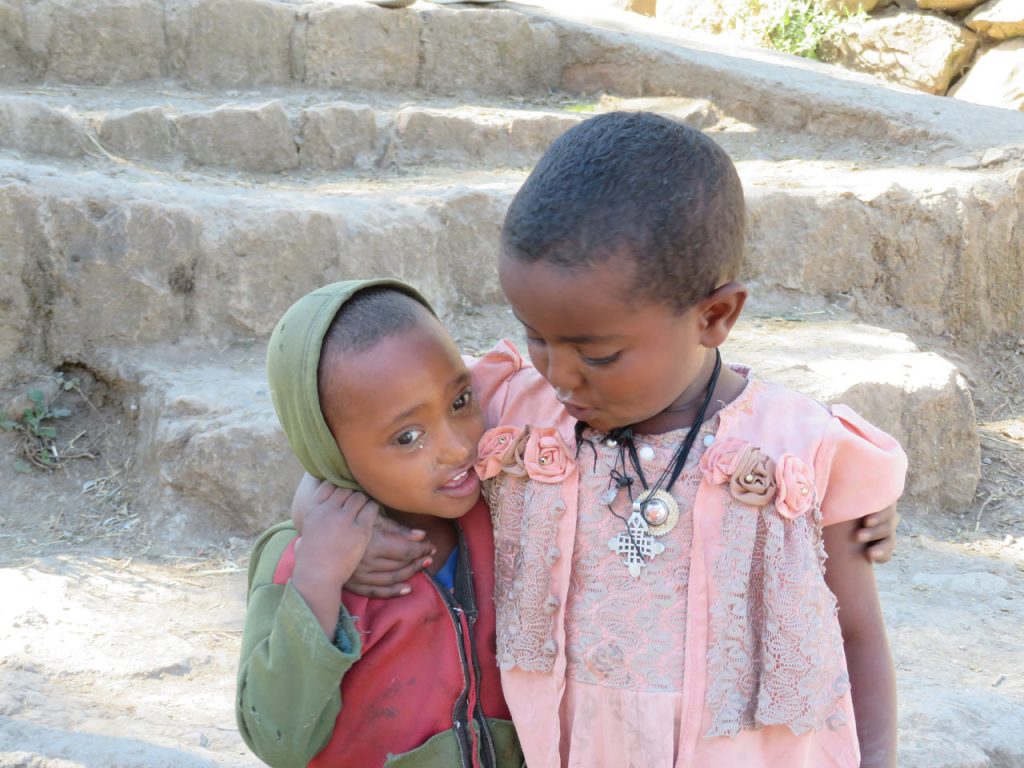
Two sisters off to market.
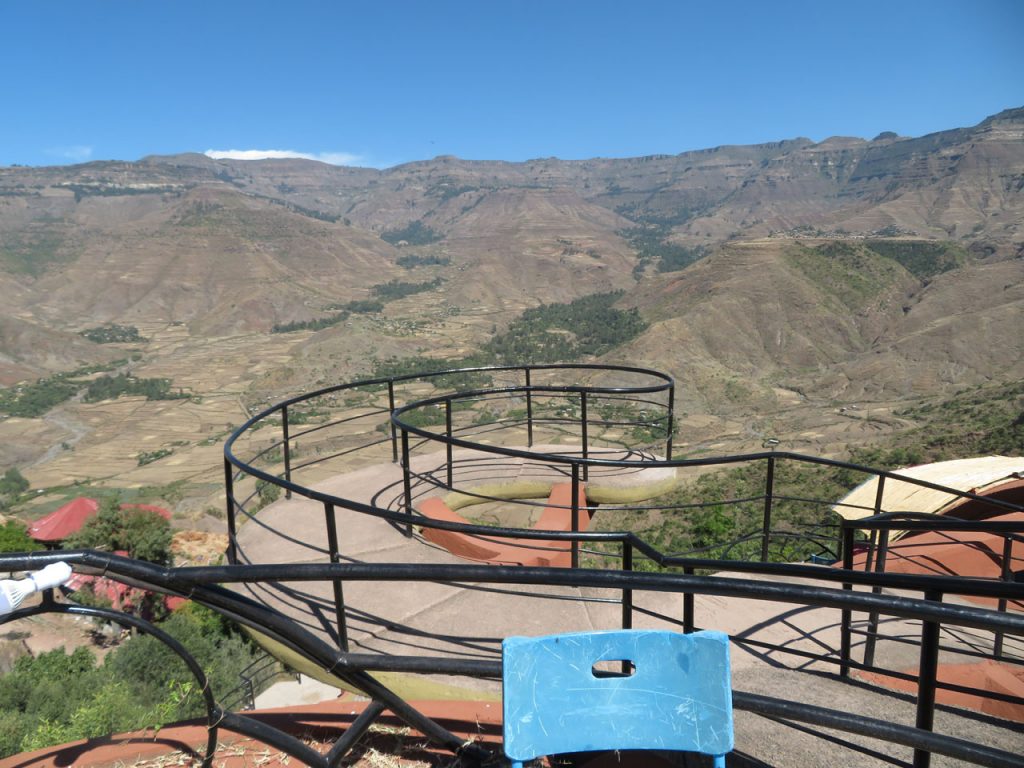
Restaurant Mountain Vista.
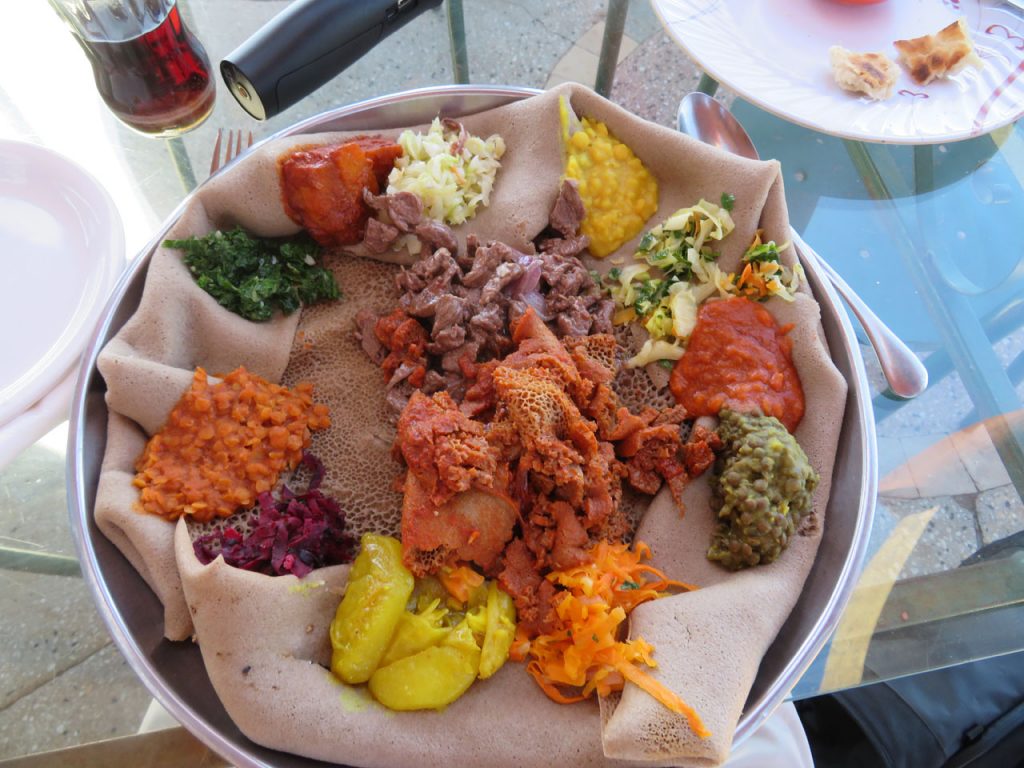
A colorful Injera lunch.Various meats and vegetables, mostly cold.
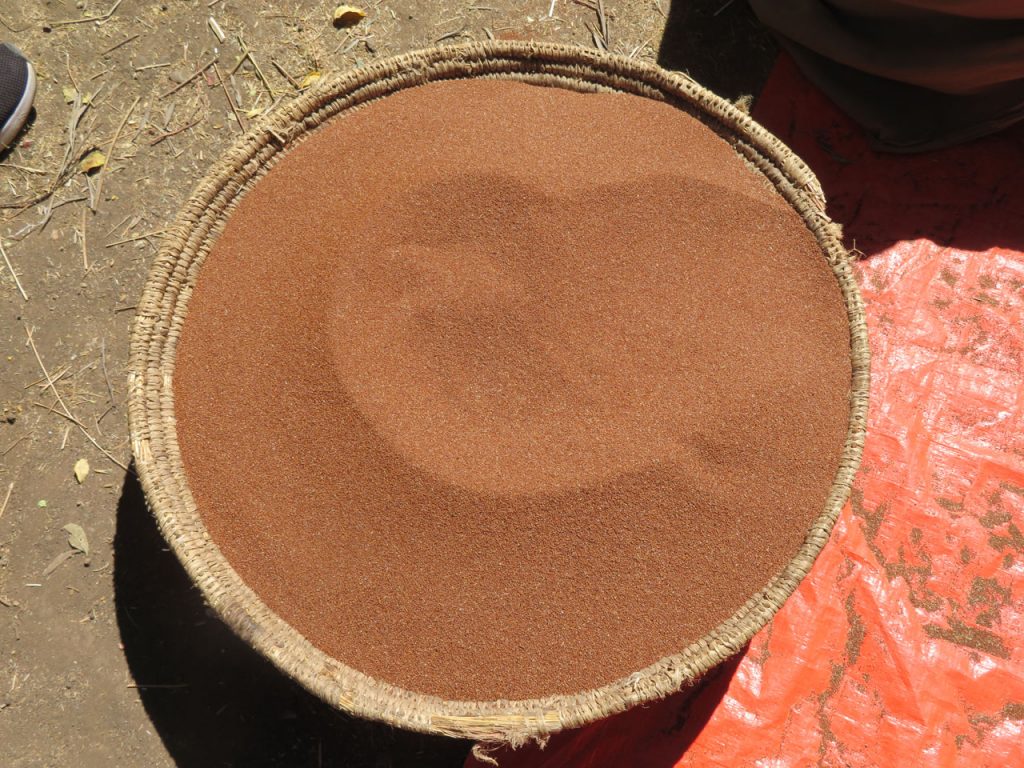
Injera “flour”

United States help is much appreciated. With 109 million people in a mostly desert country , extra supplies are needed.
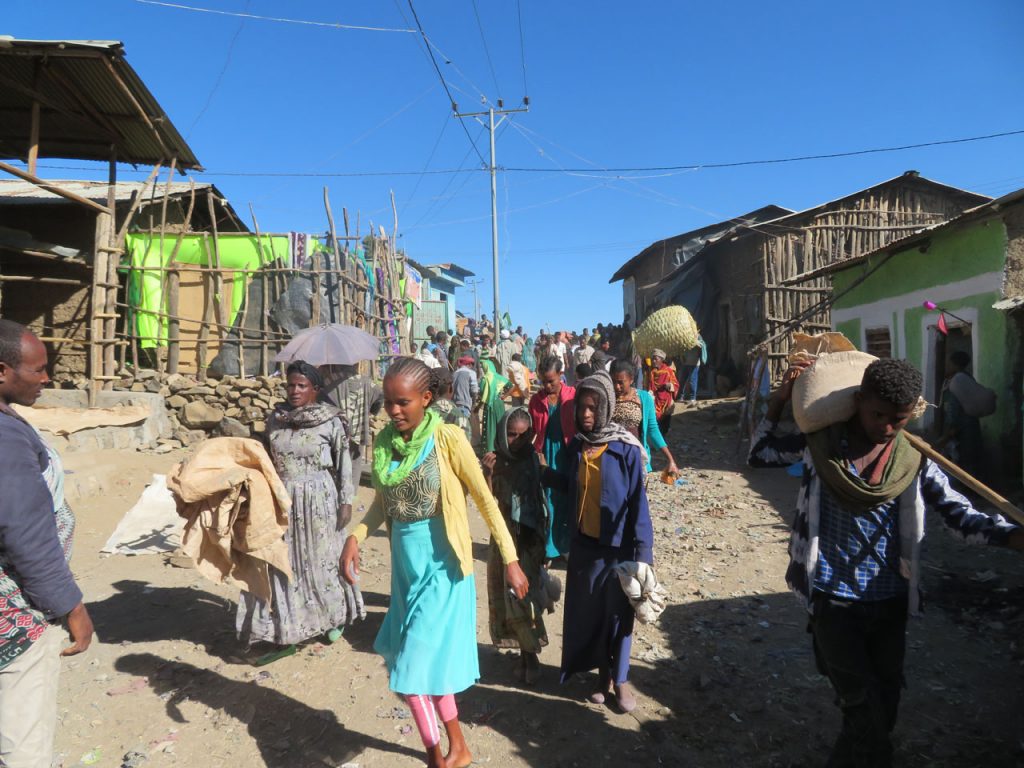
A cold Saturday morning, everyone on the way to buy and sell.
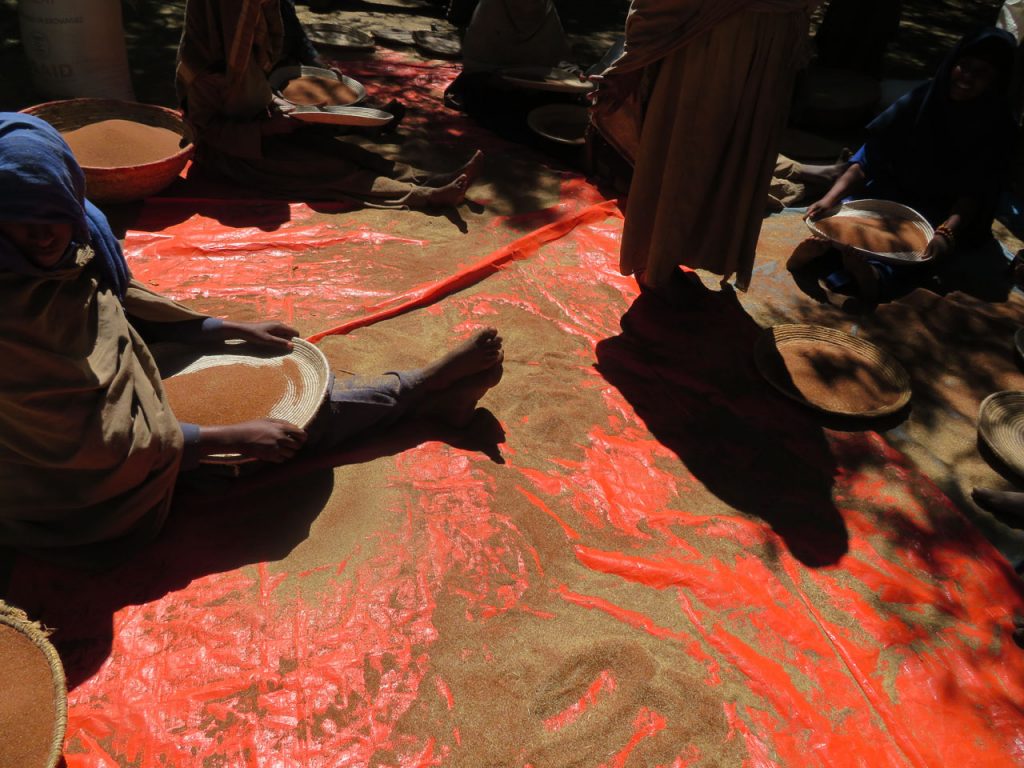
Drying grain.
Spices are abundant.

Spices Are Abundant.
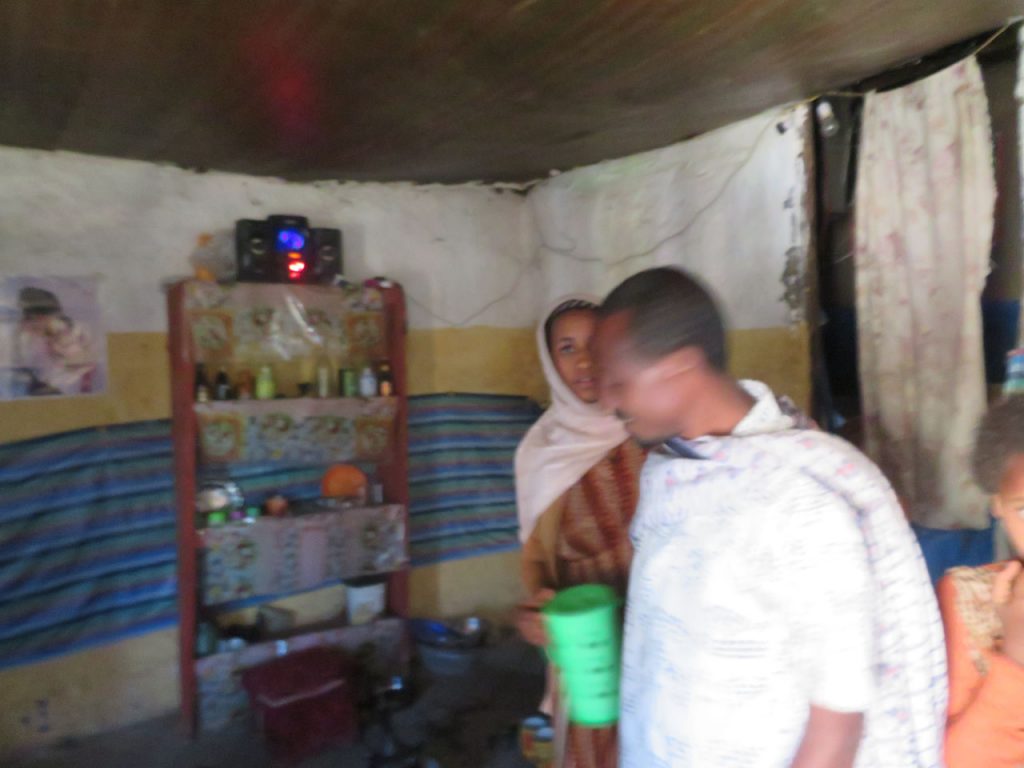
Inside a market bar. TotalAdventure was obliged to try some of the local firewater – made from fermented fruit that still had seeds floating in it. Powerful ! Though it was only 9 AM, music was blasting.

Bamboo for sale.
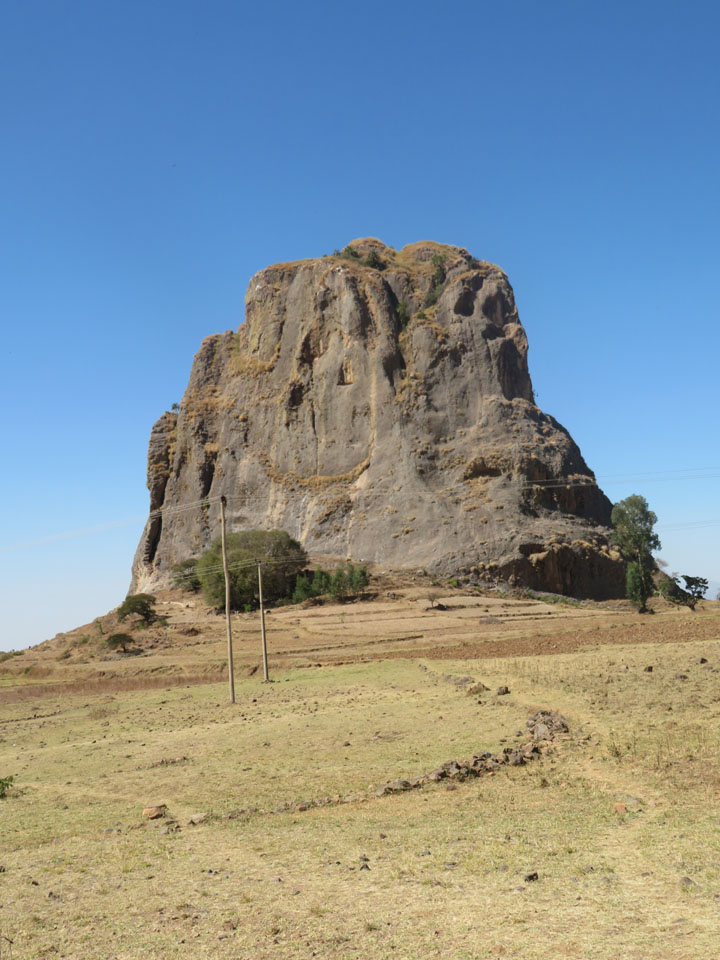
Approaching Gondar.
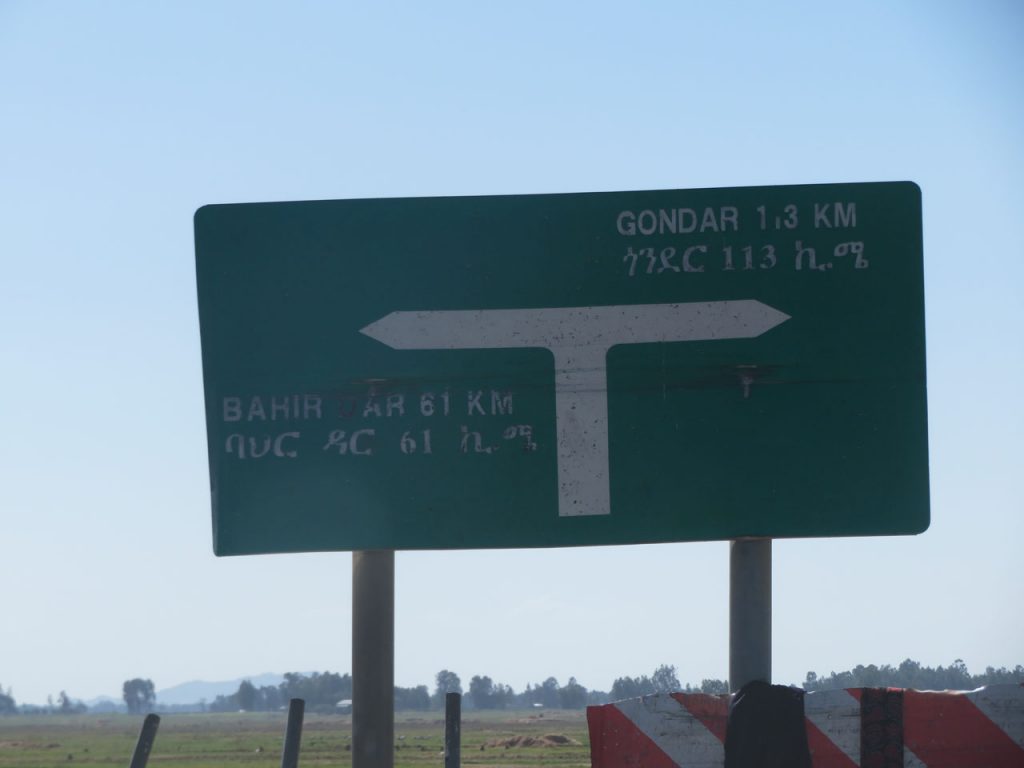
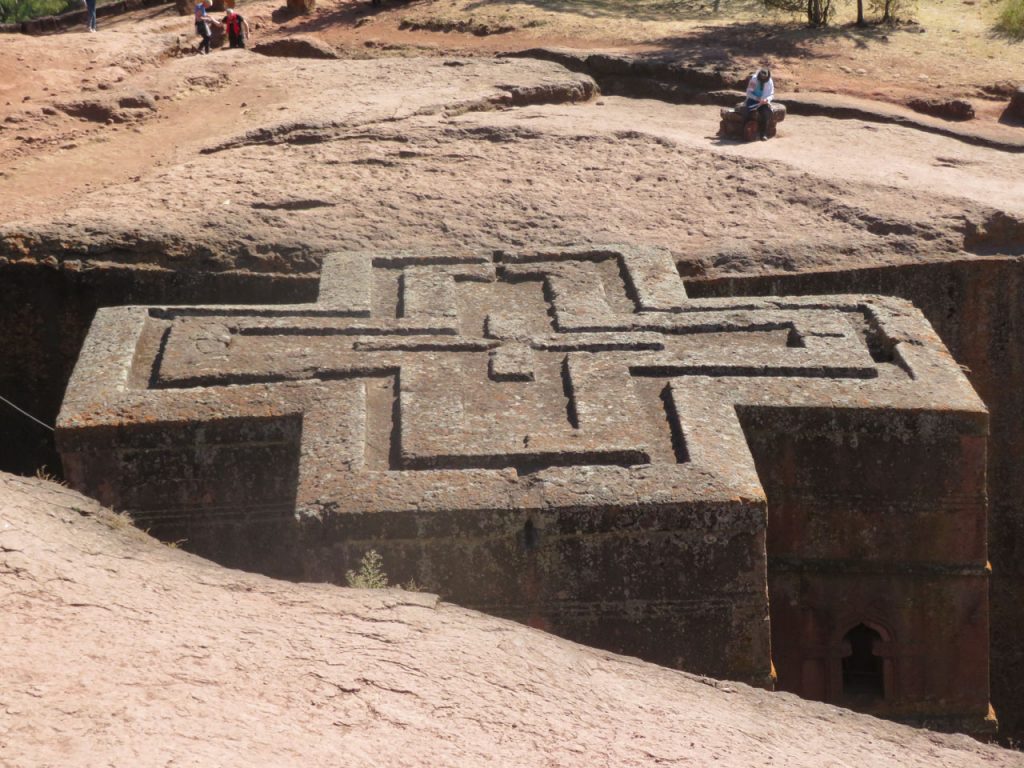
In The Twelfth Century King Lalibela Decreed A Holy City Known As New Jerusalem – To Be Built From Solid Rock. Above Is Beti Gyorgis – St.George ,One Of Eleven Churches Carved From The Earth.
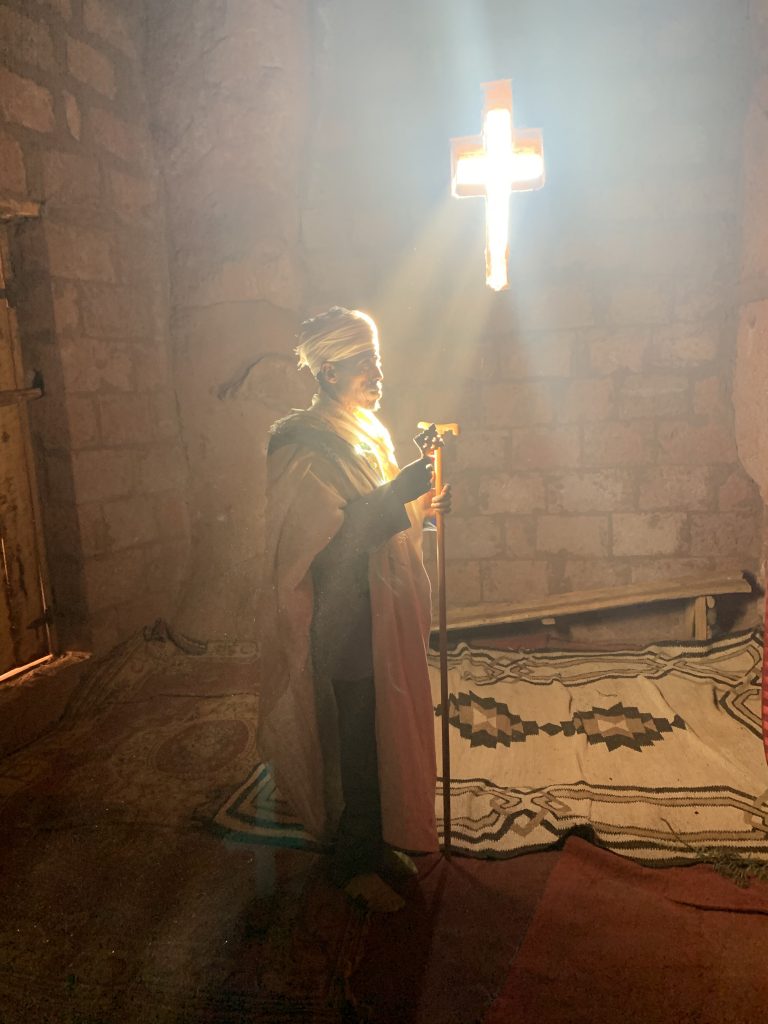
The Light of Jesus Shines Upon A Monk.

Days Spent In Prayer Unchanged From The Fourth Century.

Very Little Restoration Has Taken Place. Due To The Arid Climate And Solid Rock Construction, Lalibela Remains Much Intact.

Envy Of The Crusaders Who Sought Ethiopia, But Couldn’t Find It.

There Are 2 Masses Per Day, At Dawn And At Noon,Each For Two Hours. No Eating Or Drinking Is Permitted Beforehand ,Not Even Water.

While Ethiopia is being “Discovered ” there are few crowds.
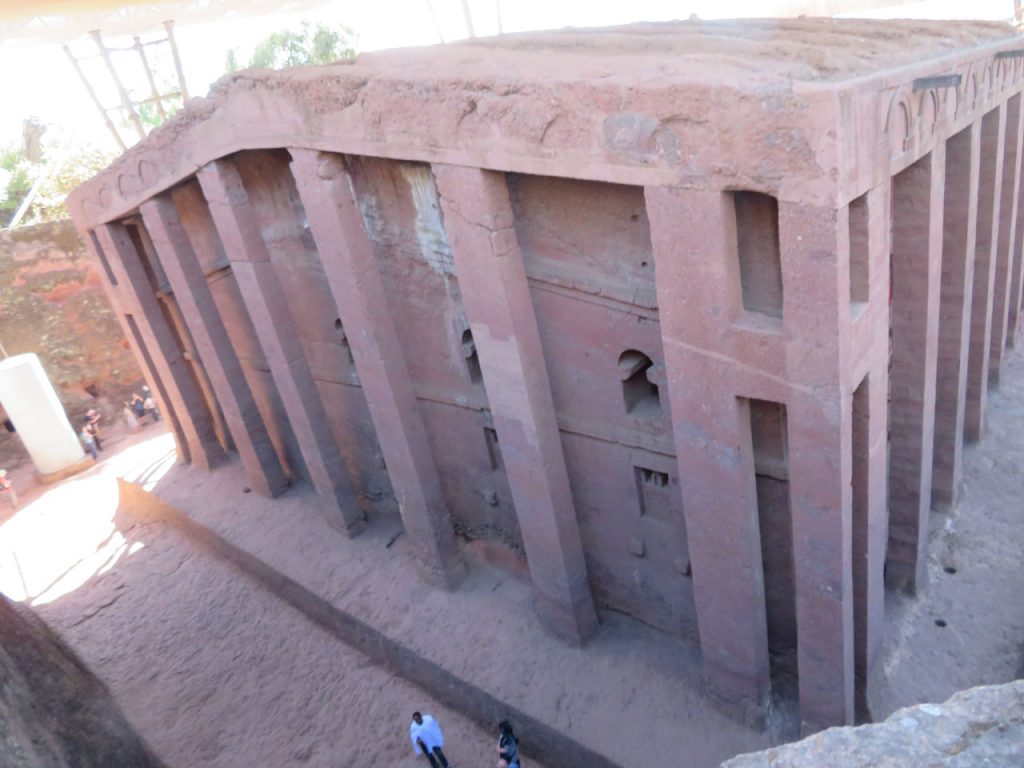
Rock Church From Above.

An Approach To Church.
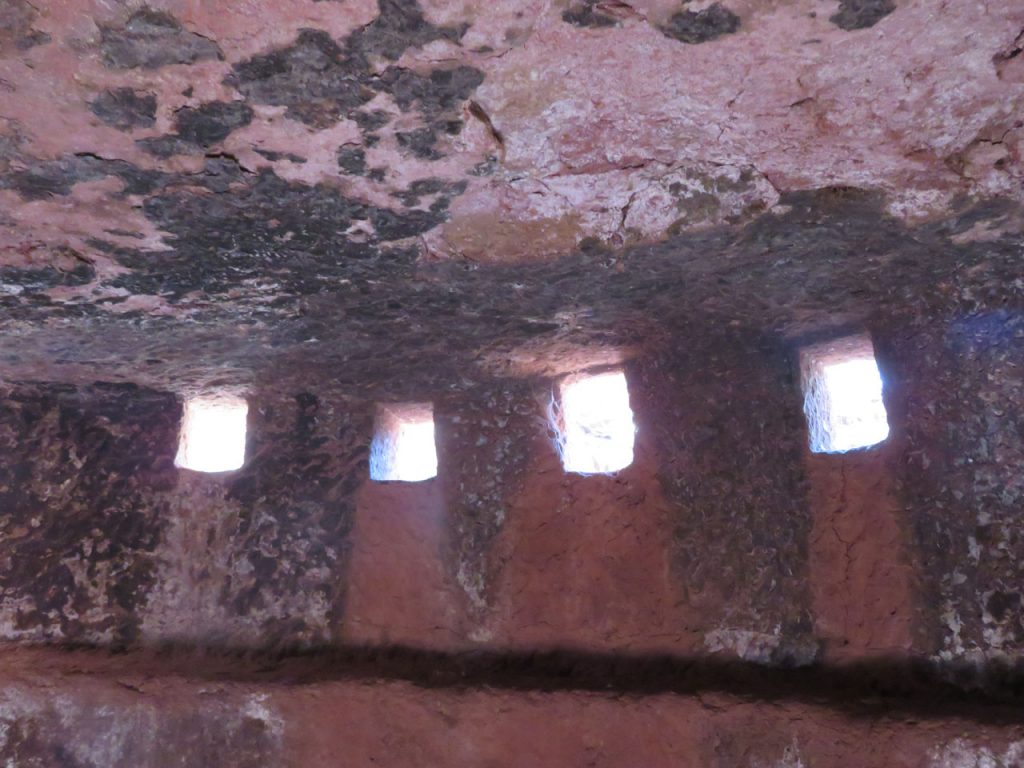
Circular Compound.
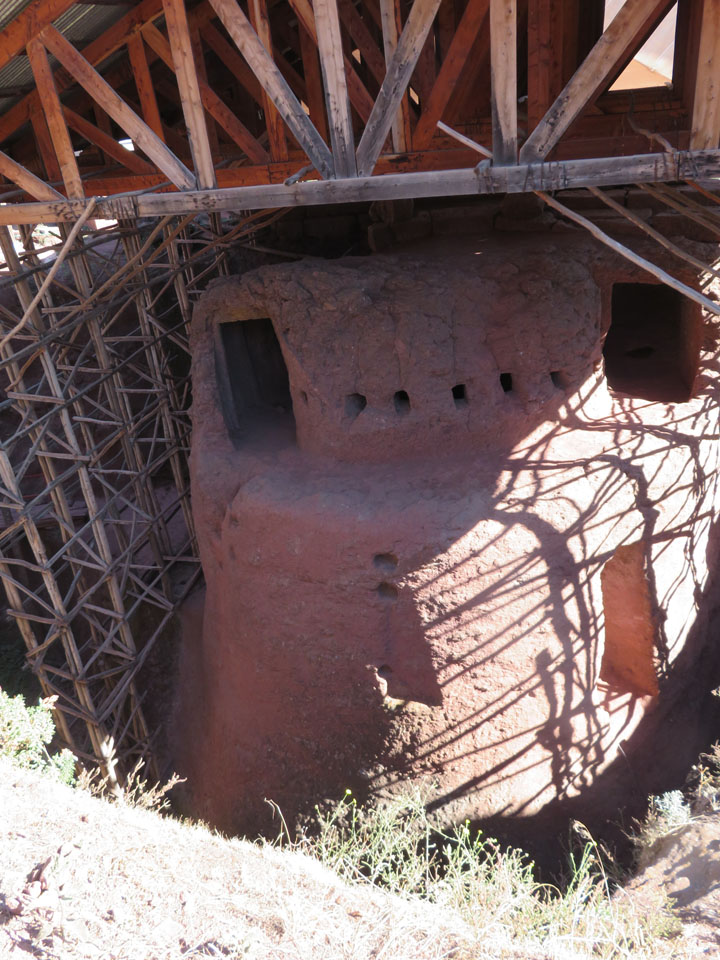
Exterior of Compound.
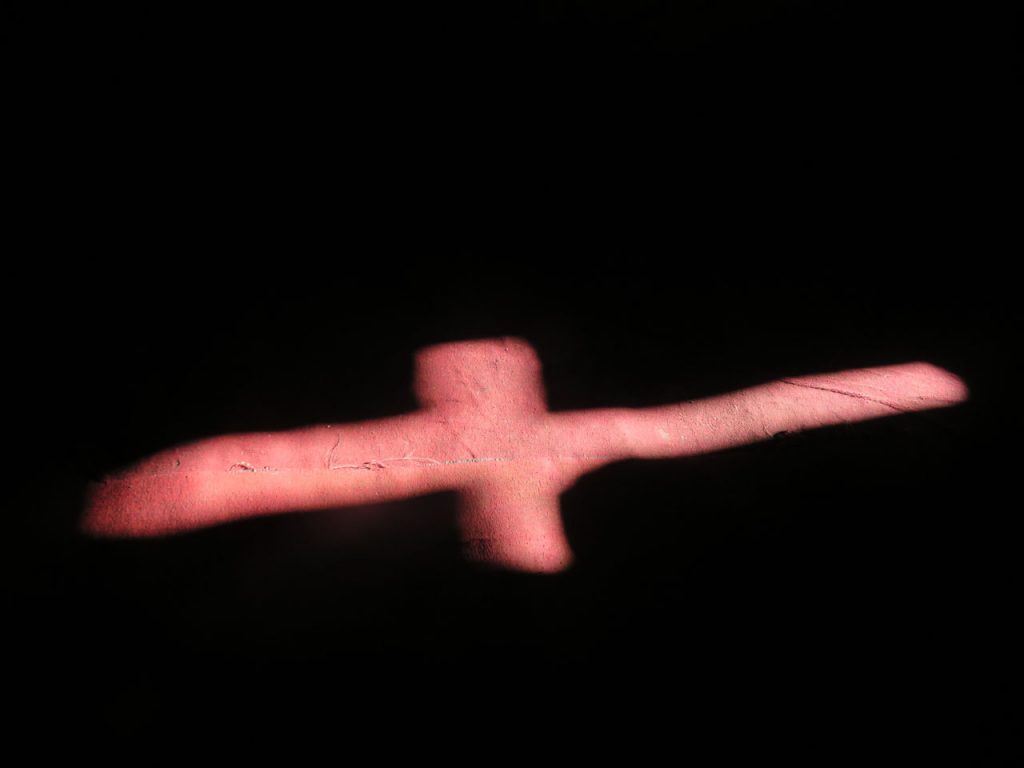
Light Of Jesus.
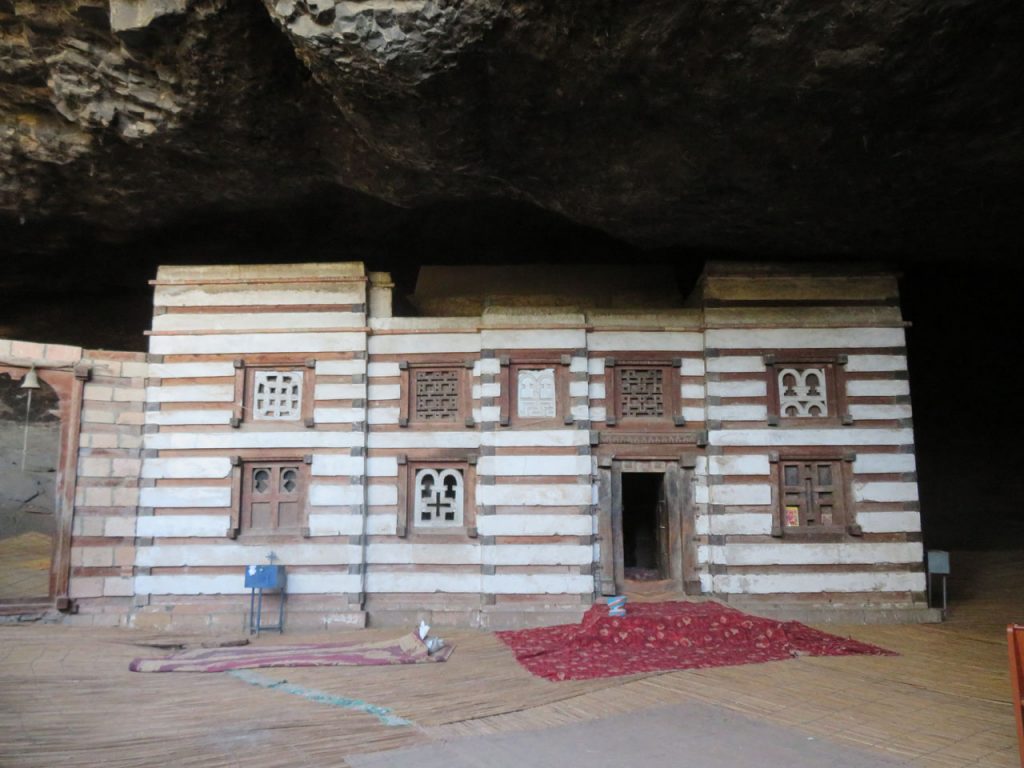
Outside Lalibela- A Church Built In A Cave.

Guard’s Rifle.

St.George From Below.

Holy Waters – A Bit Stagnant.
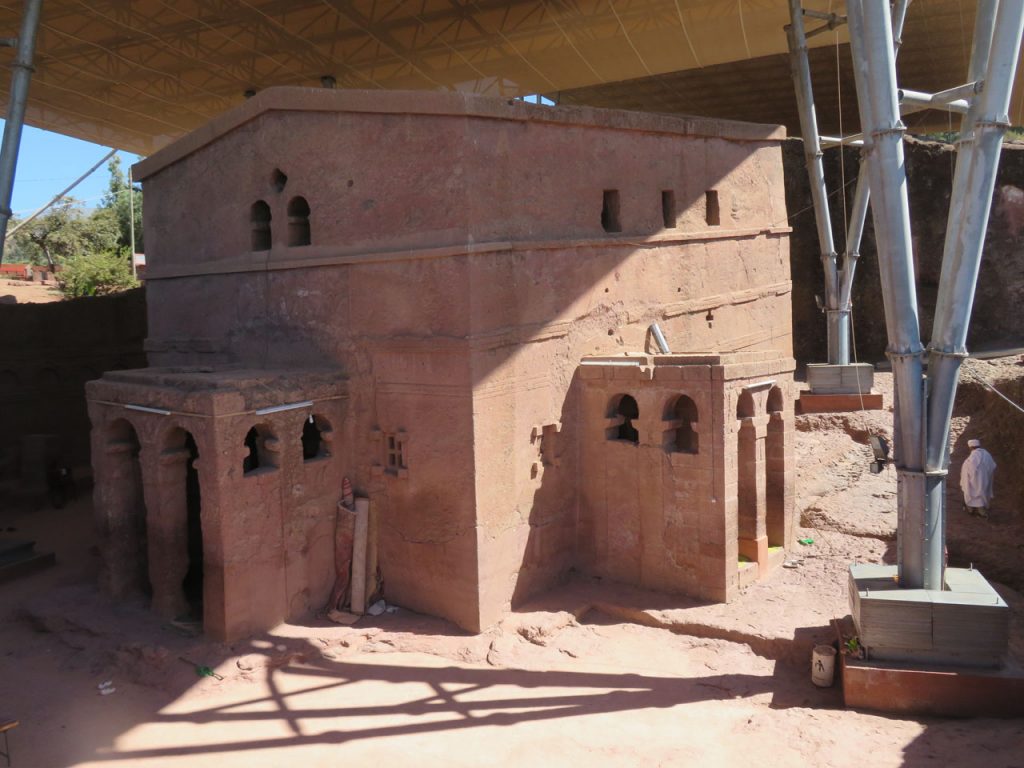
No Assembly – Just Carving !
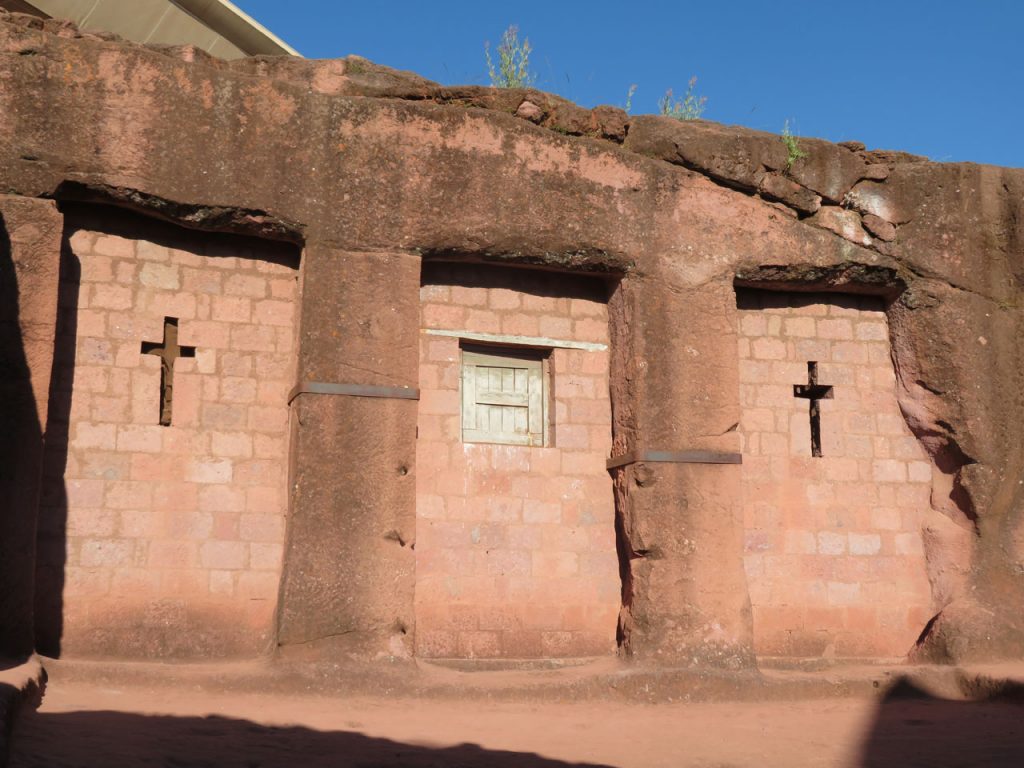
Church Exterior.
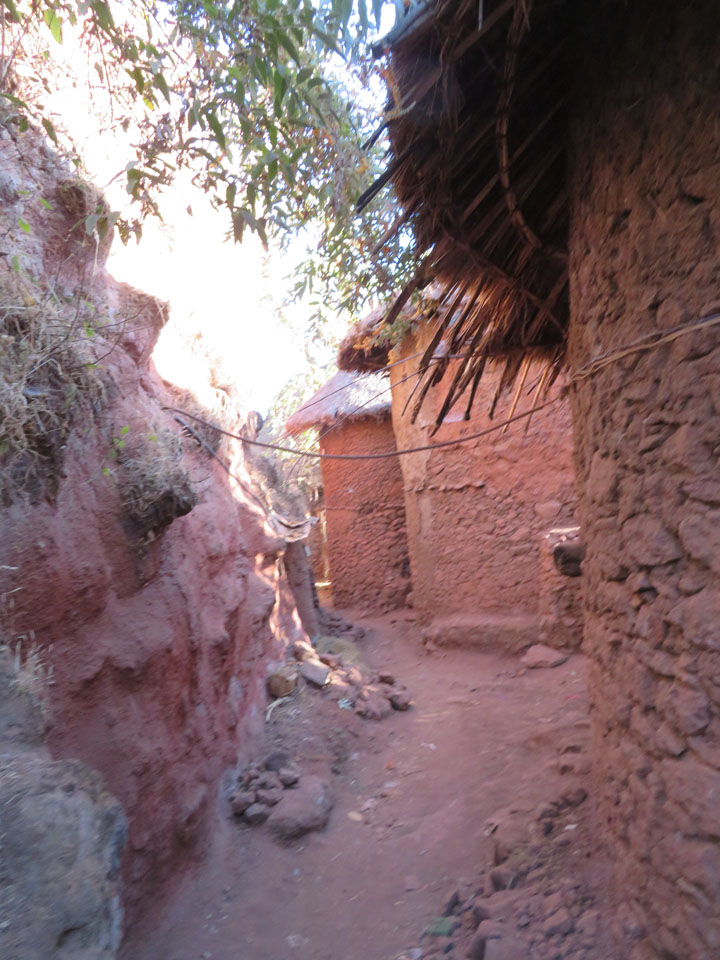
Lalibela Houses. Only Recently Did The Town Receive Electricity.
The two day 500 KM journey from Addis Ababa to Lalibela is rugged and fascinating. Ethiopia is a land harkening to Biblical times, with a few modern twists like cars and smartphones.
The two day
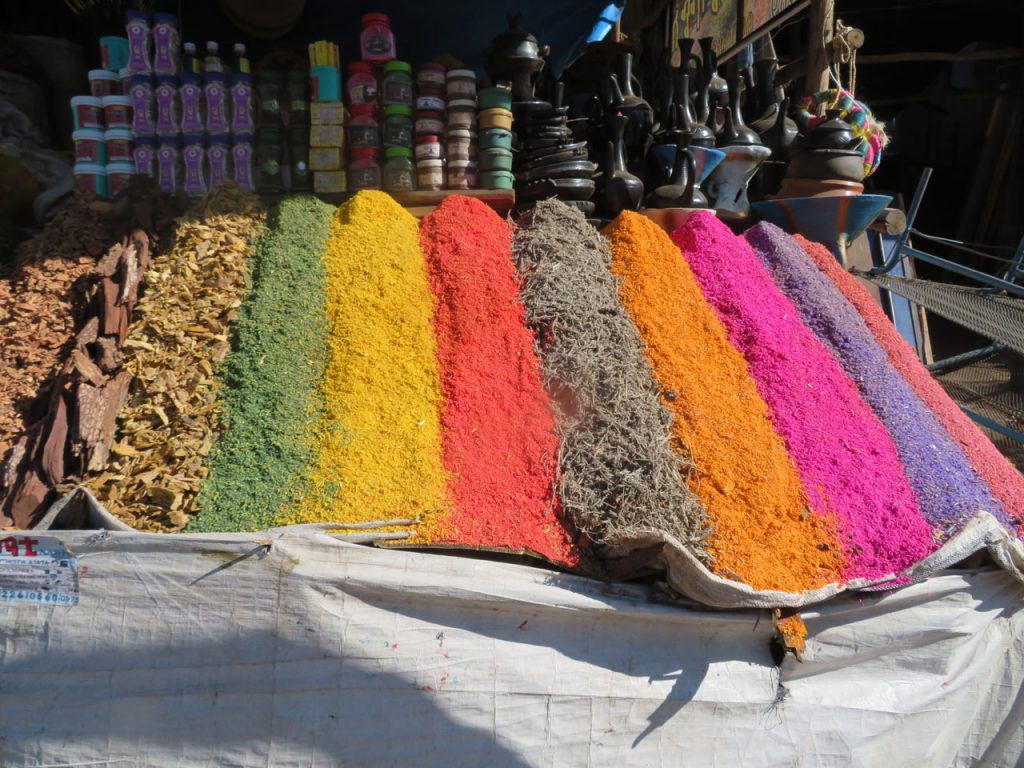
On the first night , TotalAdventure stayed in Kombolcha and posted for the first time to the Magazine. After that , the voyage became too bsuy, exploring and traveling until well past sundown, meals with locals, and slow internet made daily contributions difficult. The next morning, before leaving the city, we passed through a market on the main street.
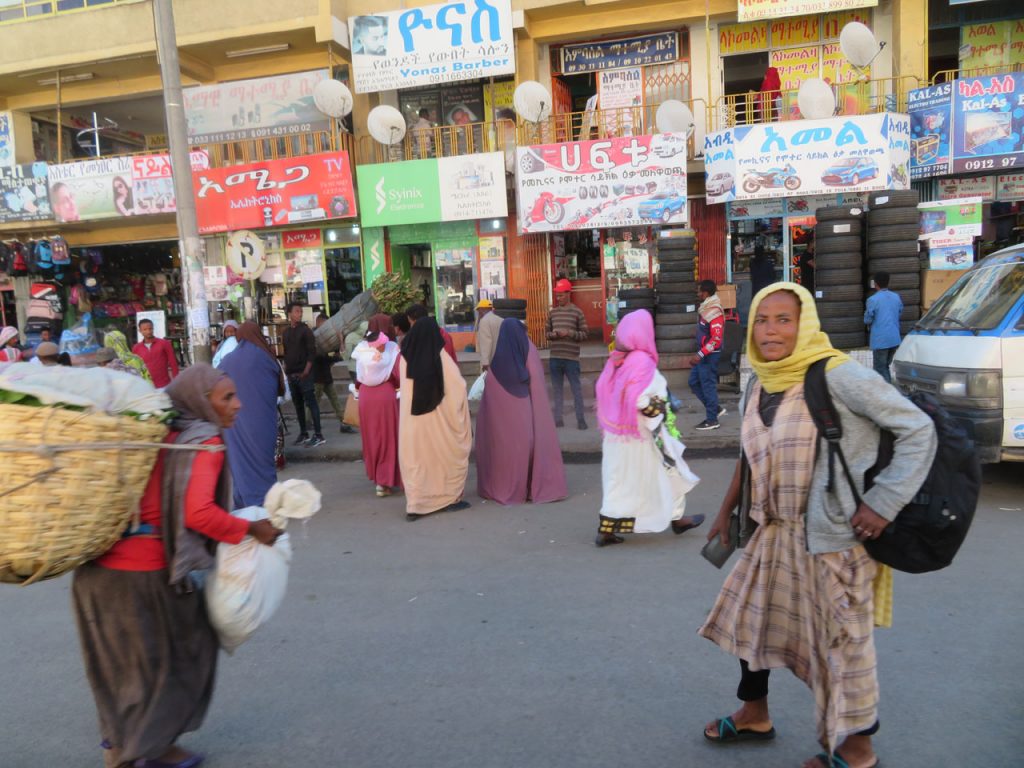
People walk for miles from the countryside to sell. their wares in the market.
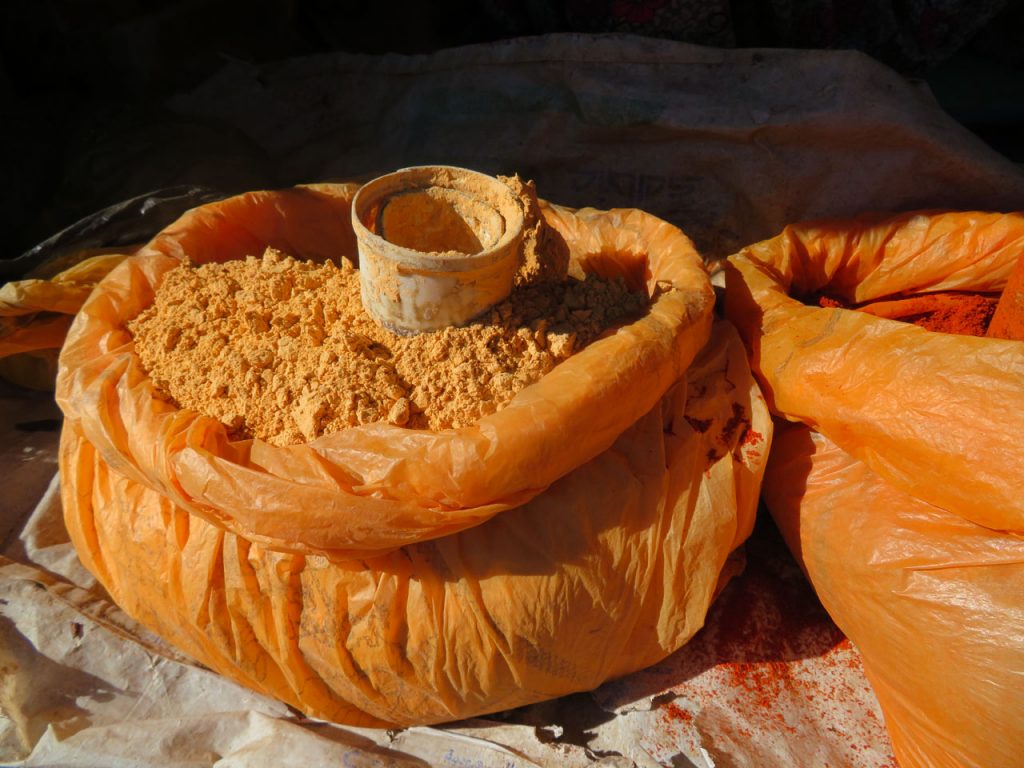
Ethiopian markets have many spices In the US this would be sold in tiny packets for many times the price.
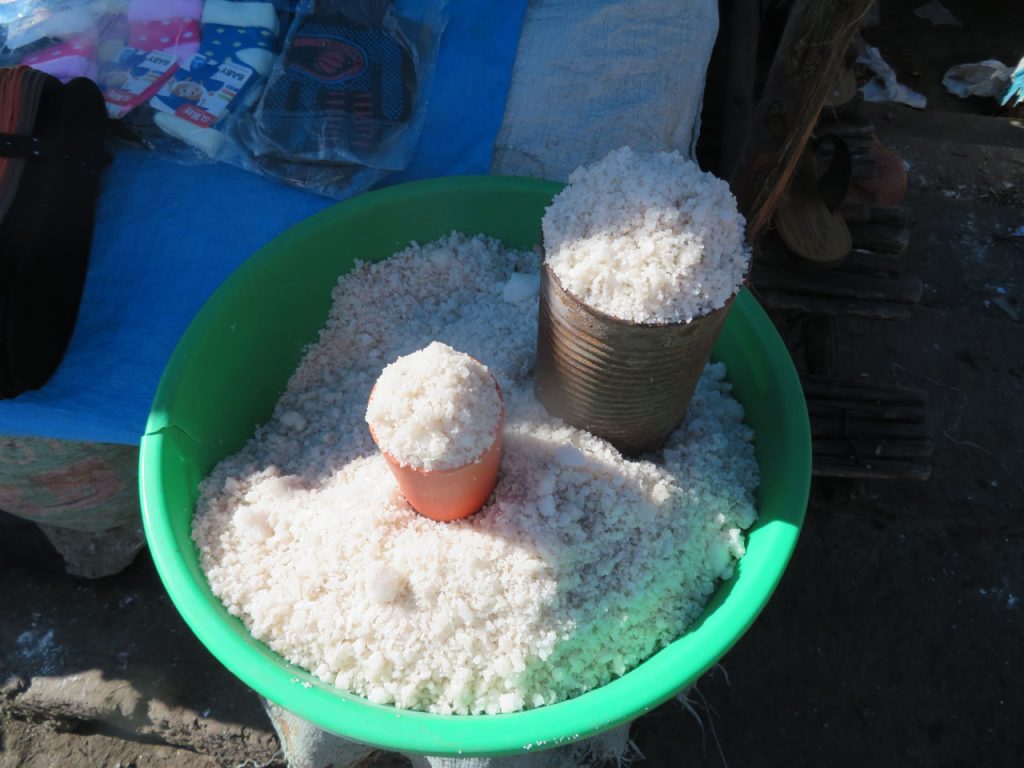
Salt , perhaps from Danakil .
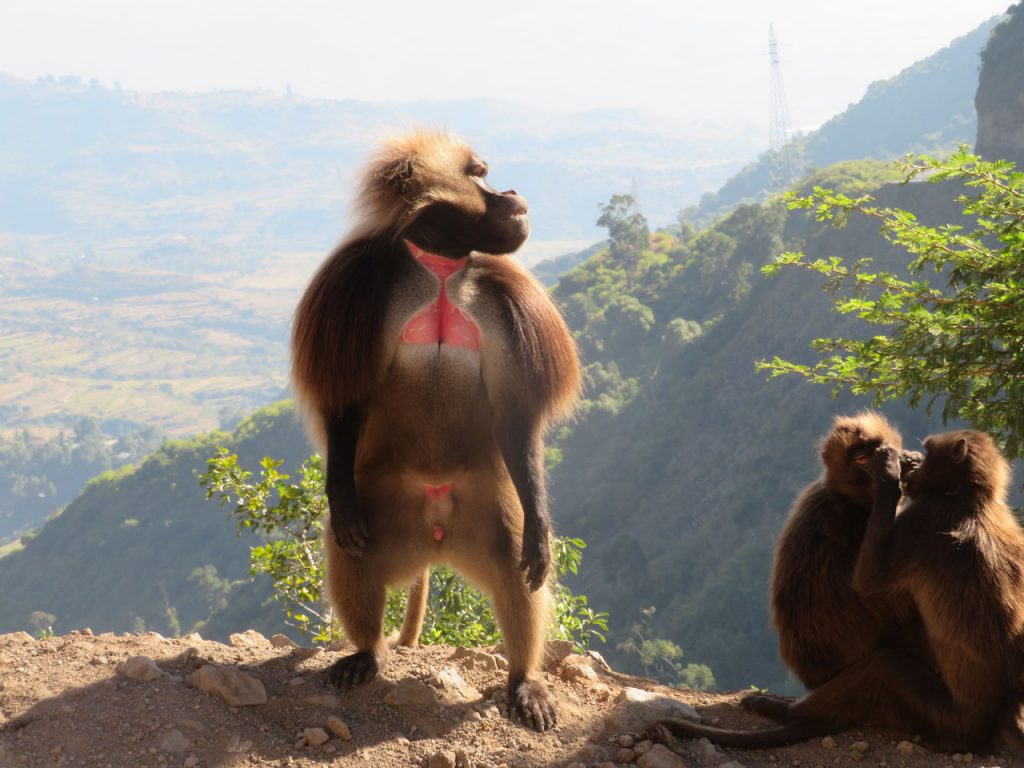
Outside town, Gelada monkeys also shopped for food, asking passerby in cars. While many think the climate must be hot, as Ethiopia in in Africa, we were almost always between 7500 and 11000 feet – 2300m -3400m. In January daytime temperatures were generally in the low 70s F( 21C) to about 40 F at night ( 4C ).
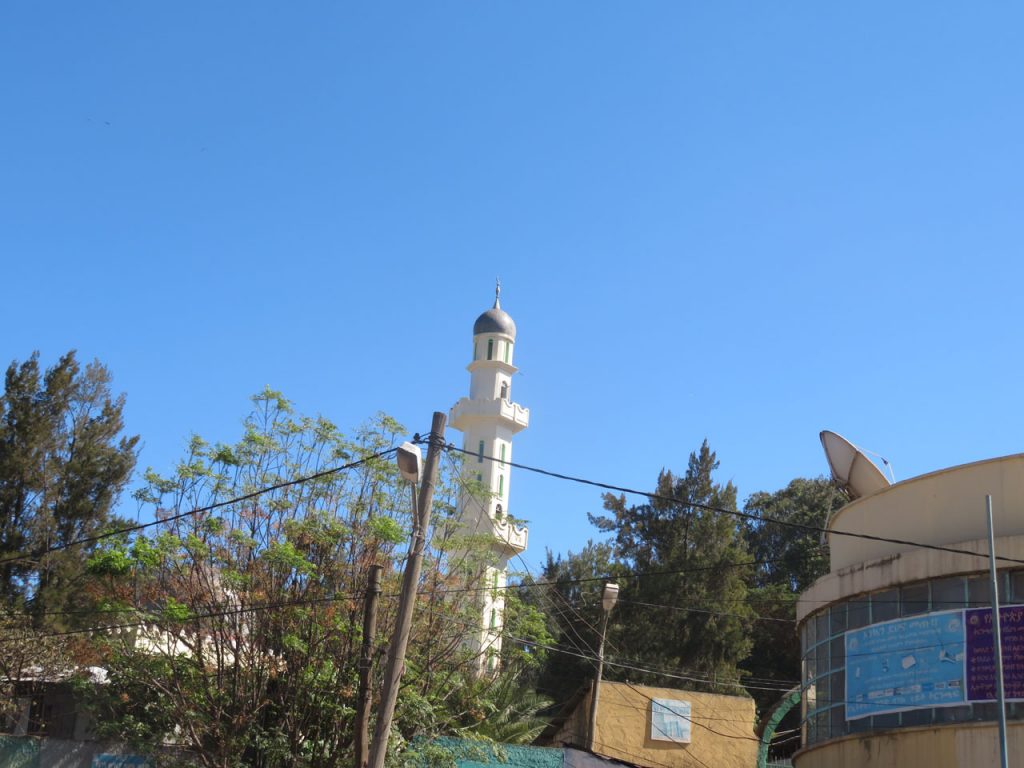
Ethiopia is 33% Islamic and 62%. ( mostly Orthodox) Christian. In general there are no conflicts over religion.
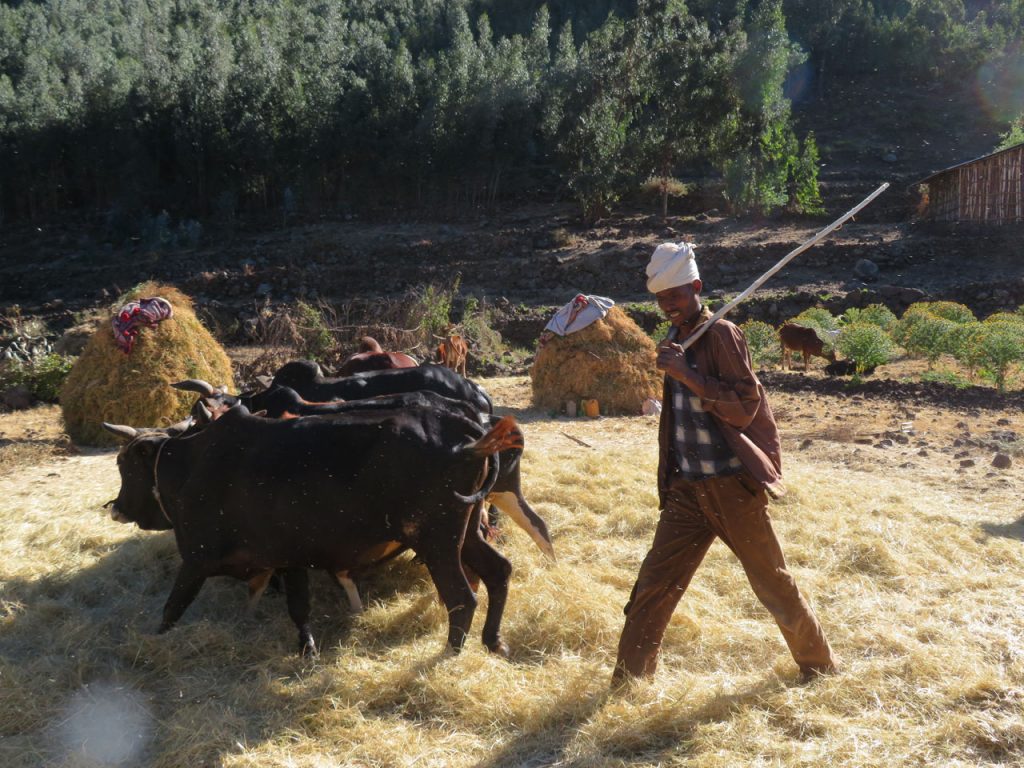
Wheat is pulverized into fine powder by the hooves of oxen.
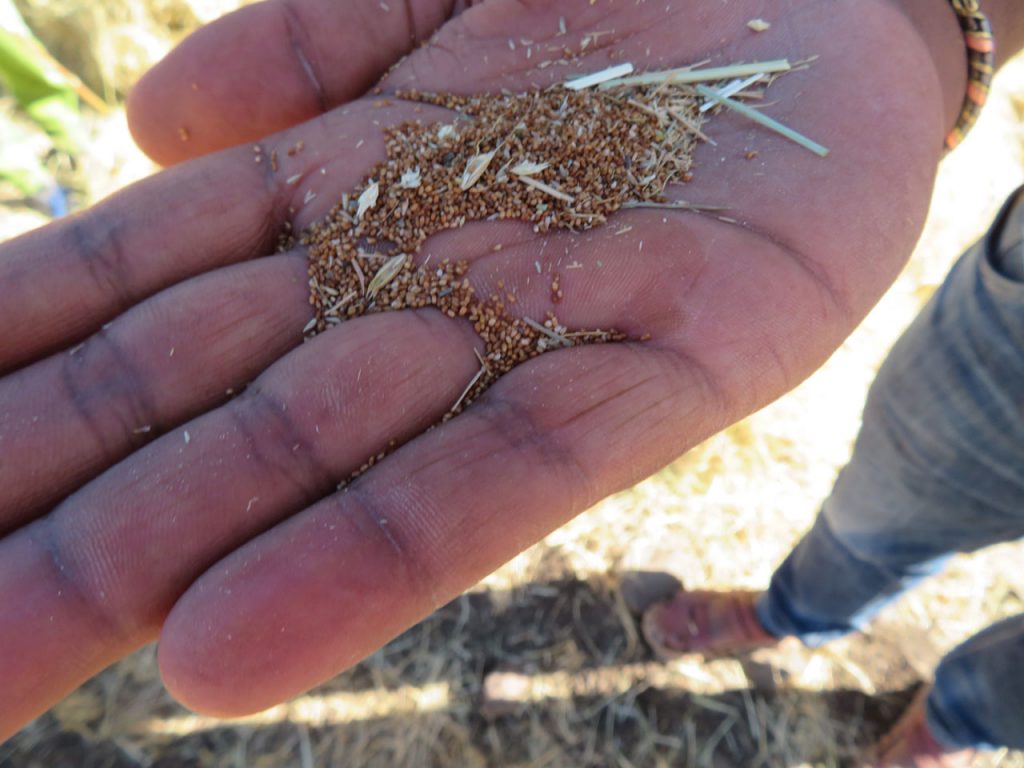
The powder is used to bake inerja – the ubiquitous bread that accompanies almost every meal in Ethiopia.

What appears to be a towel is the inerja. You use it to scoop up the meat and eat everything.

Evening in Kombolcha.
After many delays and thirty hours flying time via Dubai, I finally arrived in Addis Ababa late Monday night. Tuesday morning we started out on our two day road journey to Lalibela. The bandwidth is very low, it took me all night o upload the camel video. Just a few pictures today.
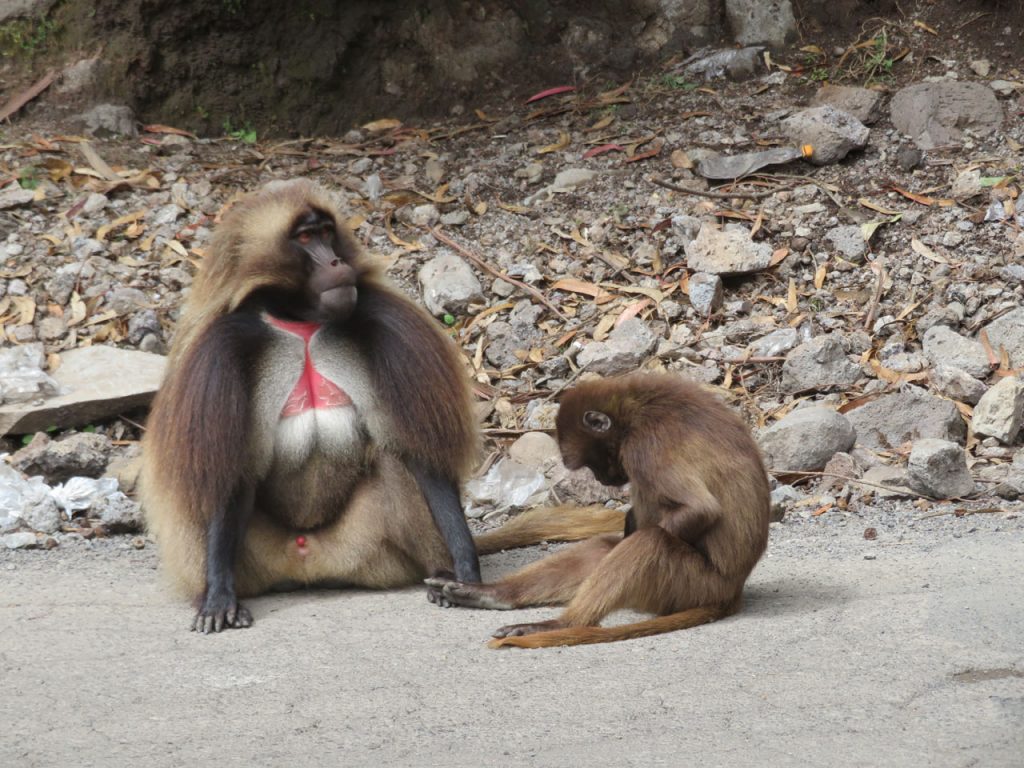
Gelada Monkeys, Known as the Bleeding Heart Baboon. They are not baboons, however.
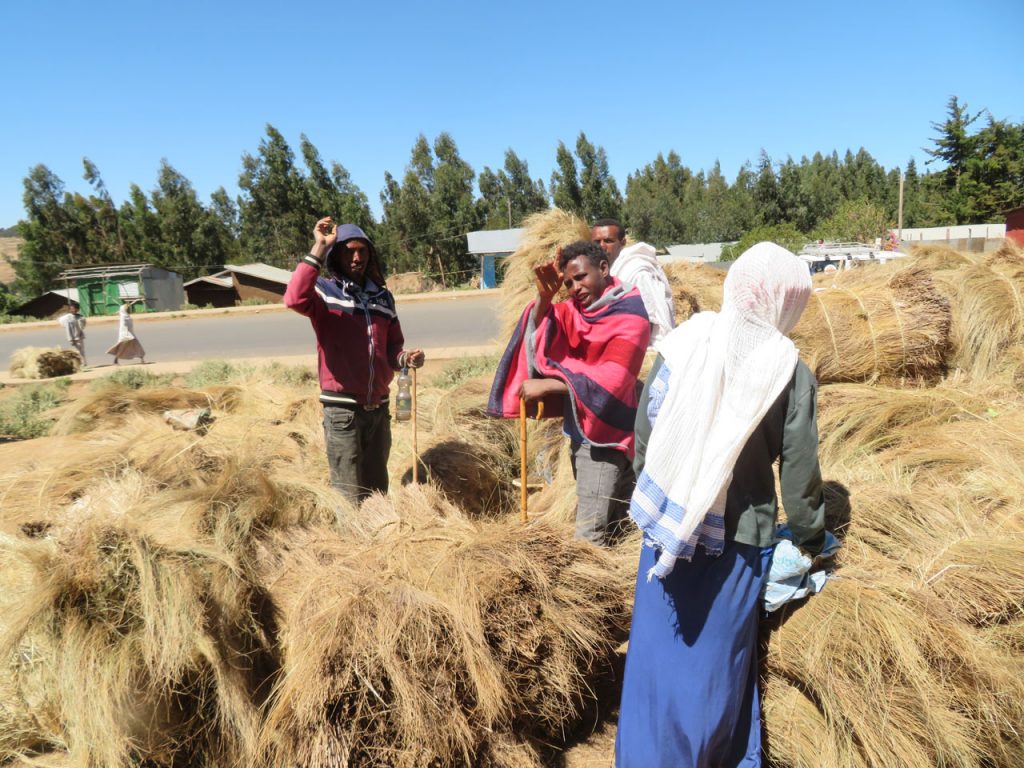
At A Roadside Donkey Market.Or A Hay Market ?

Impalas Or Gazelles Join Us For Lunch.

Strong Coffee Is Served !
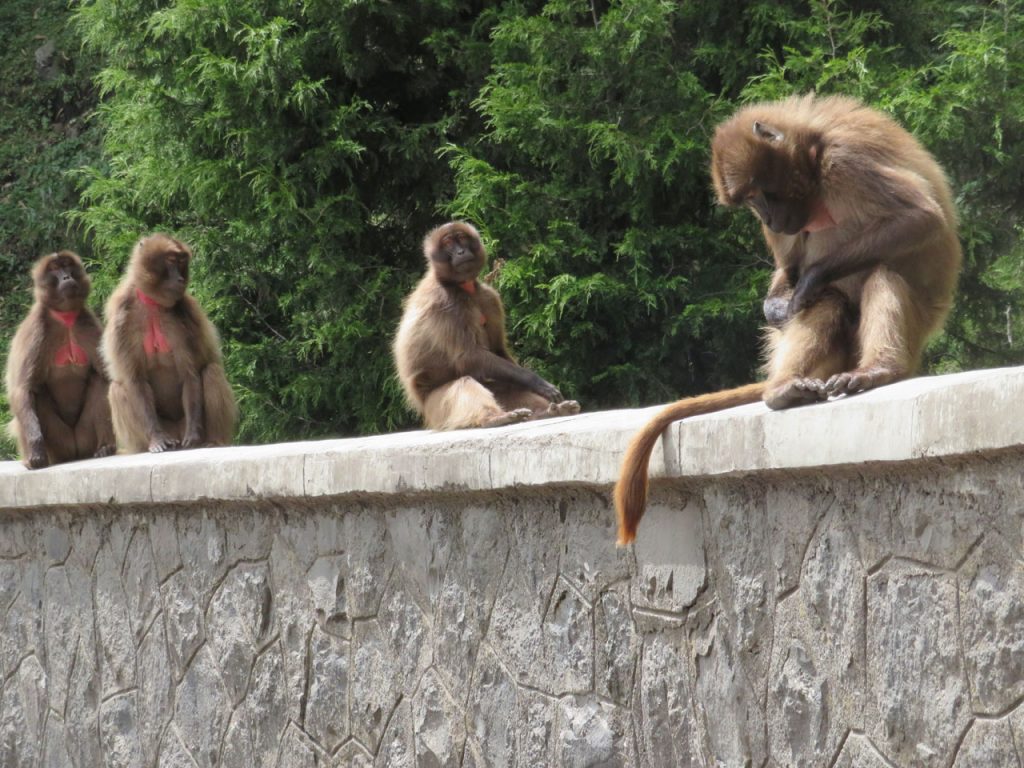
A Troop Of Geladas.

Trying To Learn Some Amharic.
In 1993, the Victoria Zoo became the Limbe Wildlife Centre through the partnership of the Pandrillus Foundation and the Cameroonian Ministry of Forestry and Wildlife. The LWC is a wildlife rehabilitation and conservation education center. The animals there were orphaned as a result of human-wildlife conflicts such as bushmeat hunting or the pet trade. These are major issues in Cameroon and throughout Africa. Animals are often killed both legally and illegally for meat in unsustainable ways, and the infants are kept as pets in unfit living conditions for wild species. When they are rescued by authorities and brought the LWC, the animals are treated by their veterinary team and the rehabilitation process starts as they are integrated into conspecific groups and monitored by their team of specialists. Their mission is based not only on rehabilitation and release, but on educating the population to change views and opinions on wildlife and conservation so that these animals will be safe in the wild for as long as possible.


To
accomplish this mission, the LWC is open to the public for visits. Most of the
visitors to the Centre are locals bringing their families to see the animals,
but occasionally international tourists such as myself pop in, and there is so
much for us to be impressed by.
Upon entering the sanctuary, every person greets you with warm hellos, hugs,
handshakes, and smiles. Once paying at the entrance, viewers can begin walking
the tourist trail and viewing animals. The first visible animals are 3 family
groups of gorillas and their impressively giant silverback males. They were the
show stealer in my ape-loving heart, but there were so many other amazing
animals as well.






Past the gorillas are two huge groups of chimpanzees (totaling 44 individuals). They are the liveliness of the LWC, shrieking, chasing, playing, and grooming. Just sitting in their presence could keep someone engaged for hours. There were many groups of guenons and mangabeys throughout the sanctuary, mostly plotting on how to steal small items such as food or toys from onlookers.



Another
amazing group of animals are the “Papio” group, meaning the baboons, mandrills,
and drills. The members of this section became known to me as the most
underrated primates. All three species are beautiful in coloring and huge in
size (for monkeys). Not to mention they live in large multi-male and
multi-female groups with very interesting social dynamics and rules that
control everything from eating to grooming to space use.
Additionally, at the Centre there are non-primate animals native to Cameroon
such as a Nile crocodile (Crocodylus niloticus), two dwarf crocodiles (Osteolaemus
tetraspis), a python (Python sebae), a bay duiker (Cephalophus
dorsalis), a blue duiker (Philantomba monticola), a bushbuck (Tragelaphus
scriptus) and an African civet (Civettictis civetta). These animals
are often seen as the stars of the show, especially the crocodiles being so
ancient and amazing.


Before leaving, one has the opportunity to check out the educational building to learn about the various species and the Centre’s history. There is also a great little gift shop with plenty of handmade items to help support the Centre. For lunch, there is a delicious restaurant within the Centre called Arne’s cafe. There you can get the most delicious veggie burger on the planet. It is definitely worth having a meal there.

The LWC does a lot more than just house animals, a huge amount of their work is in educating the public through visits, school programs, and community outreach. They are leading the fight in Cameroon for conservation and animal welfare, and are worth the time to visit, volunteer, or spread the message. If you are interested in helping with conservation there, the LWC accepts donations as well as volunteers. Give some resources or time to help these animals that can’t speak for themselves!
TotalAdventure does not currently have adventures in Cameroon, but we invite Cameroon companies to apply. TotalAdventure has some great trips to South Africa https://bit.ly/2WPNkPb
